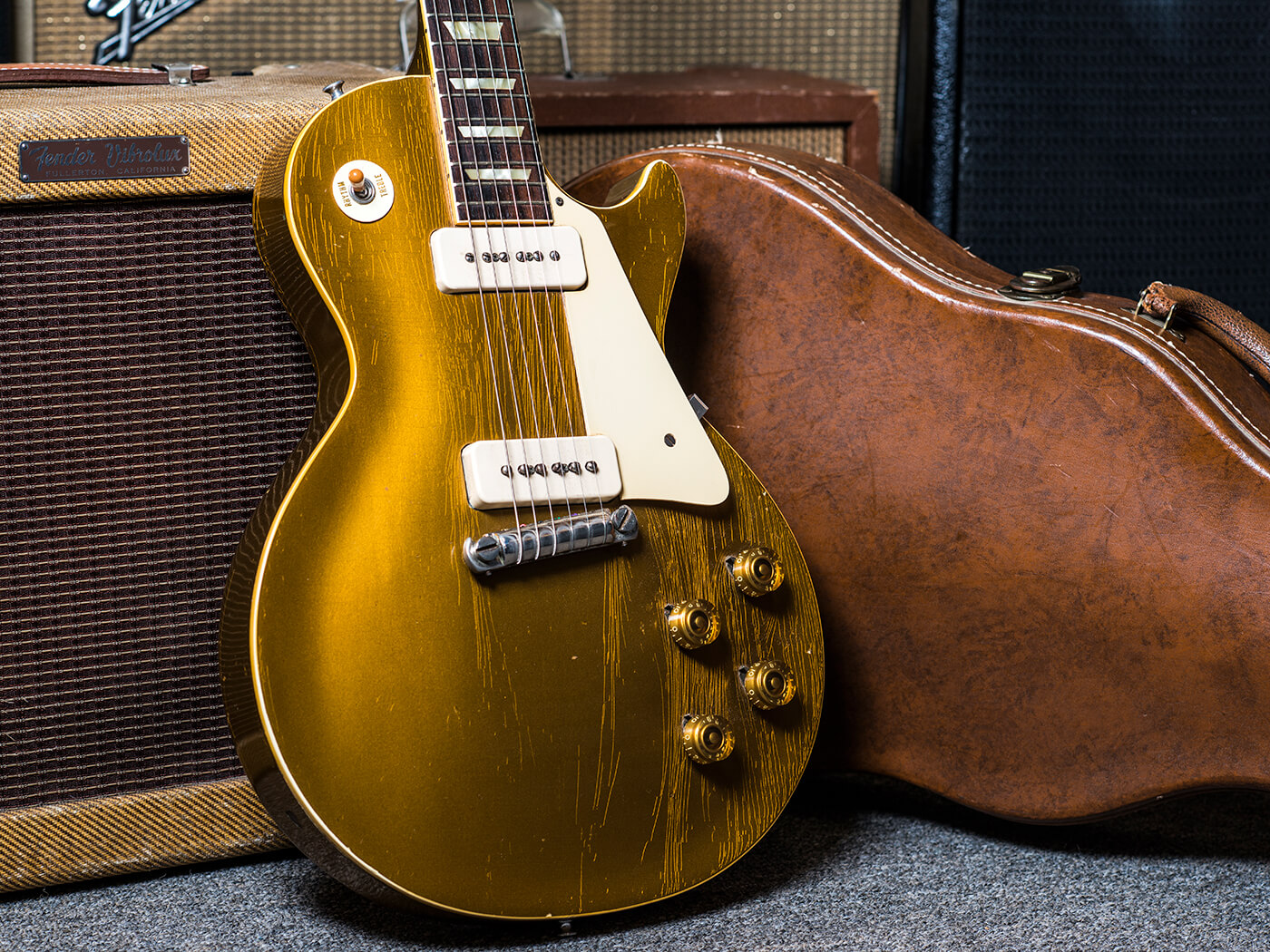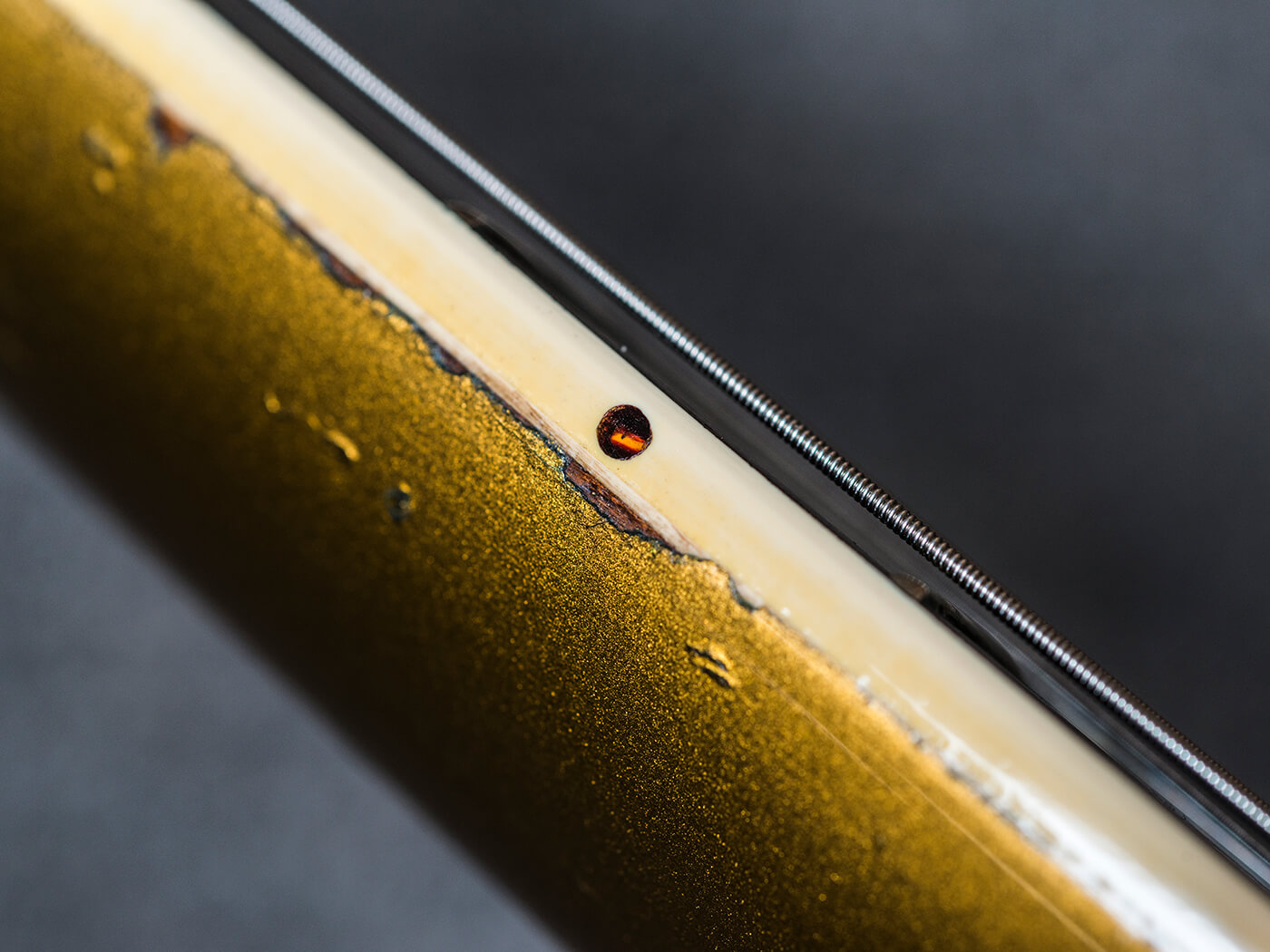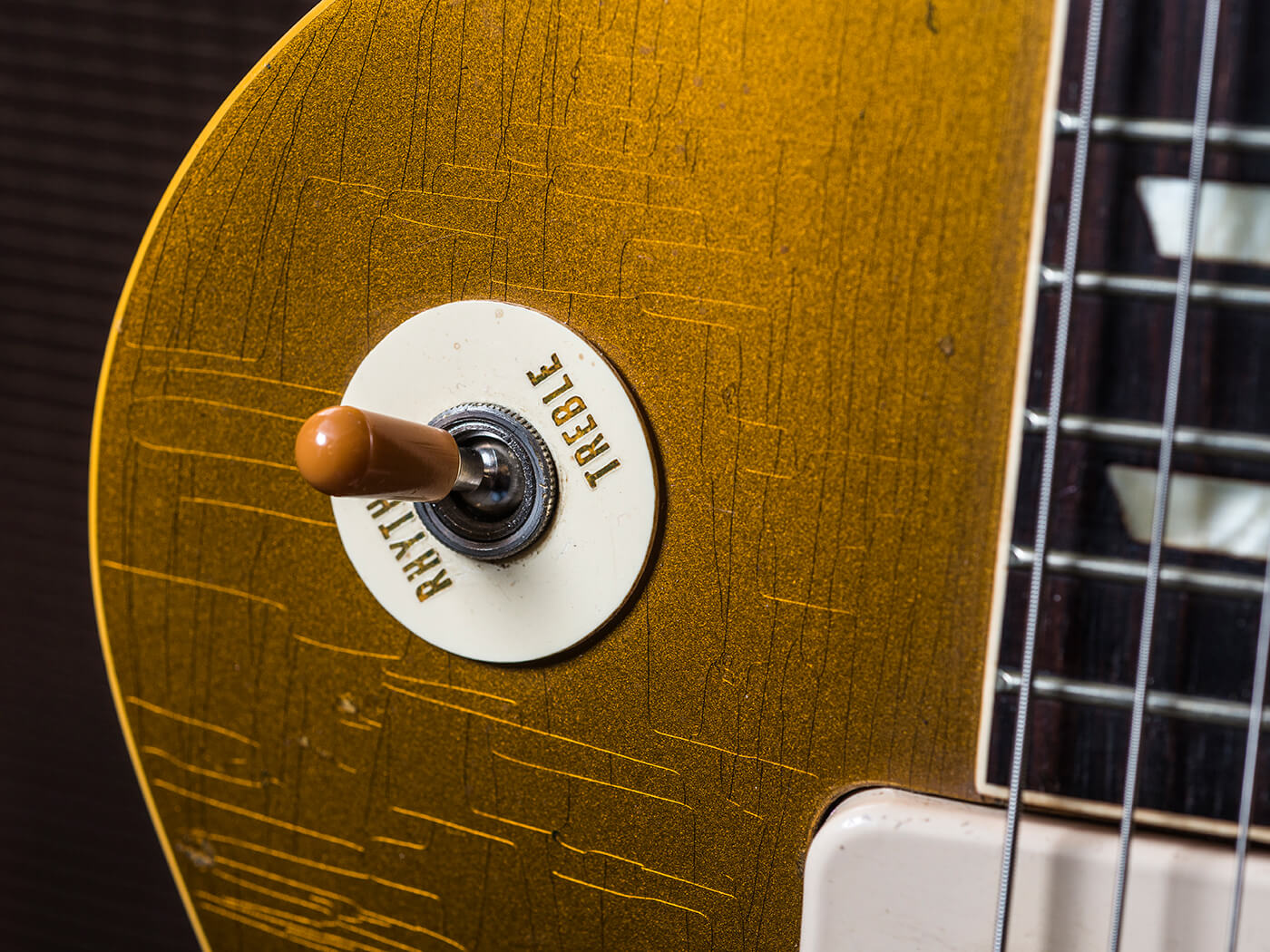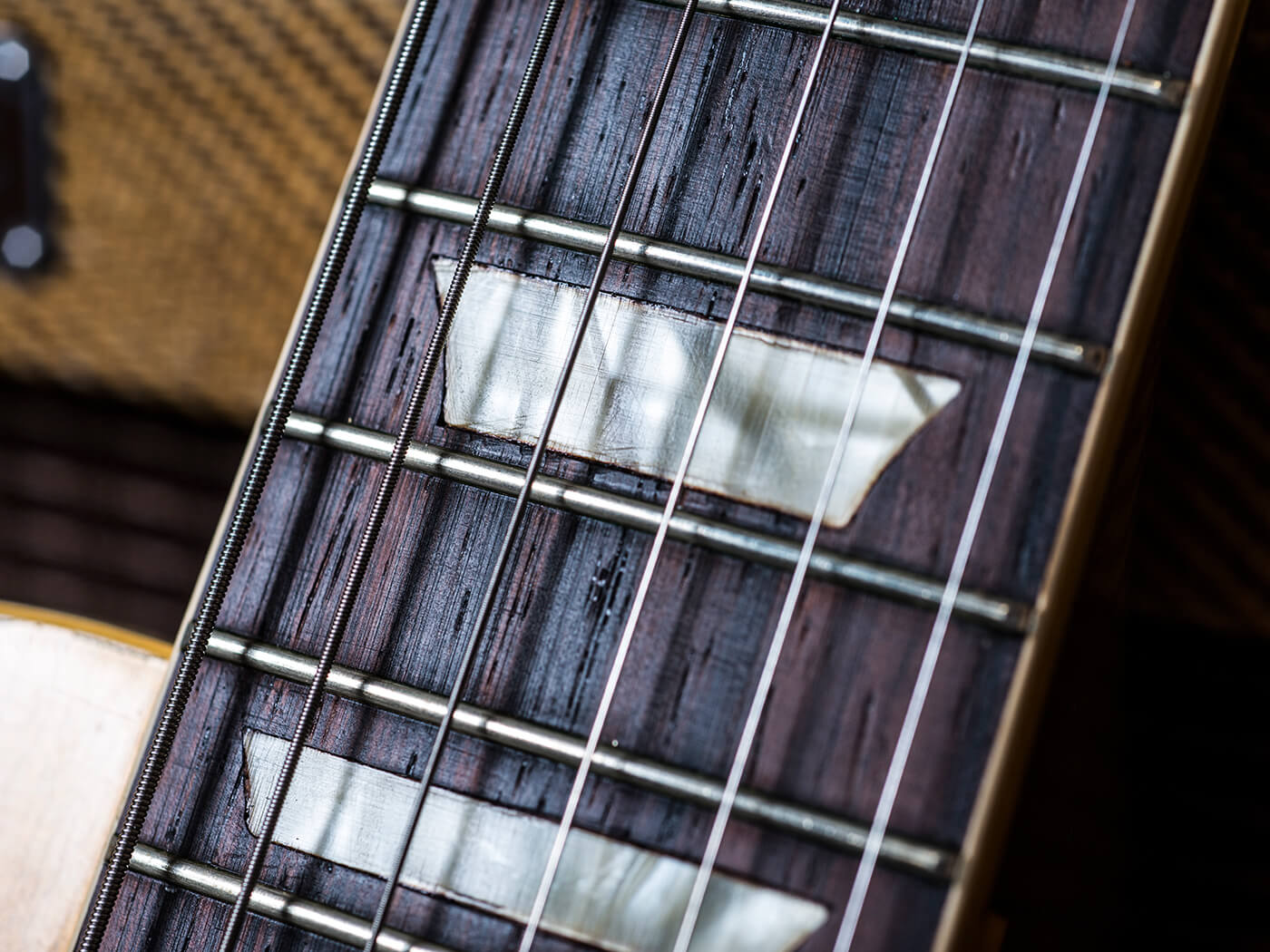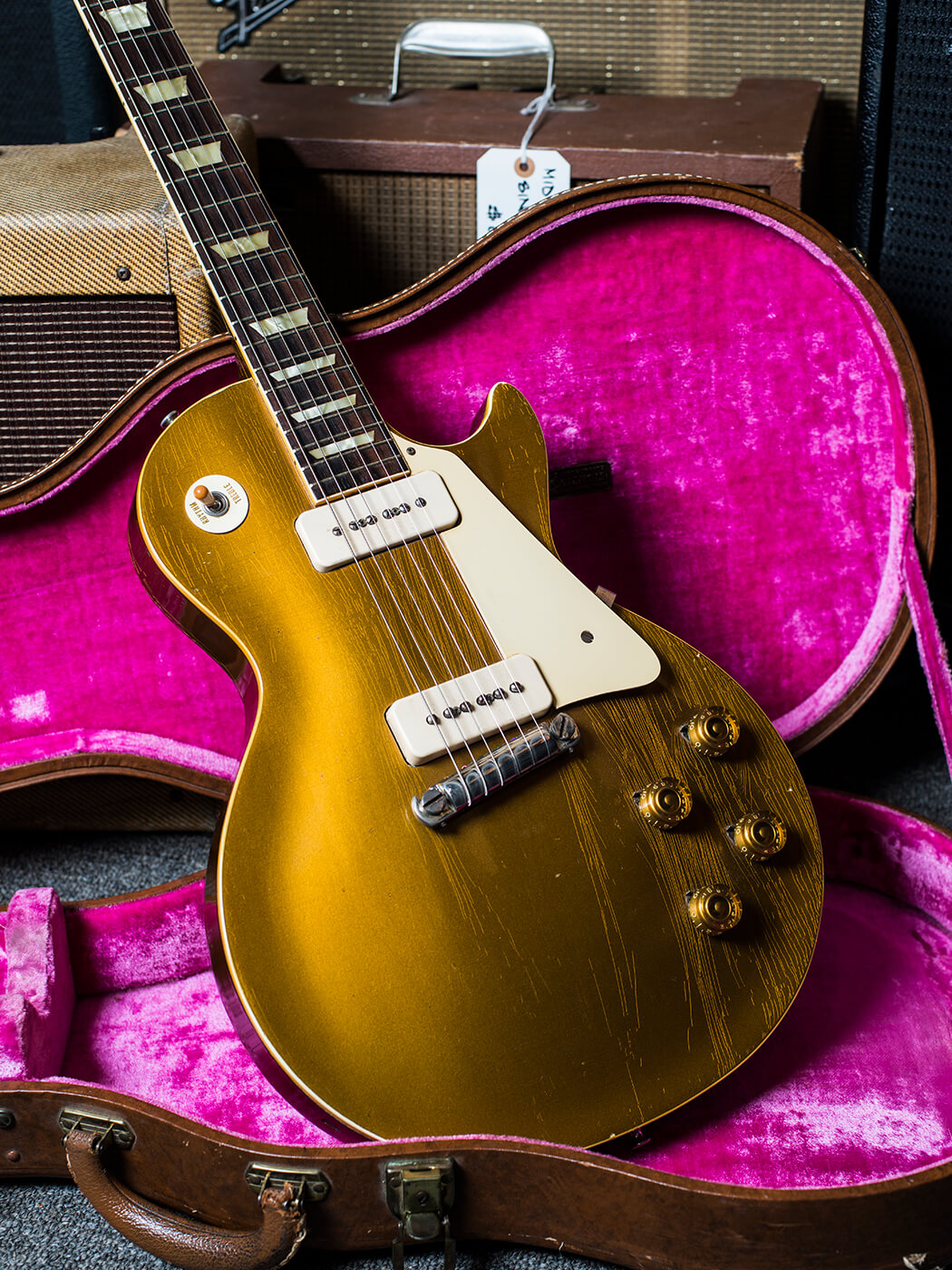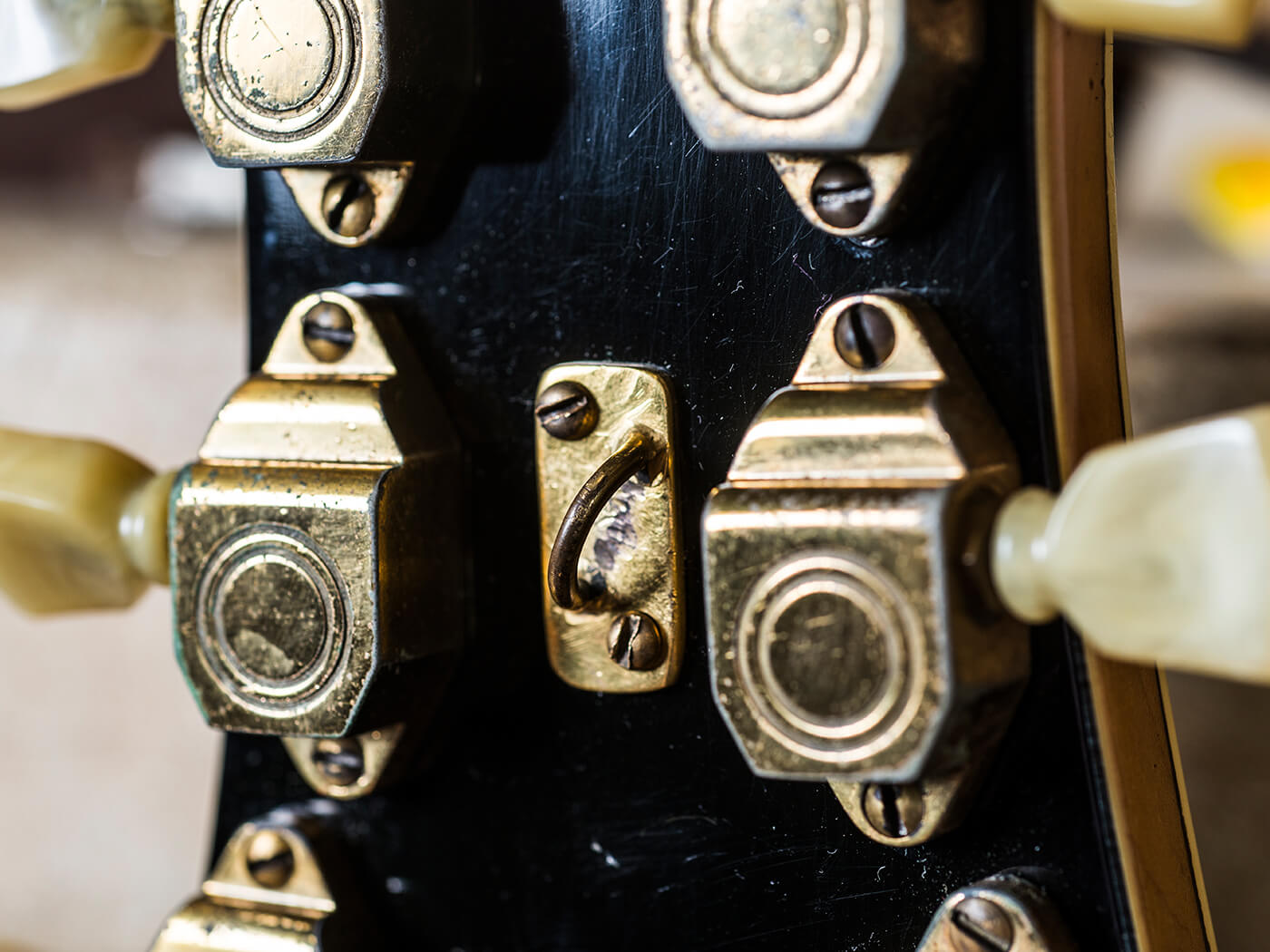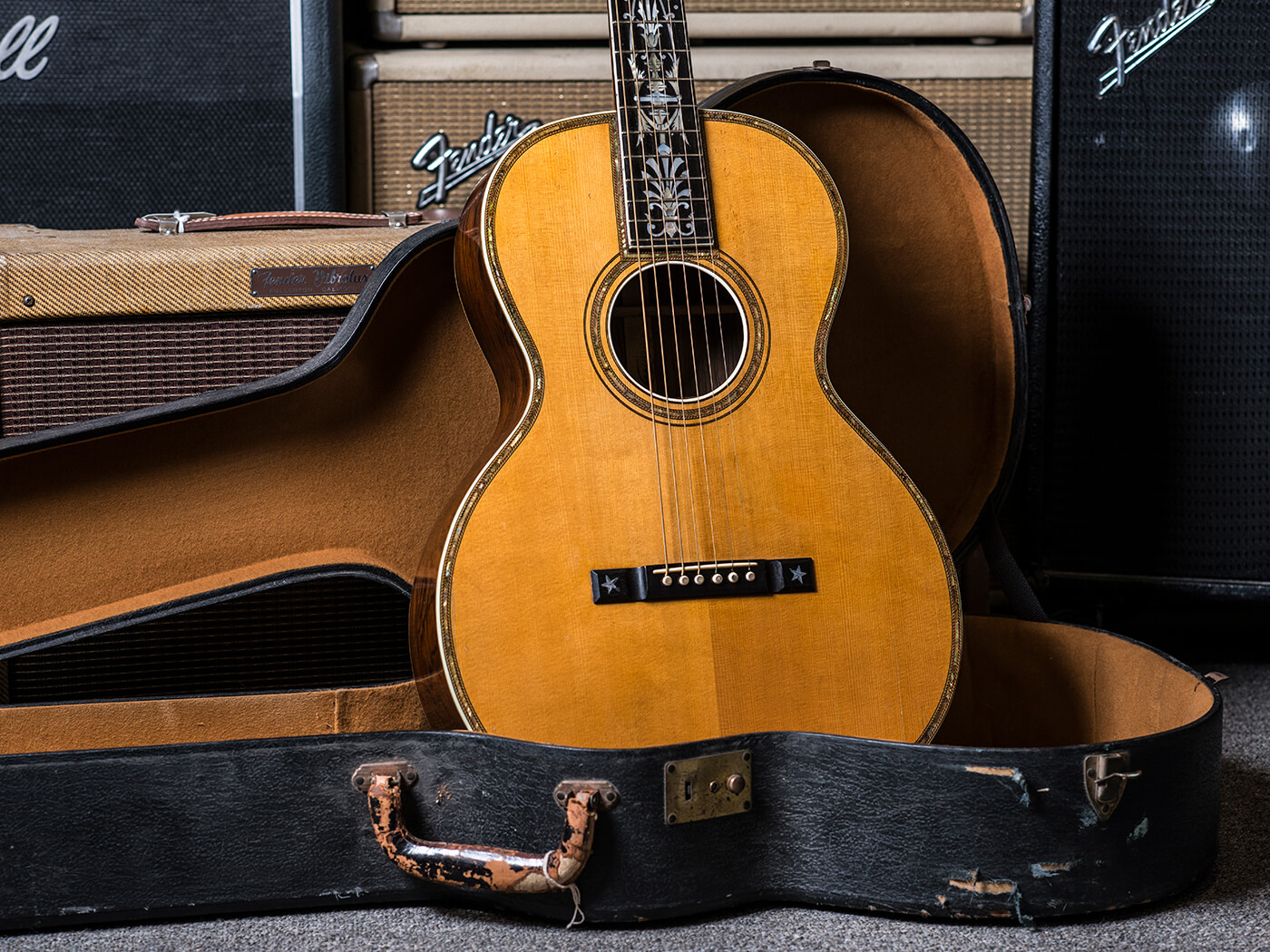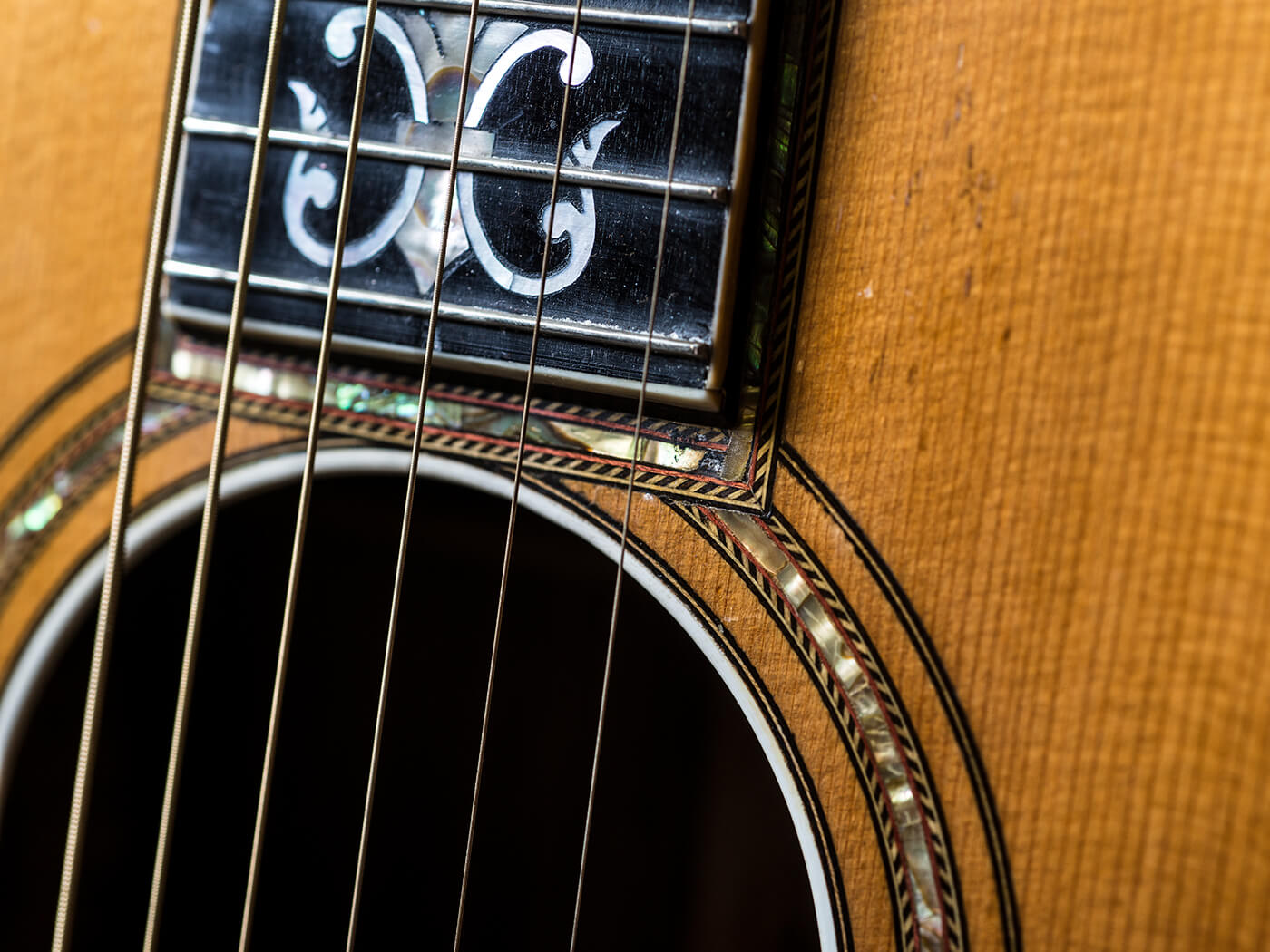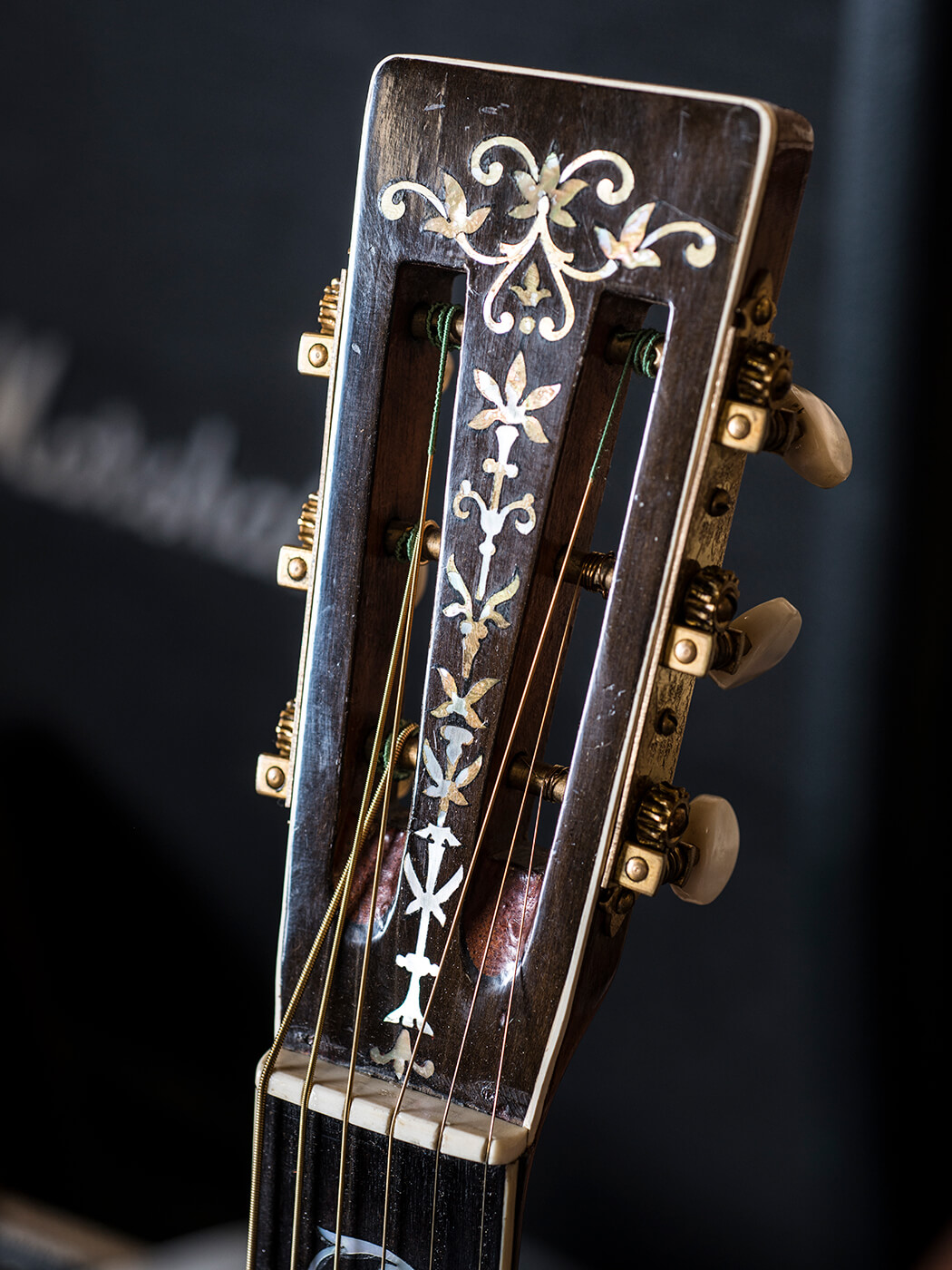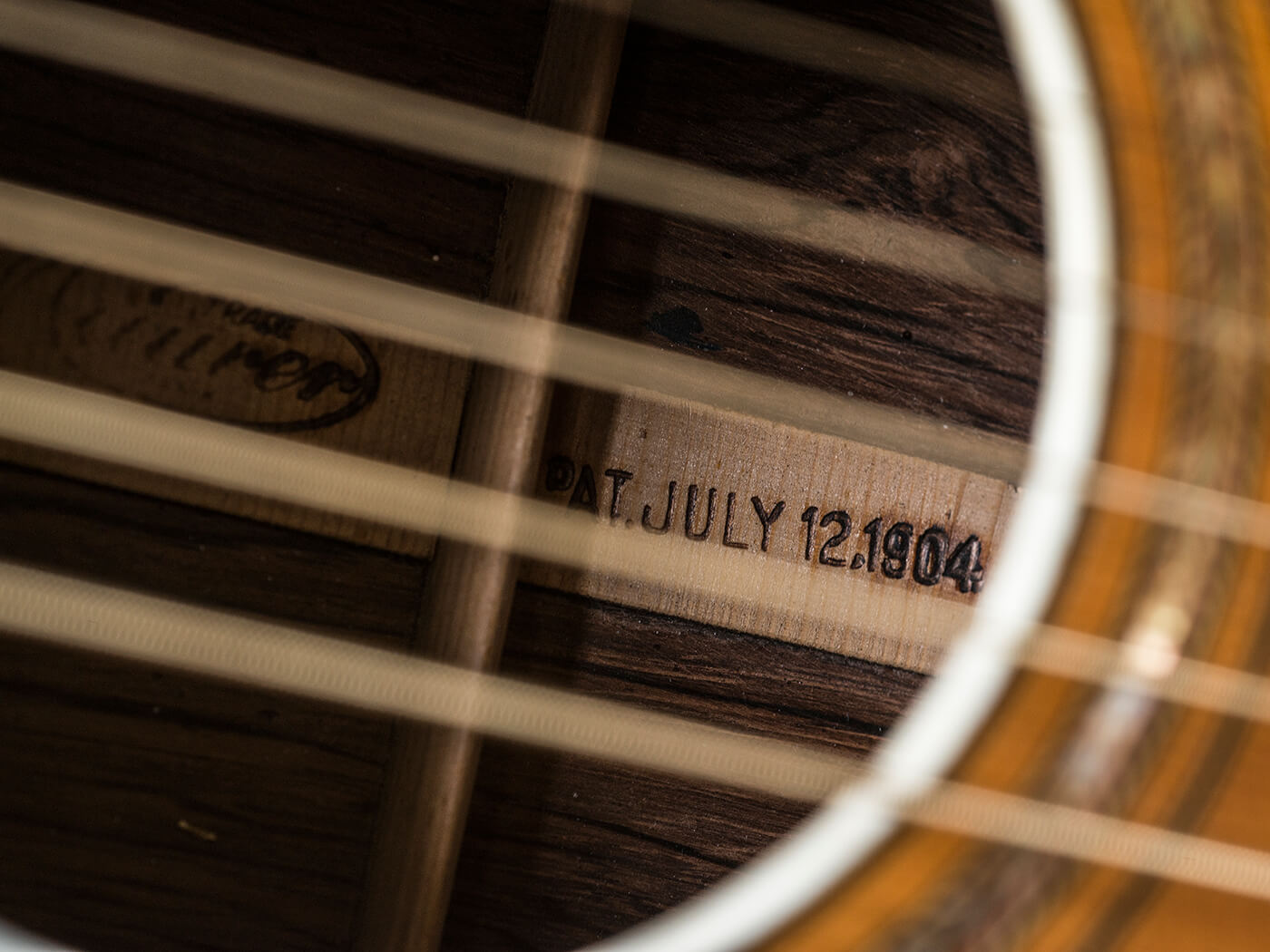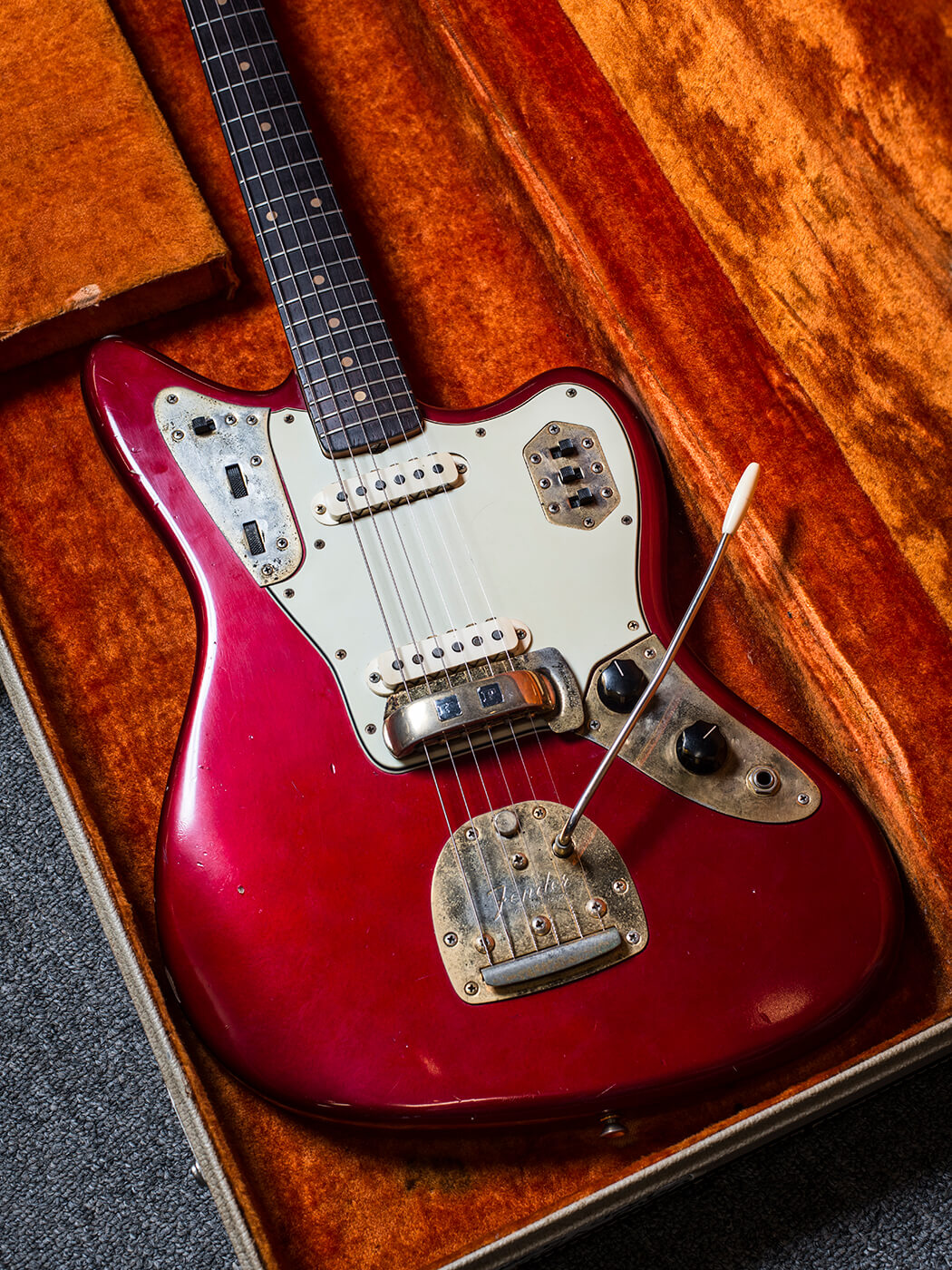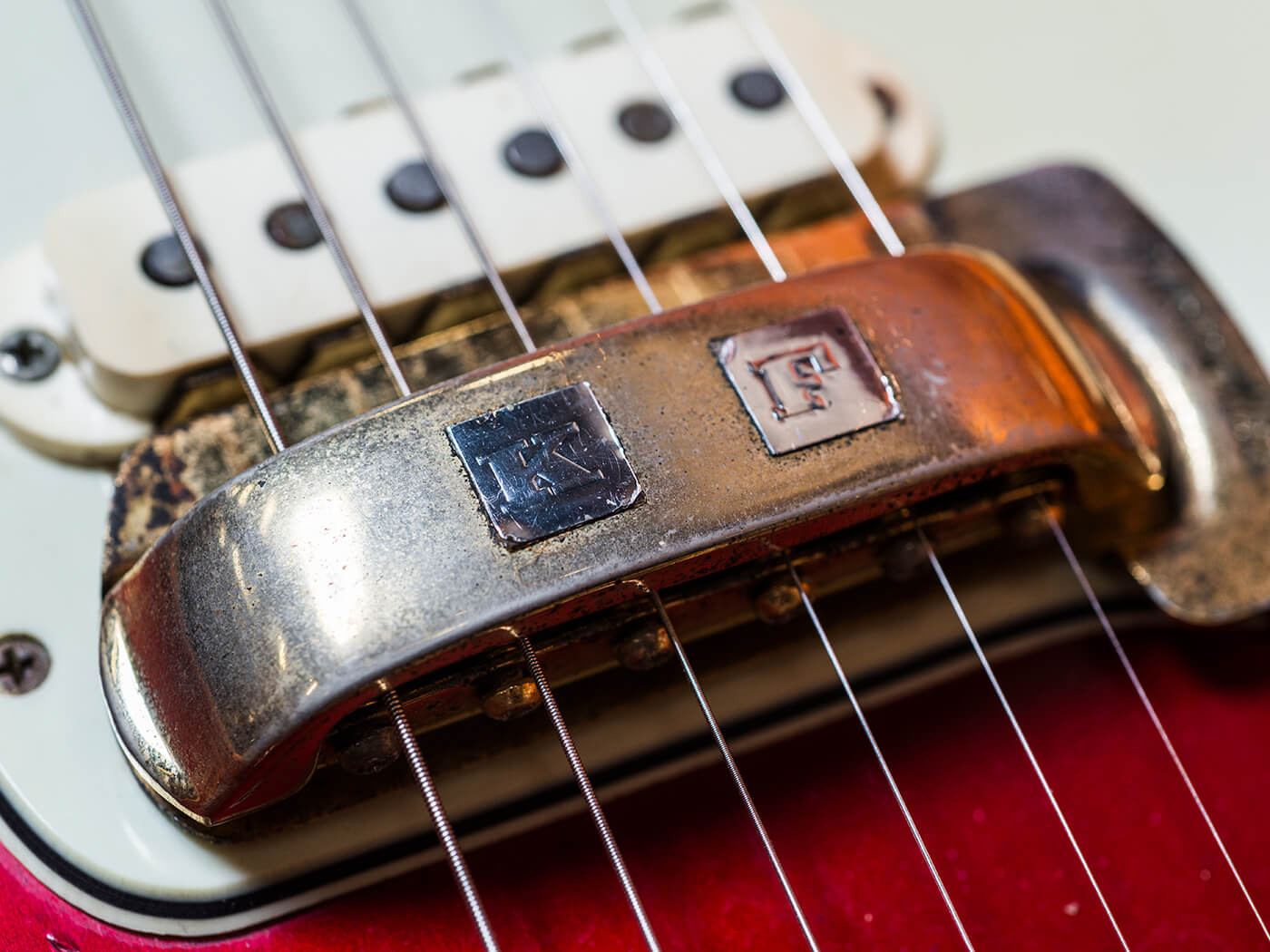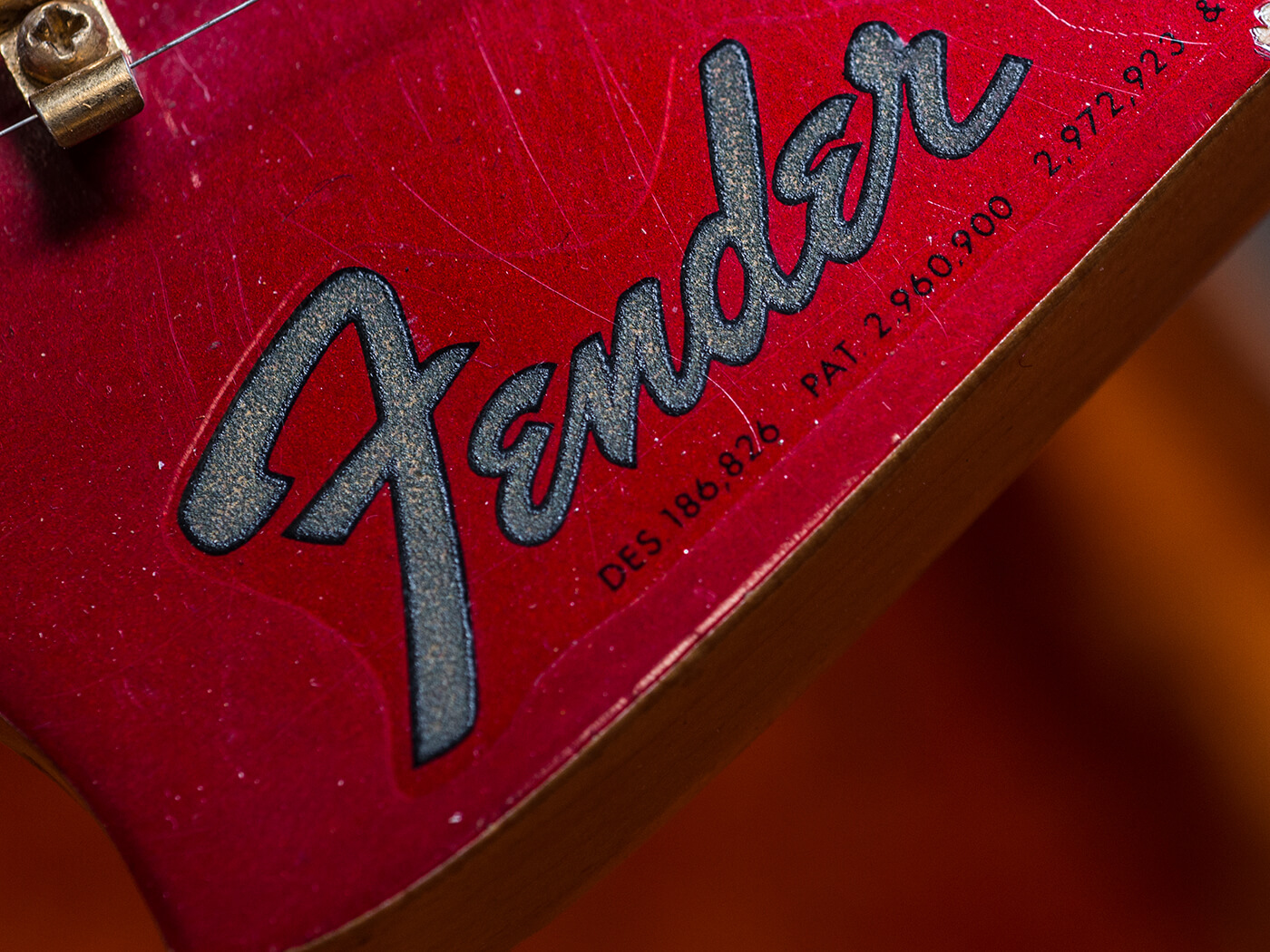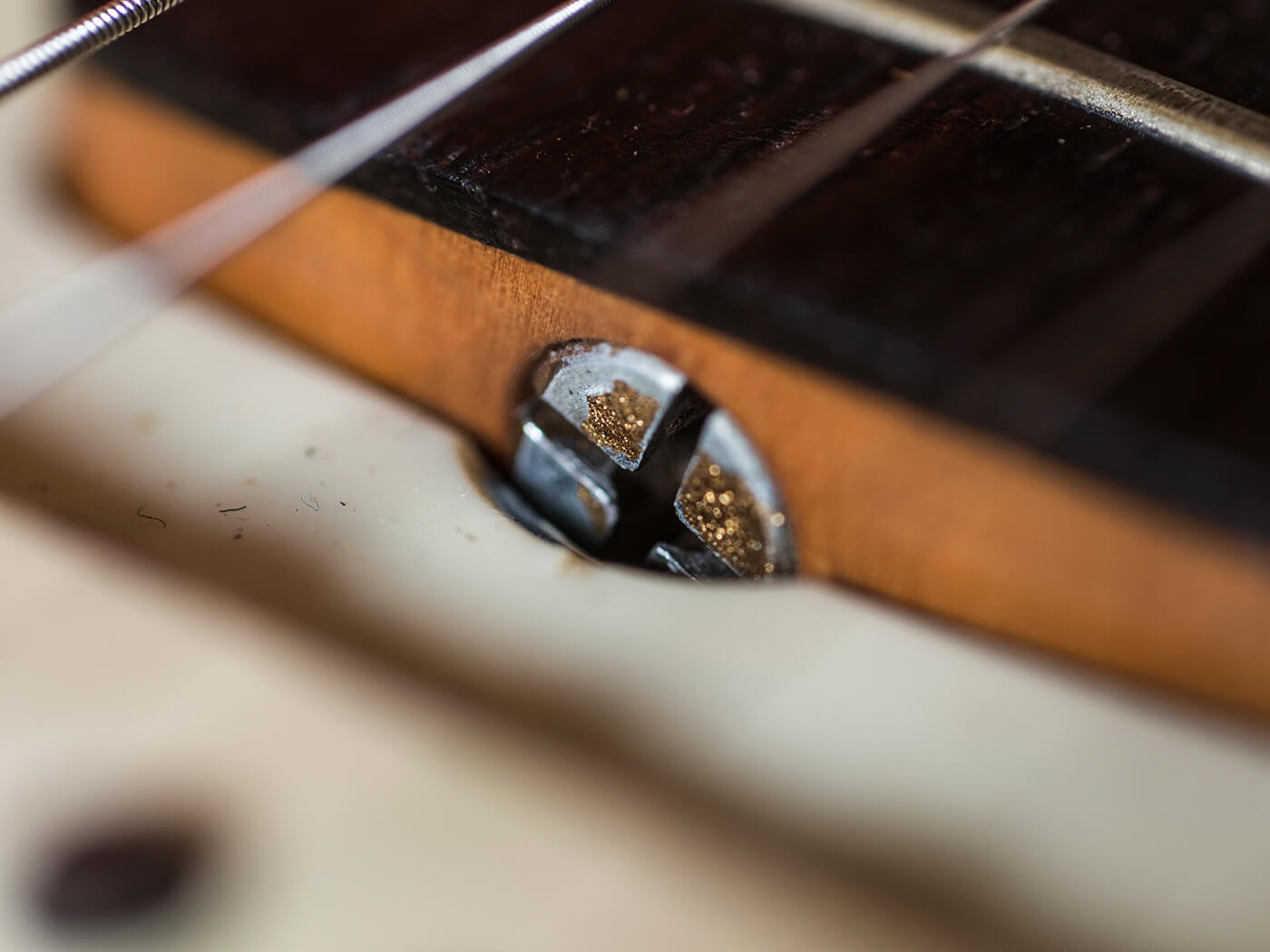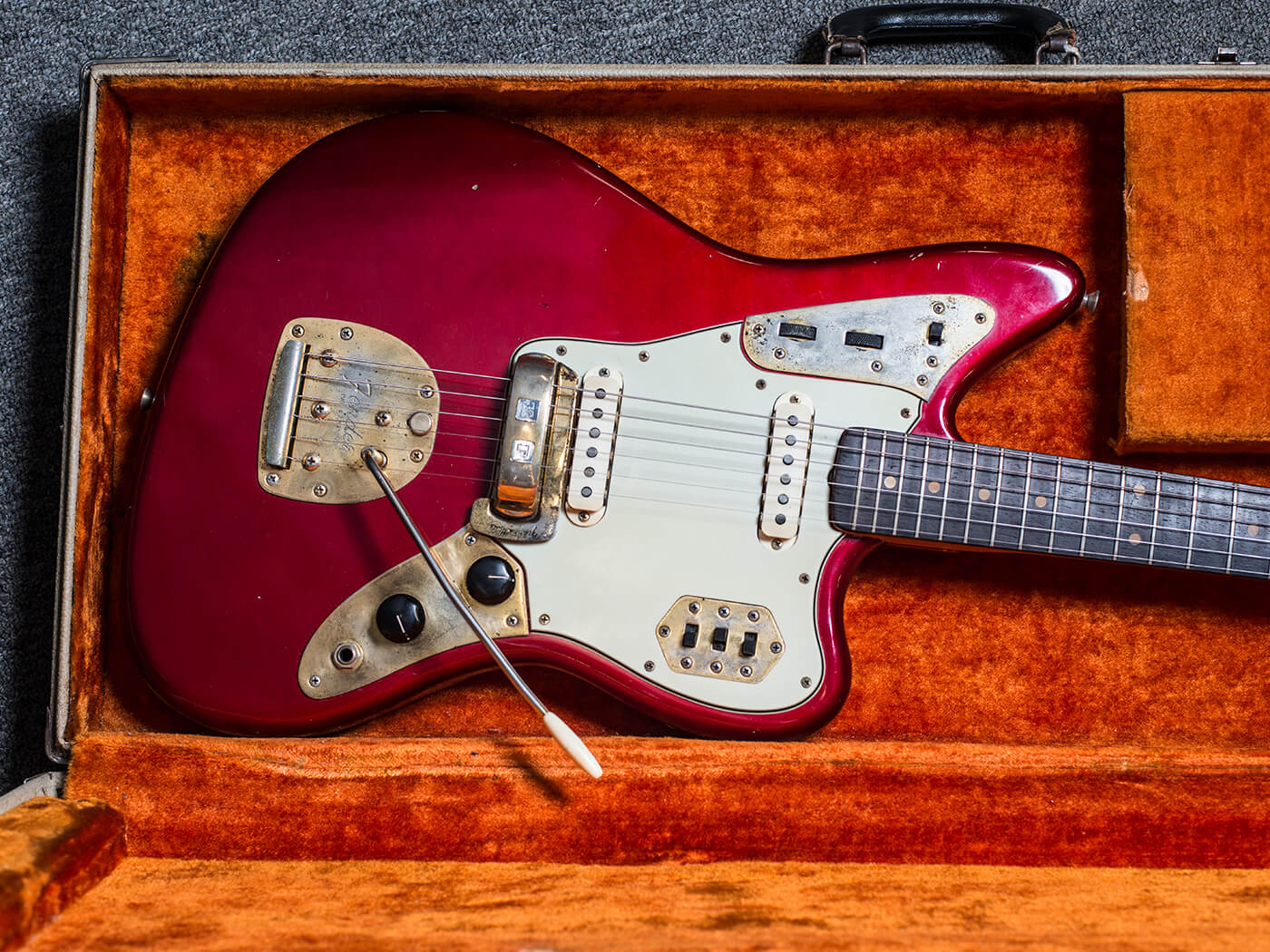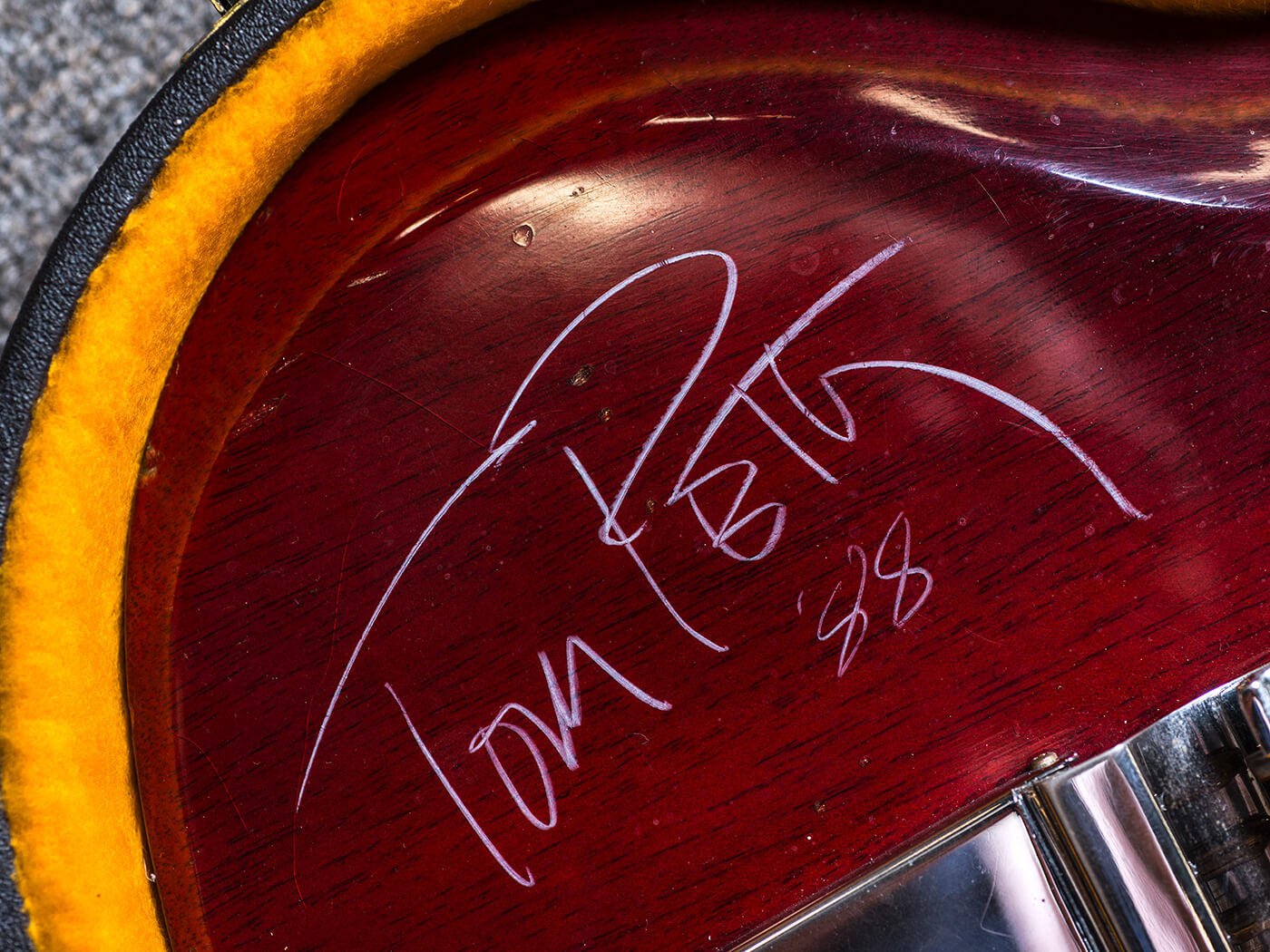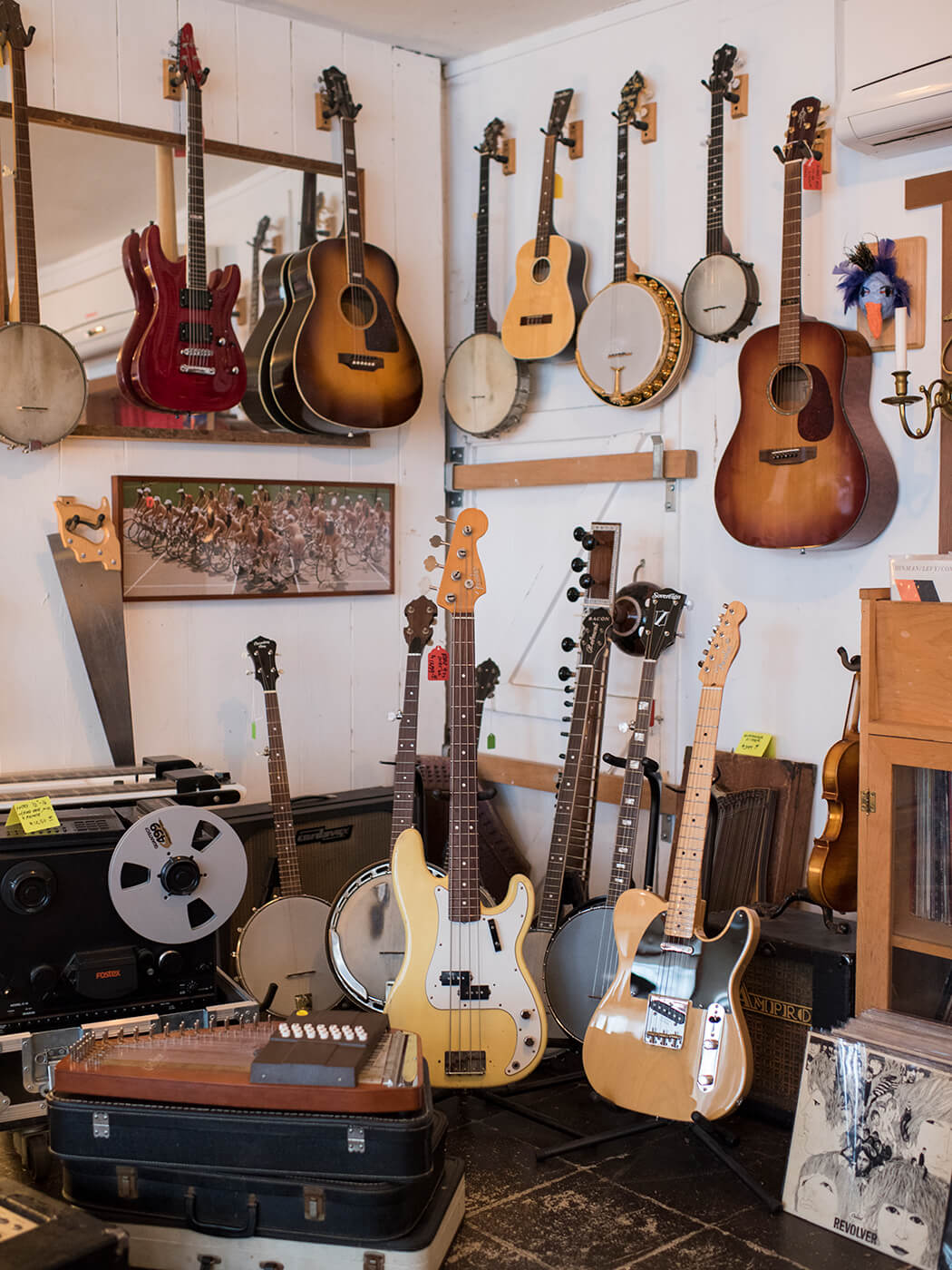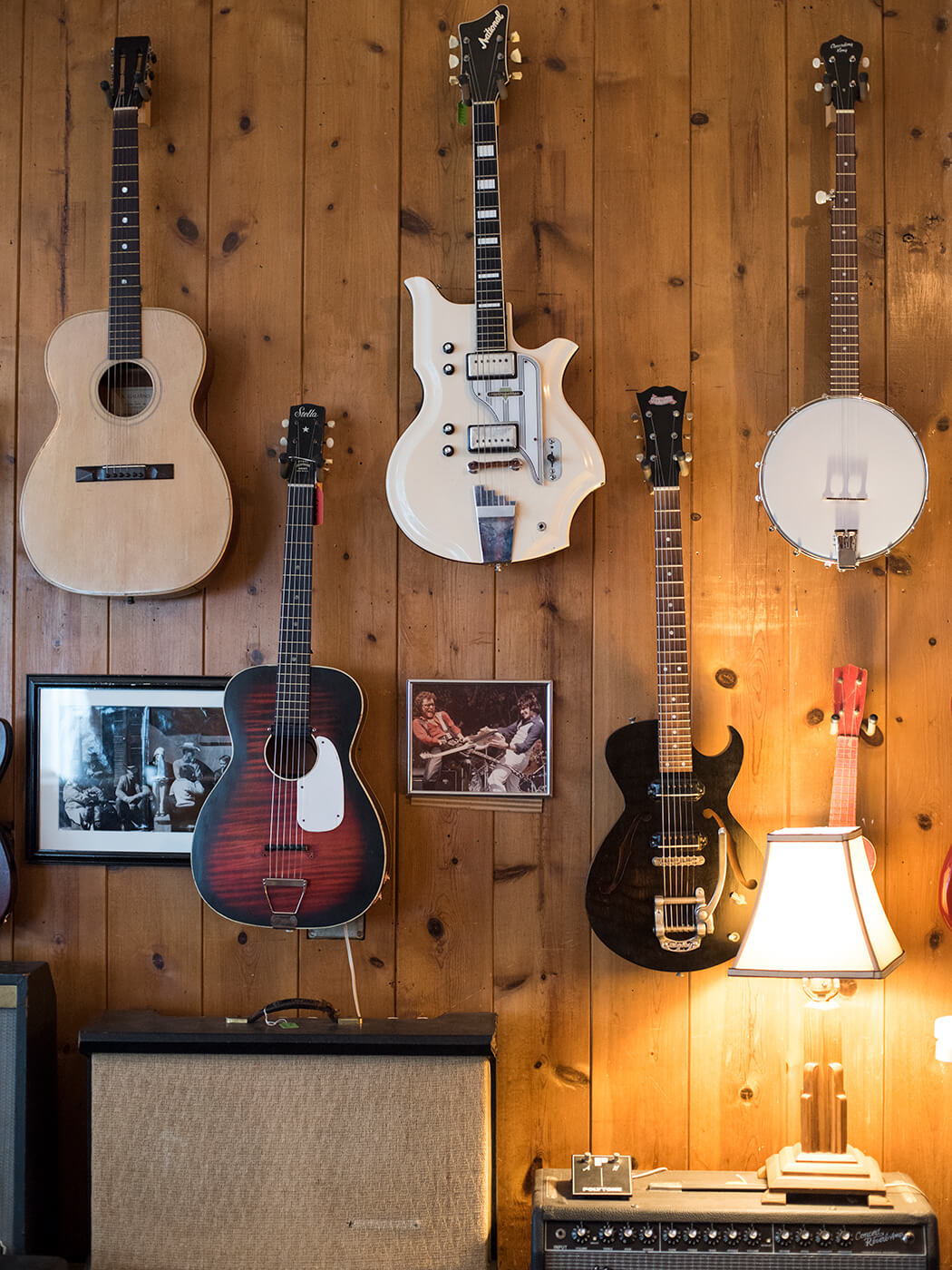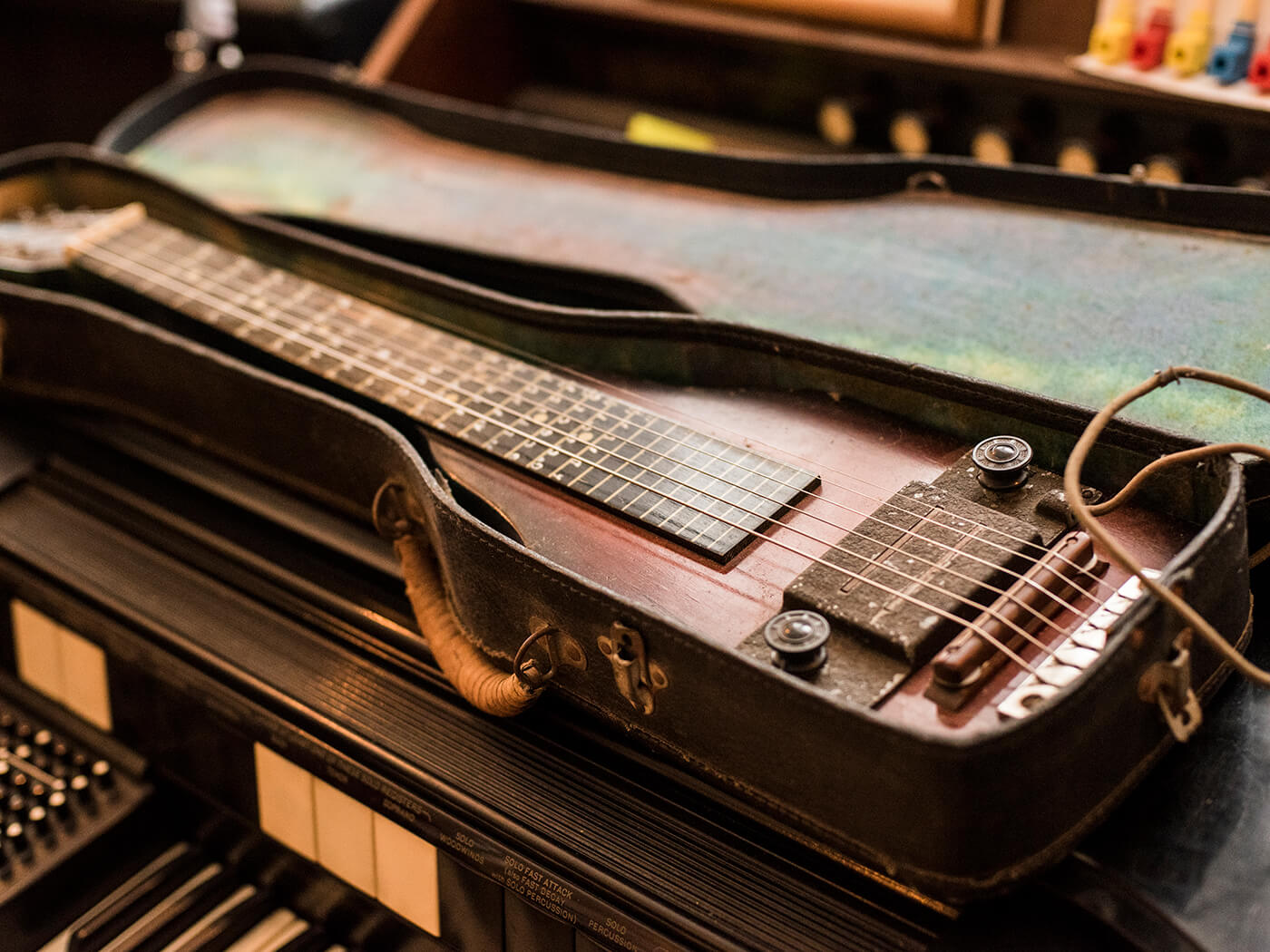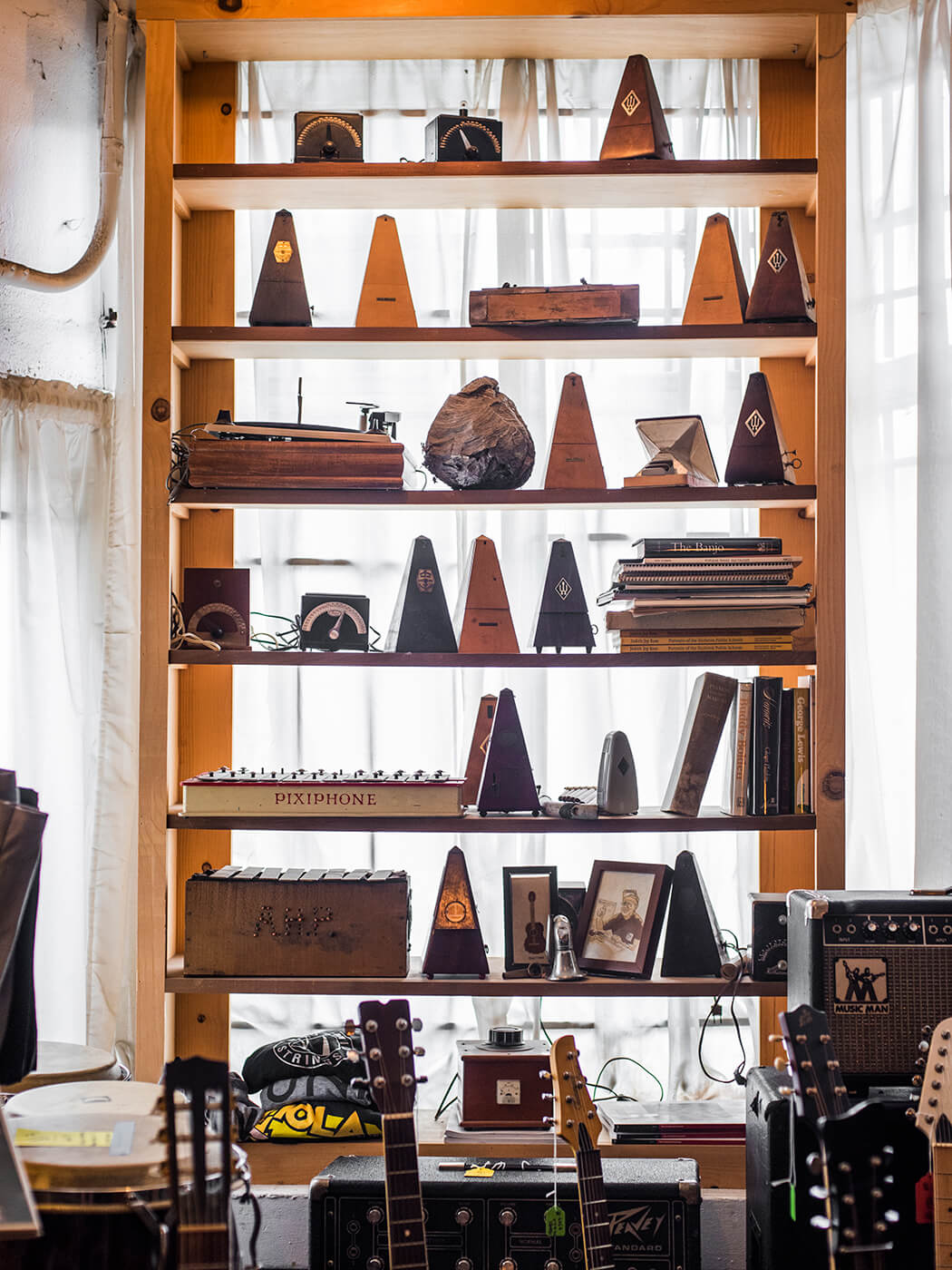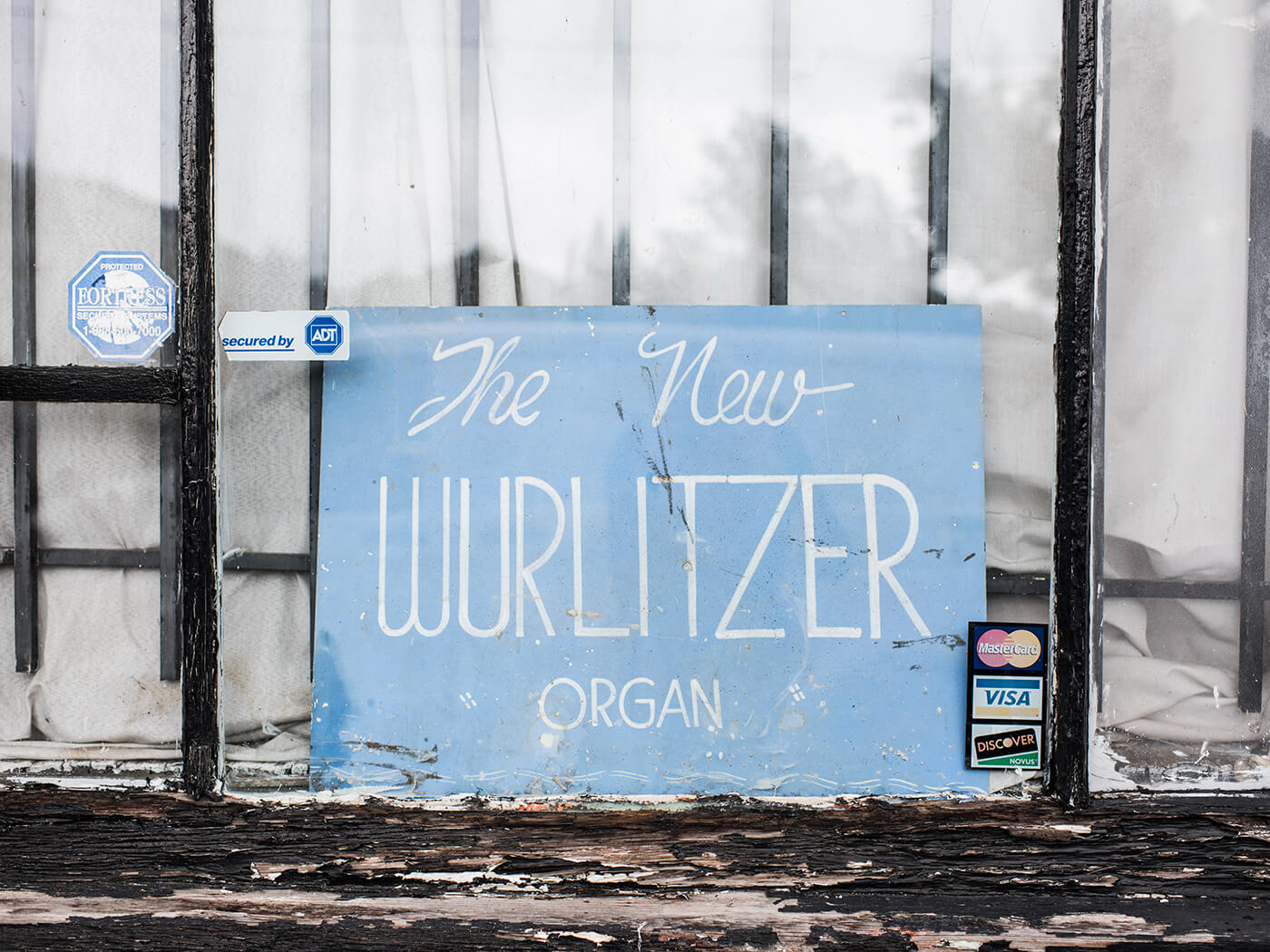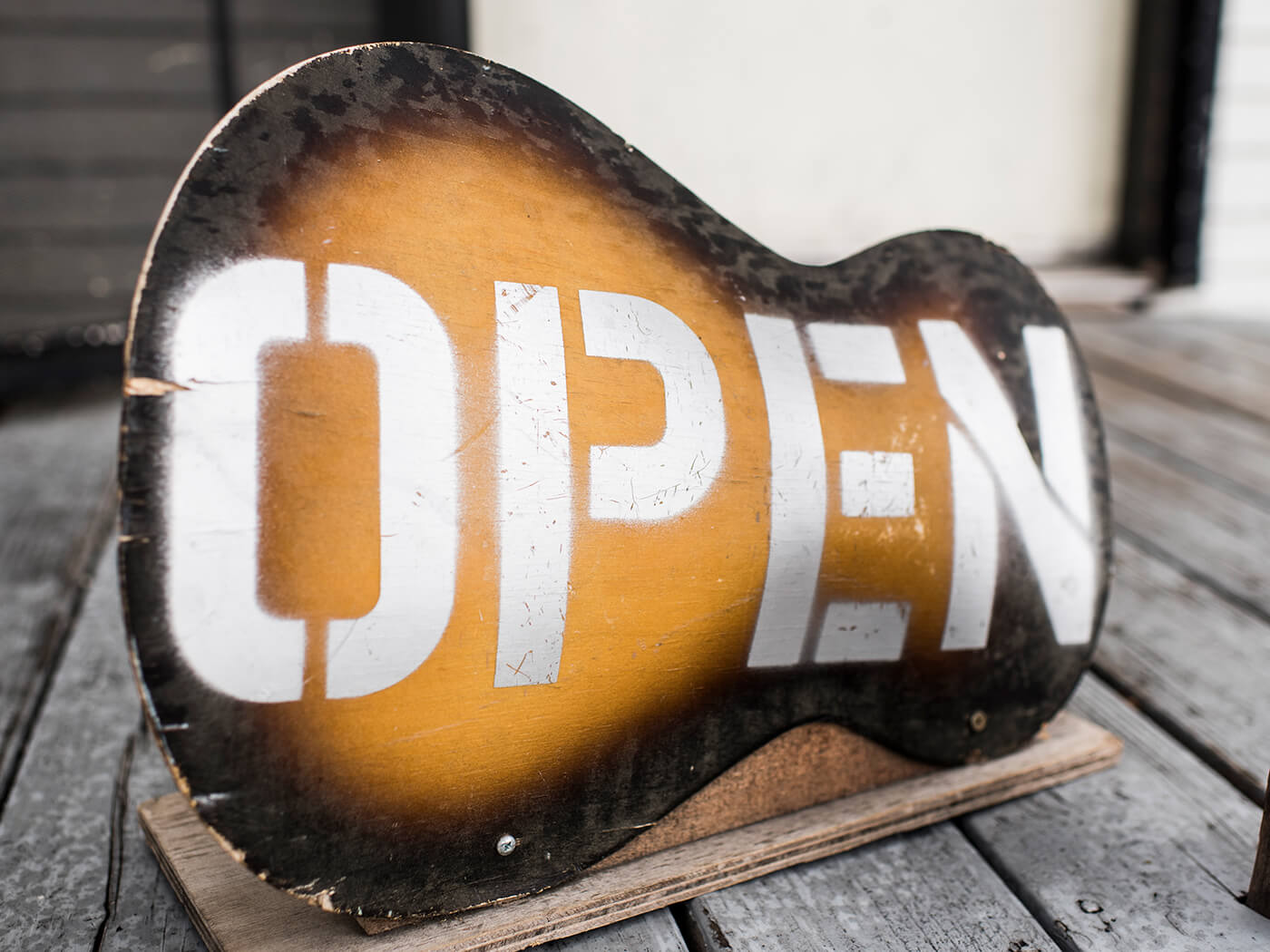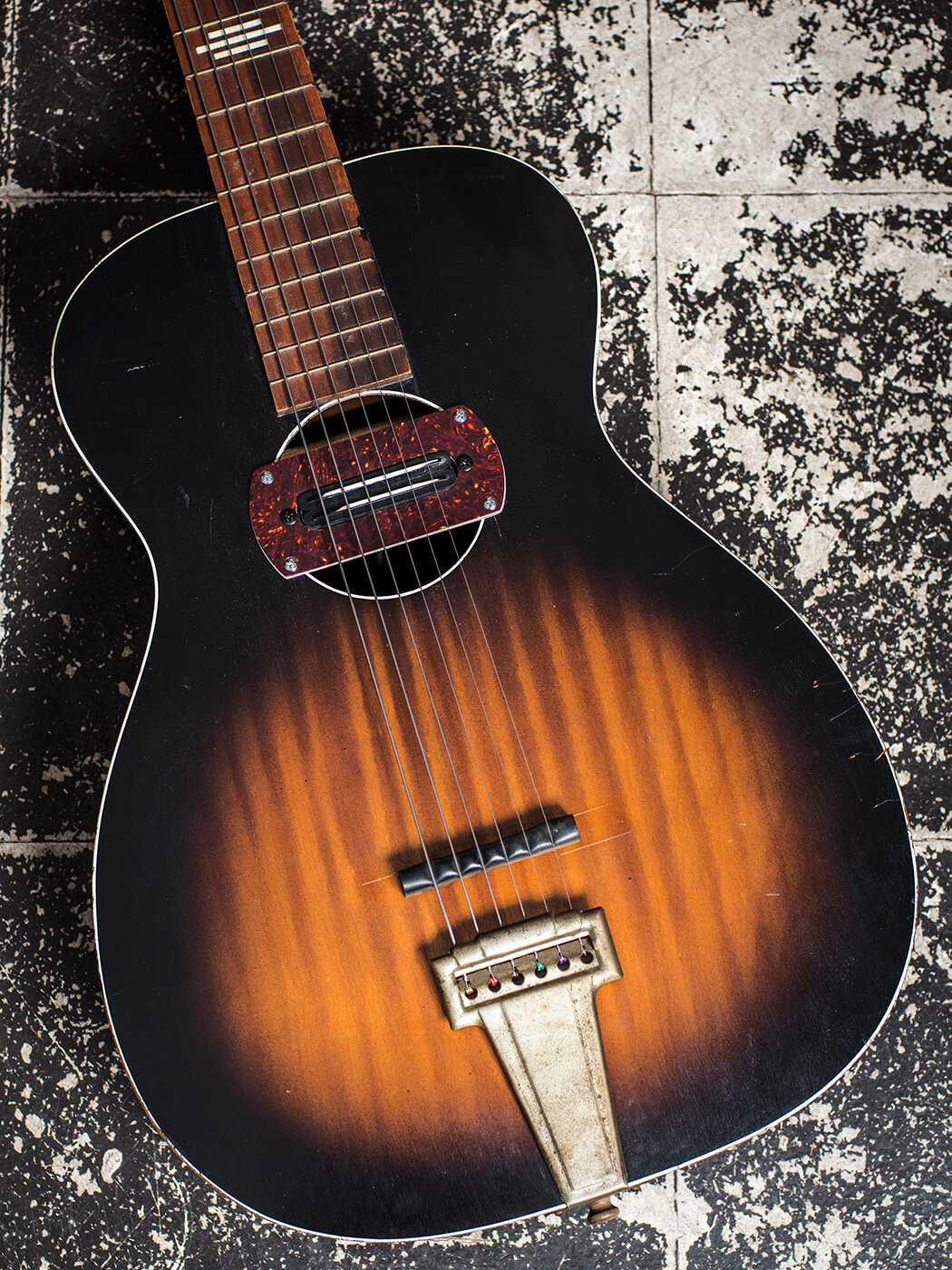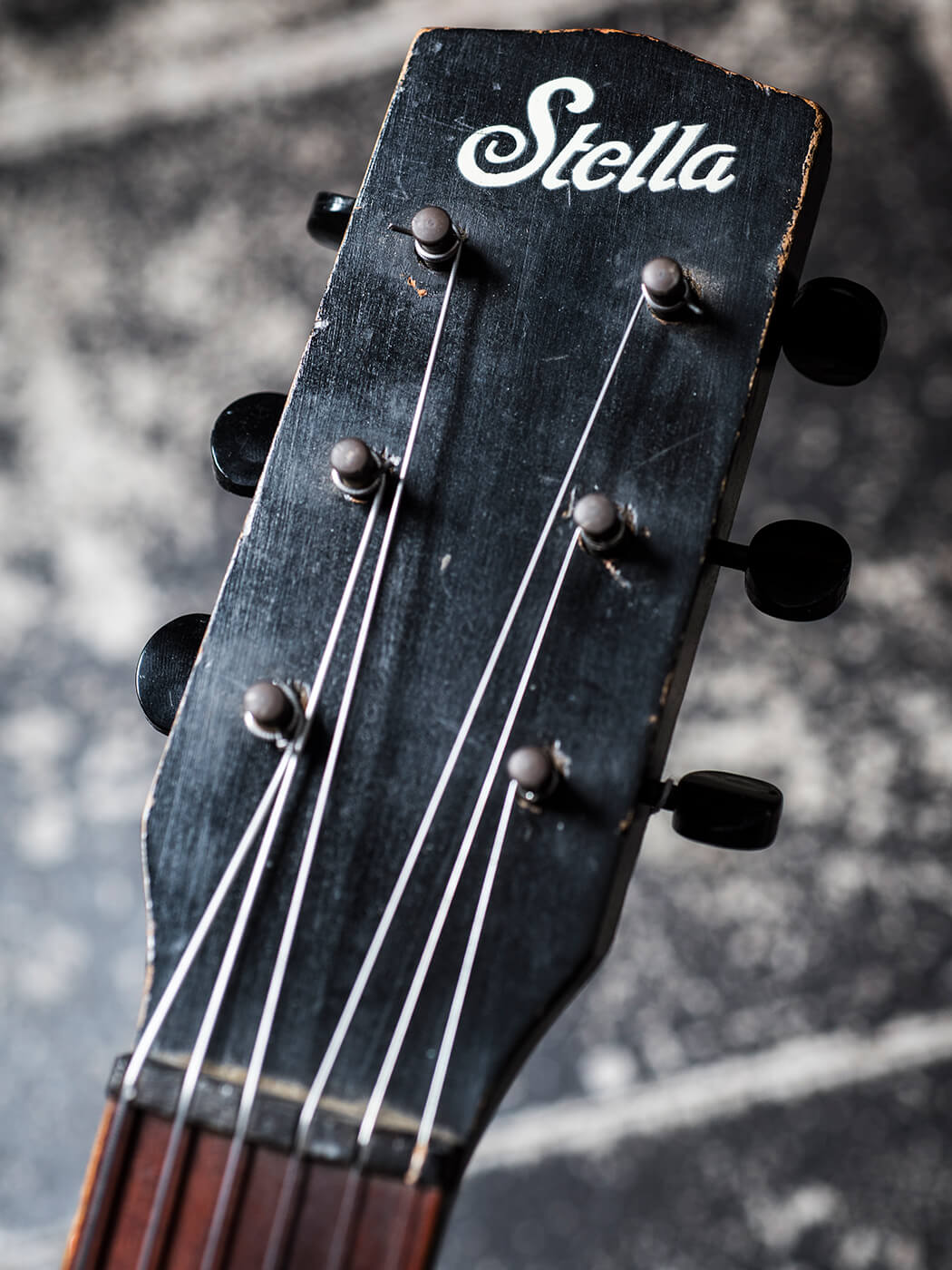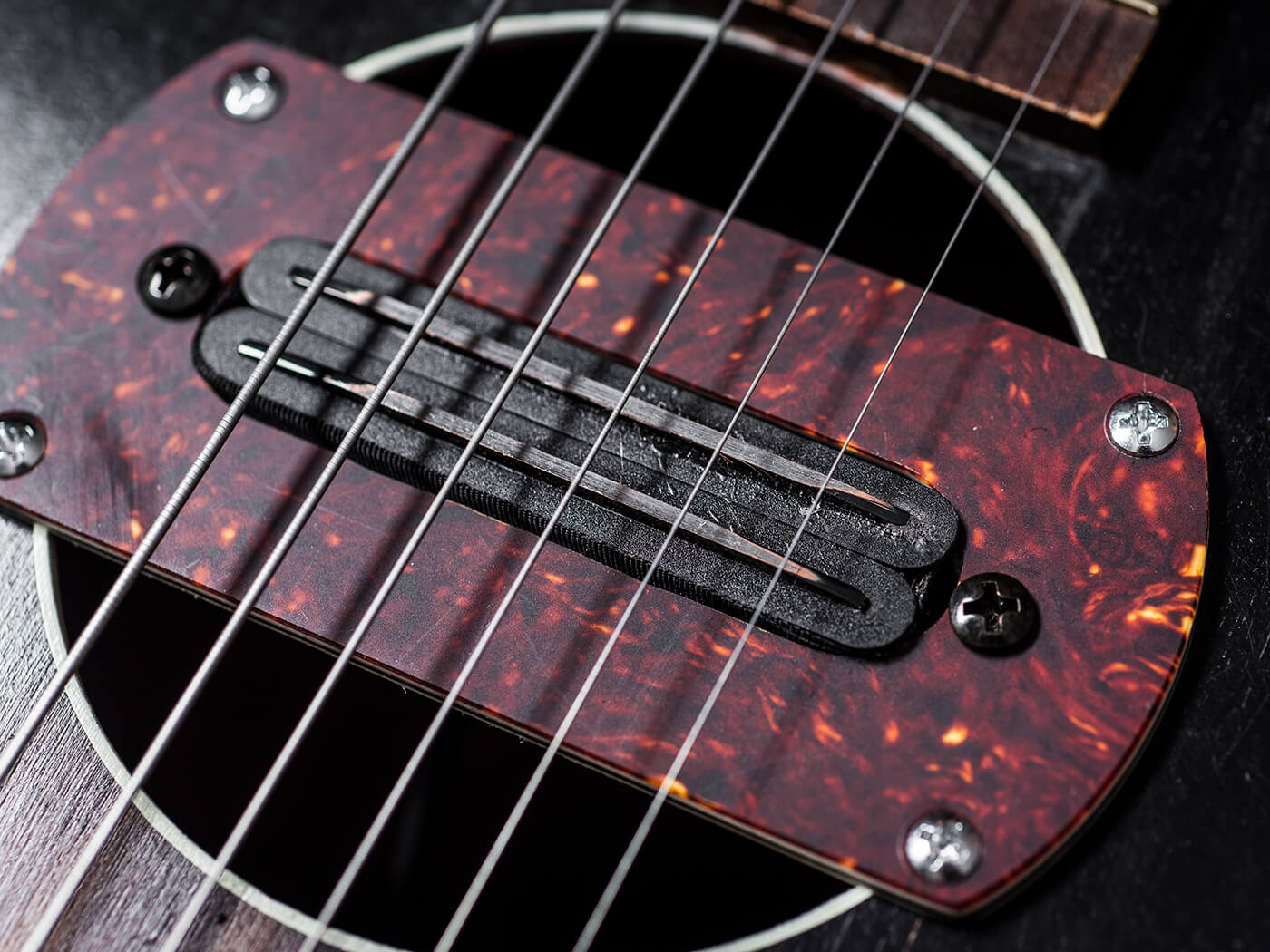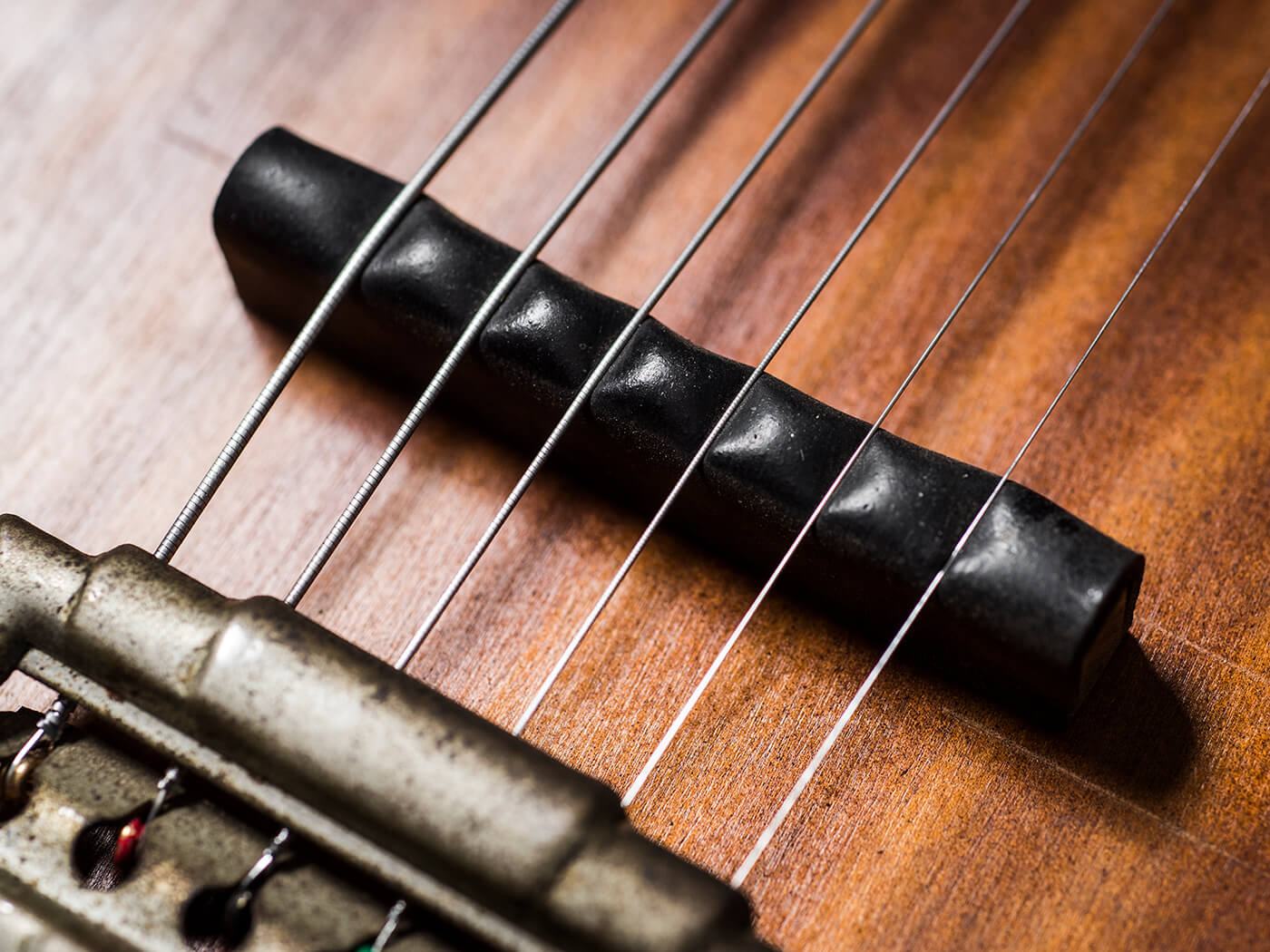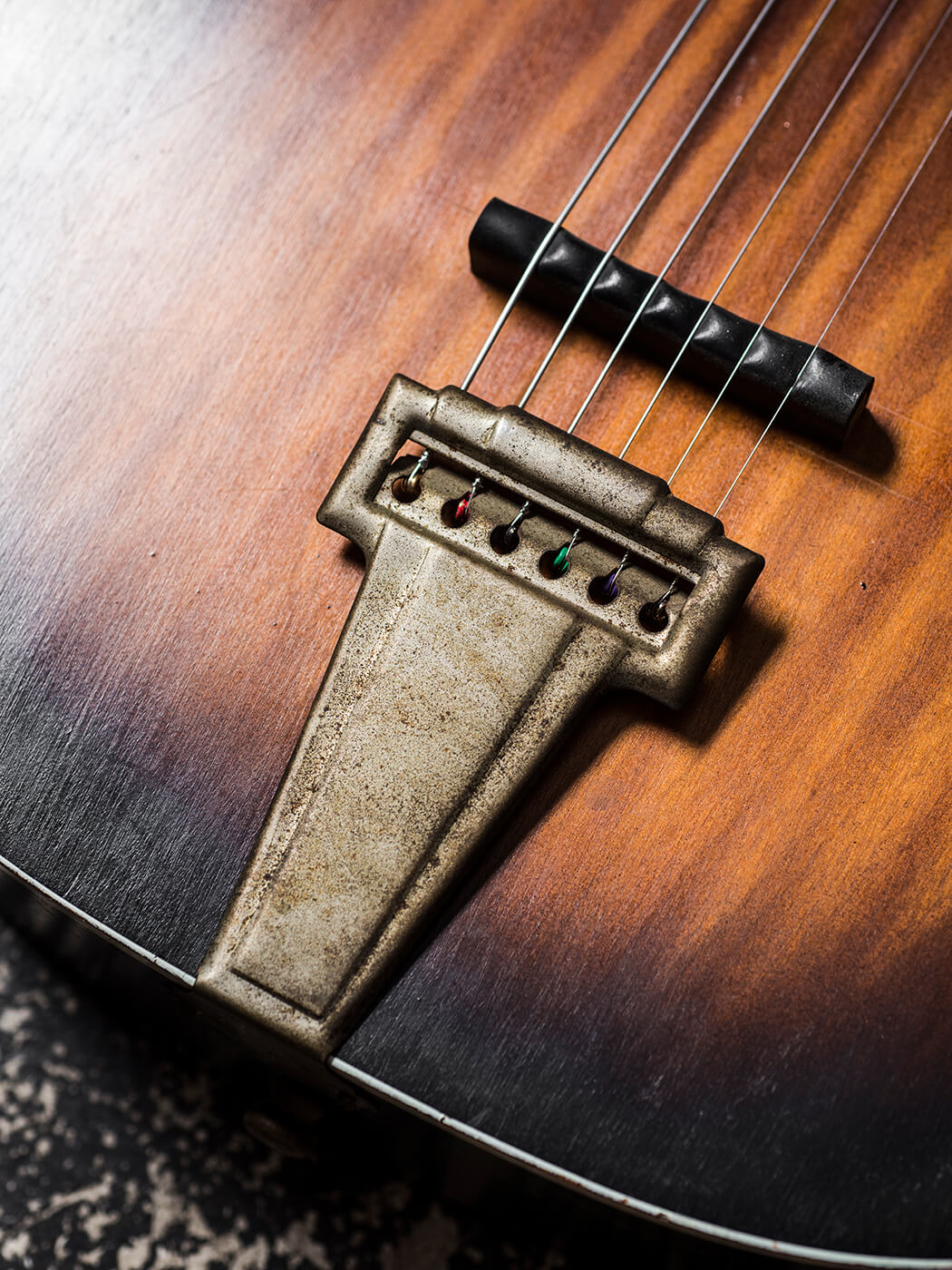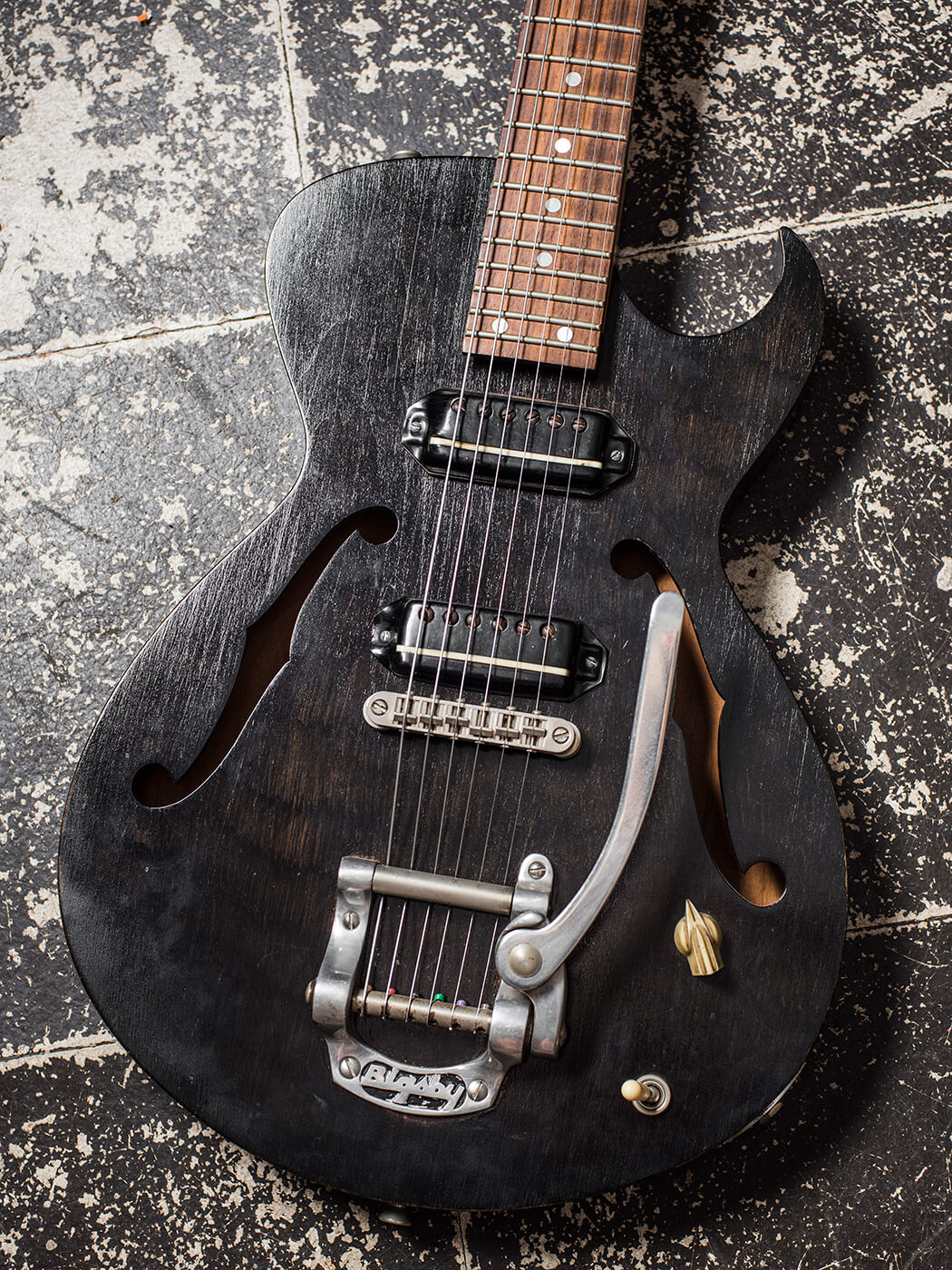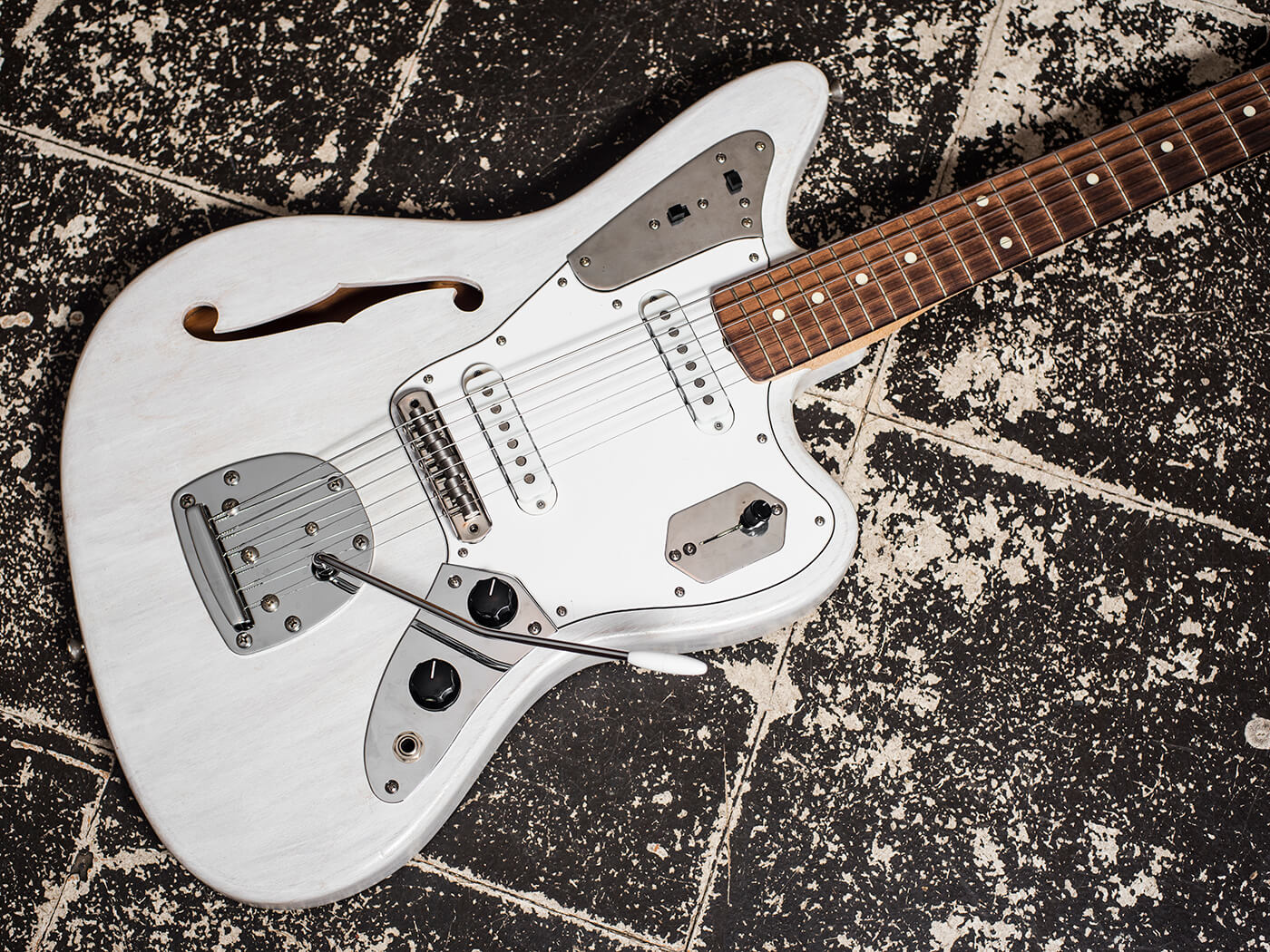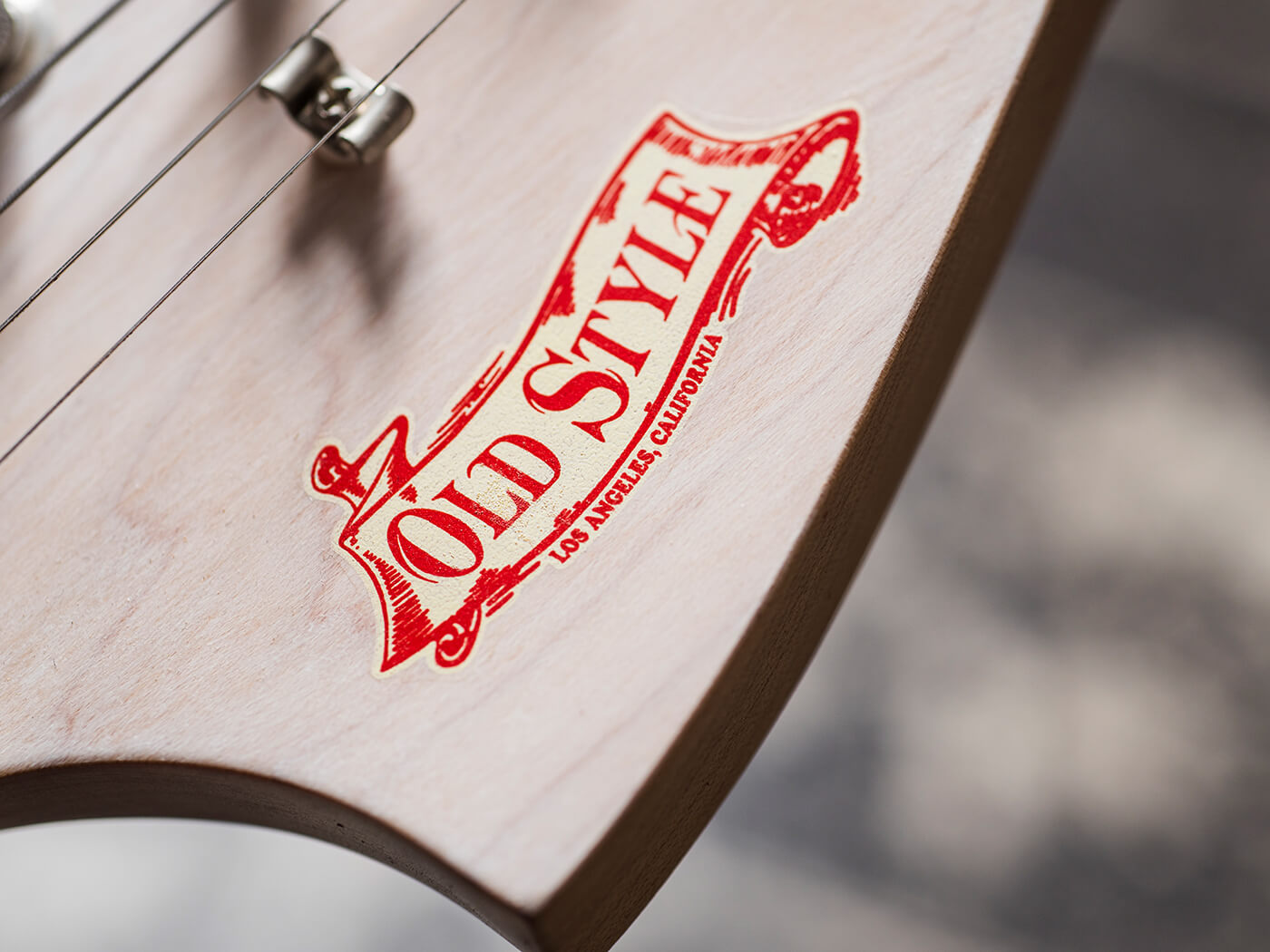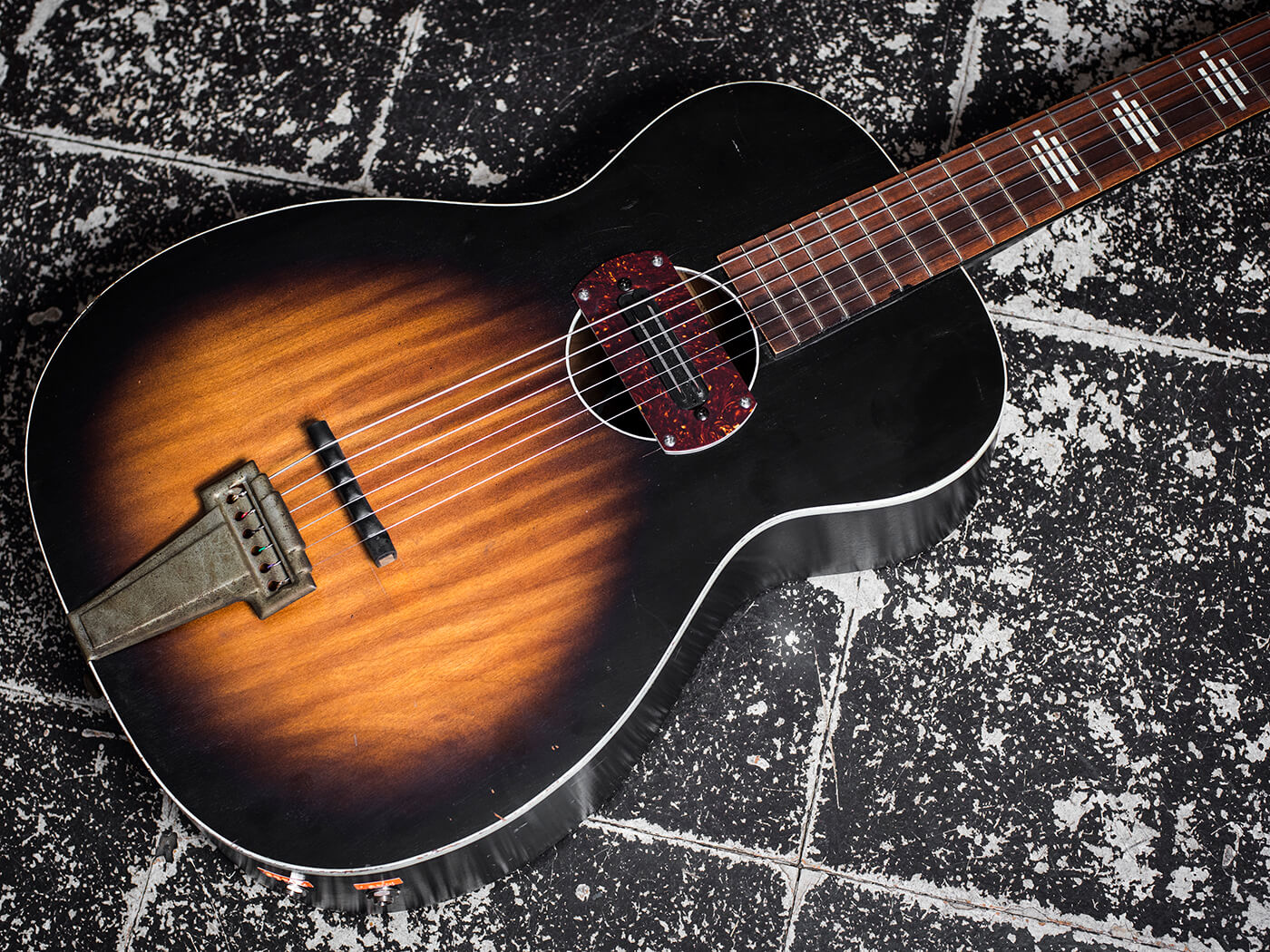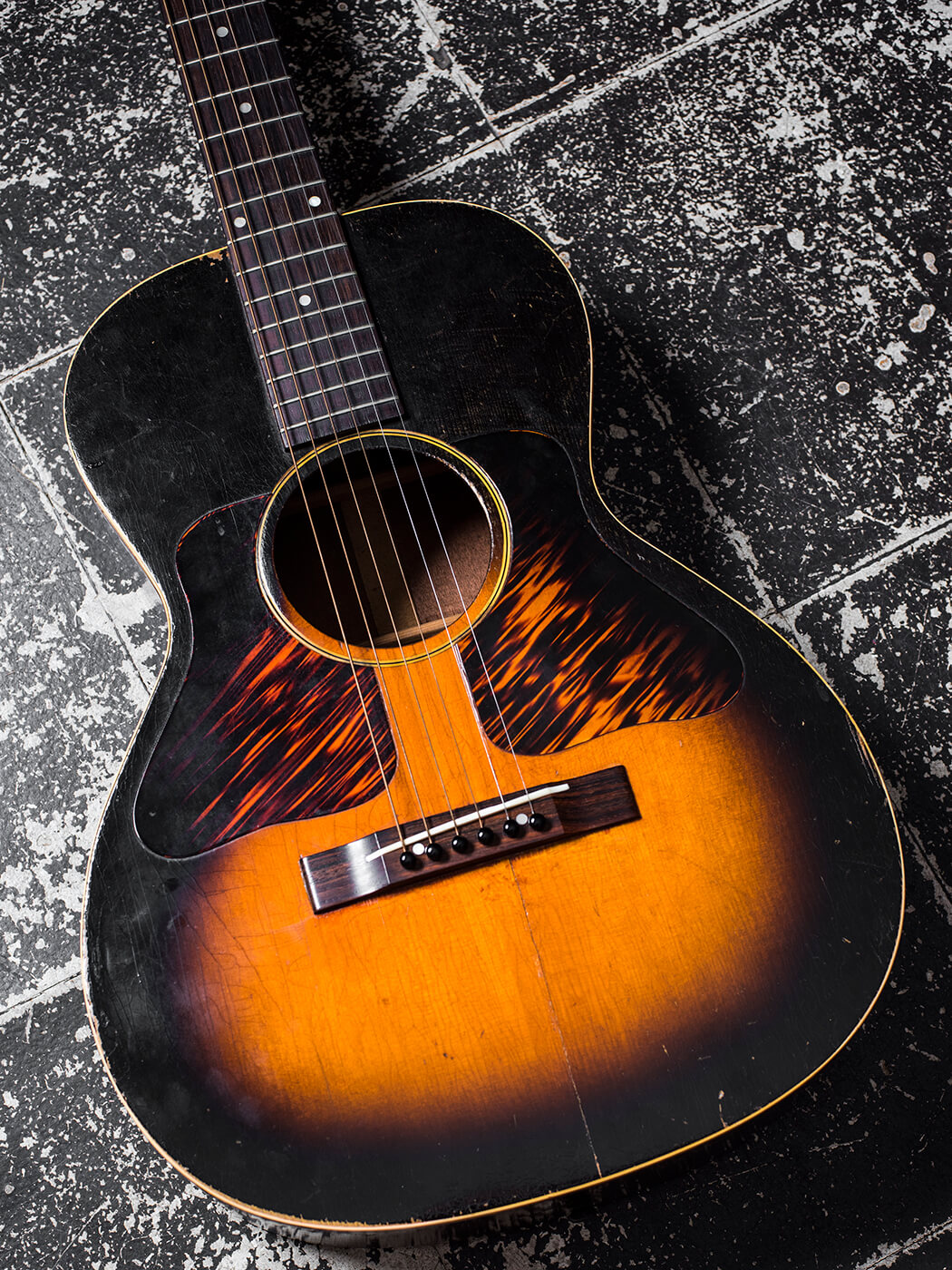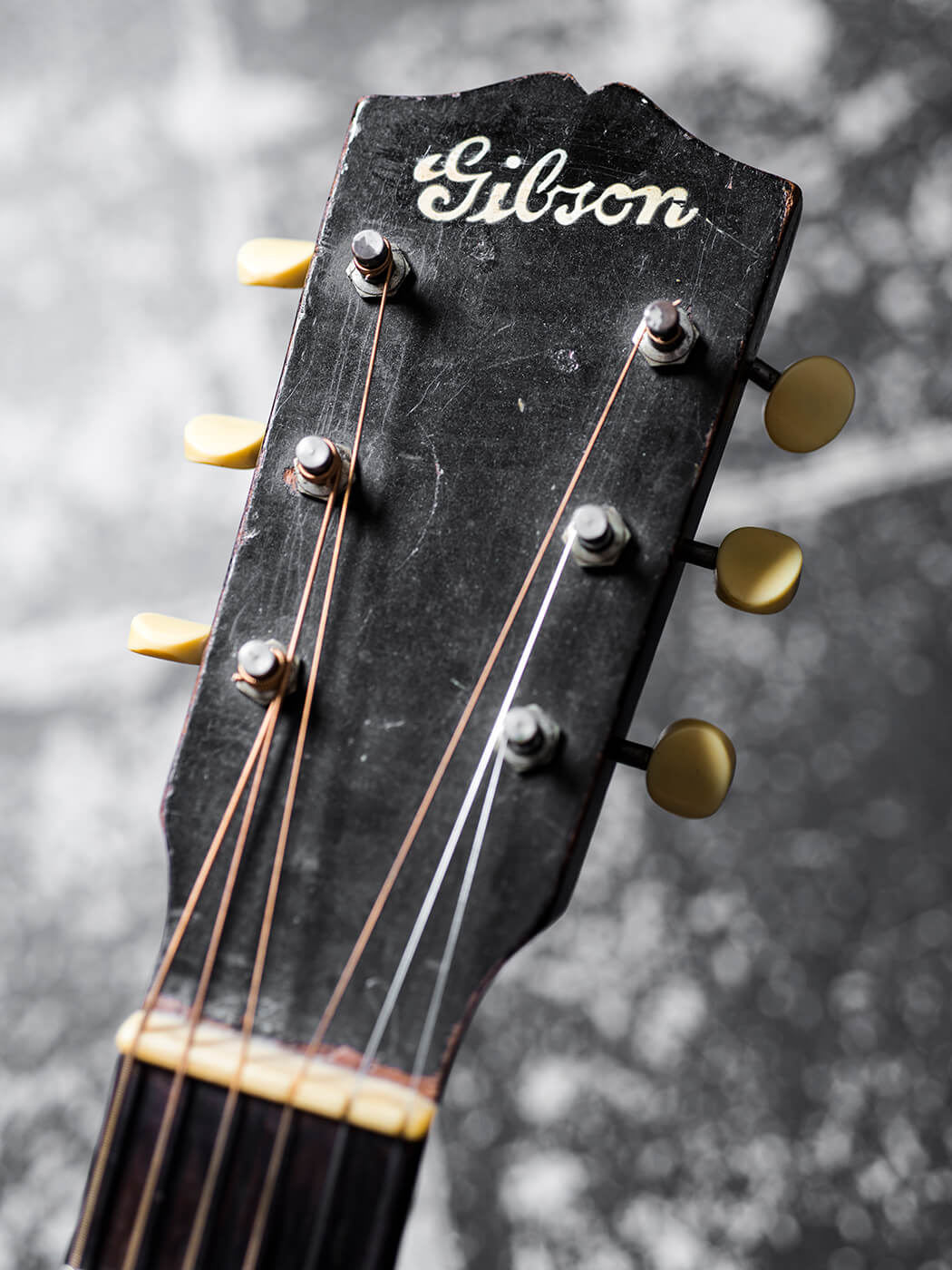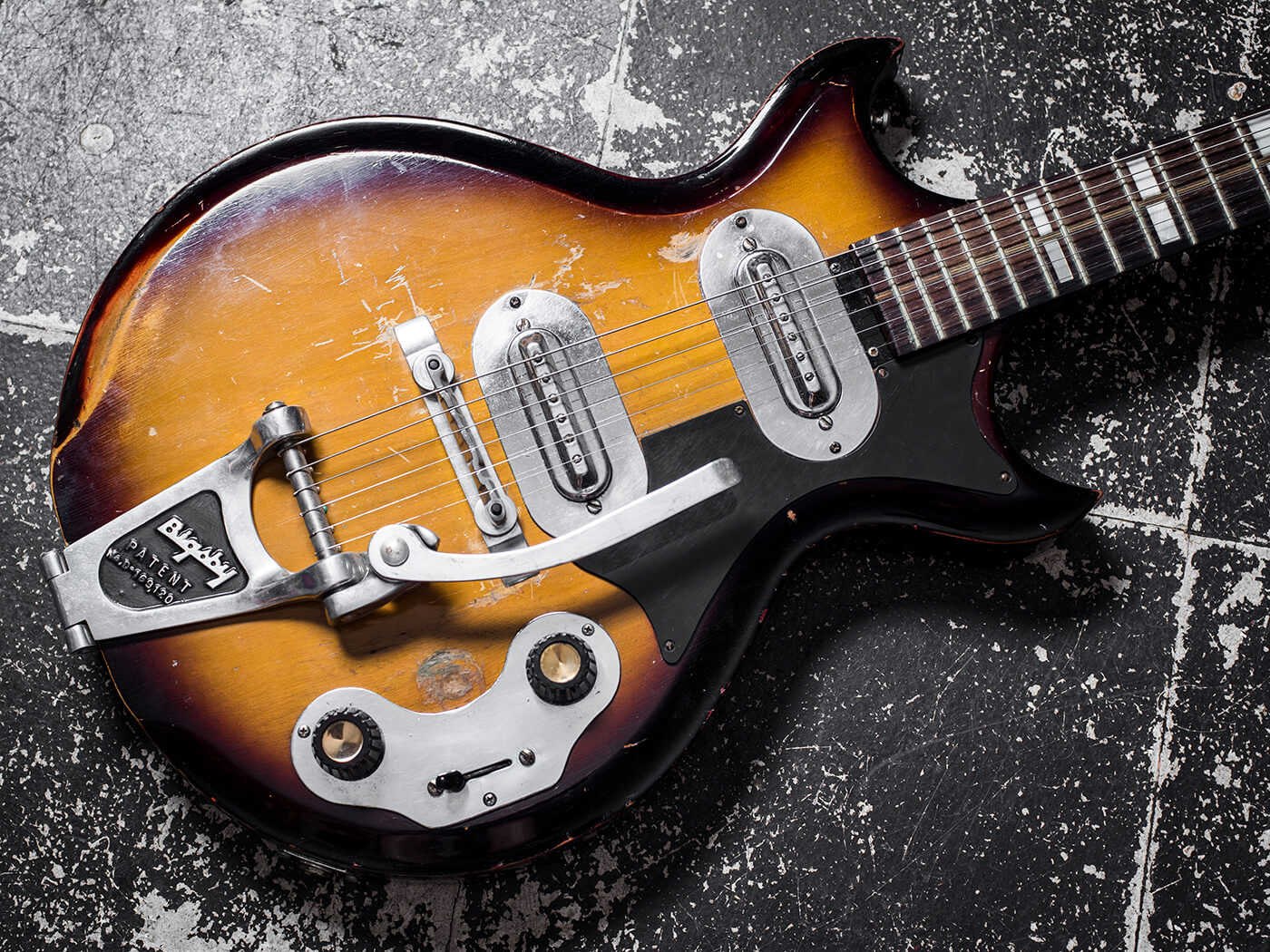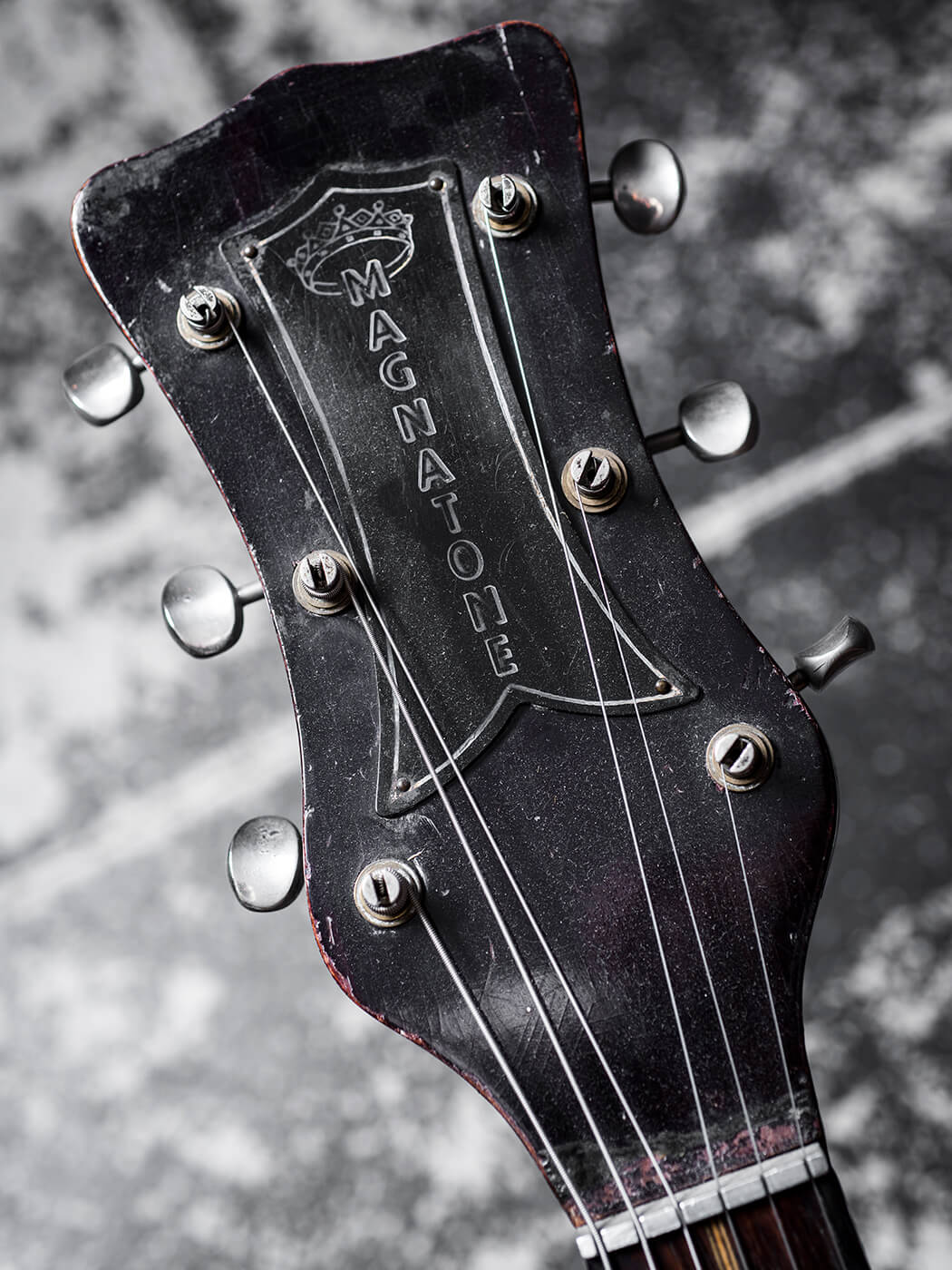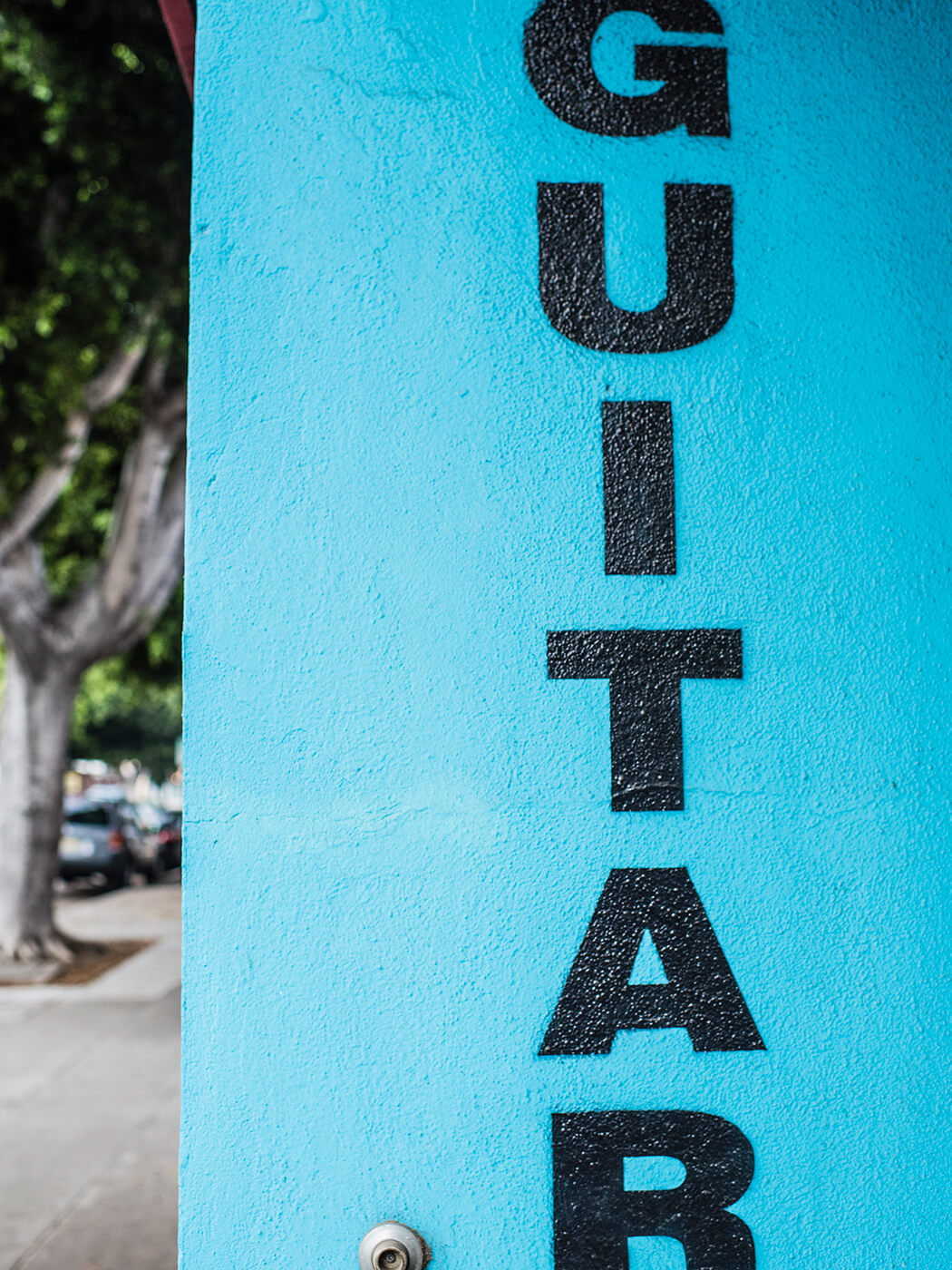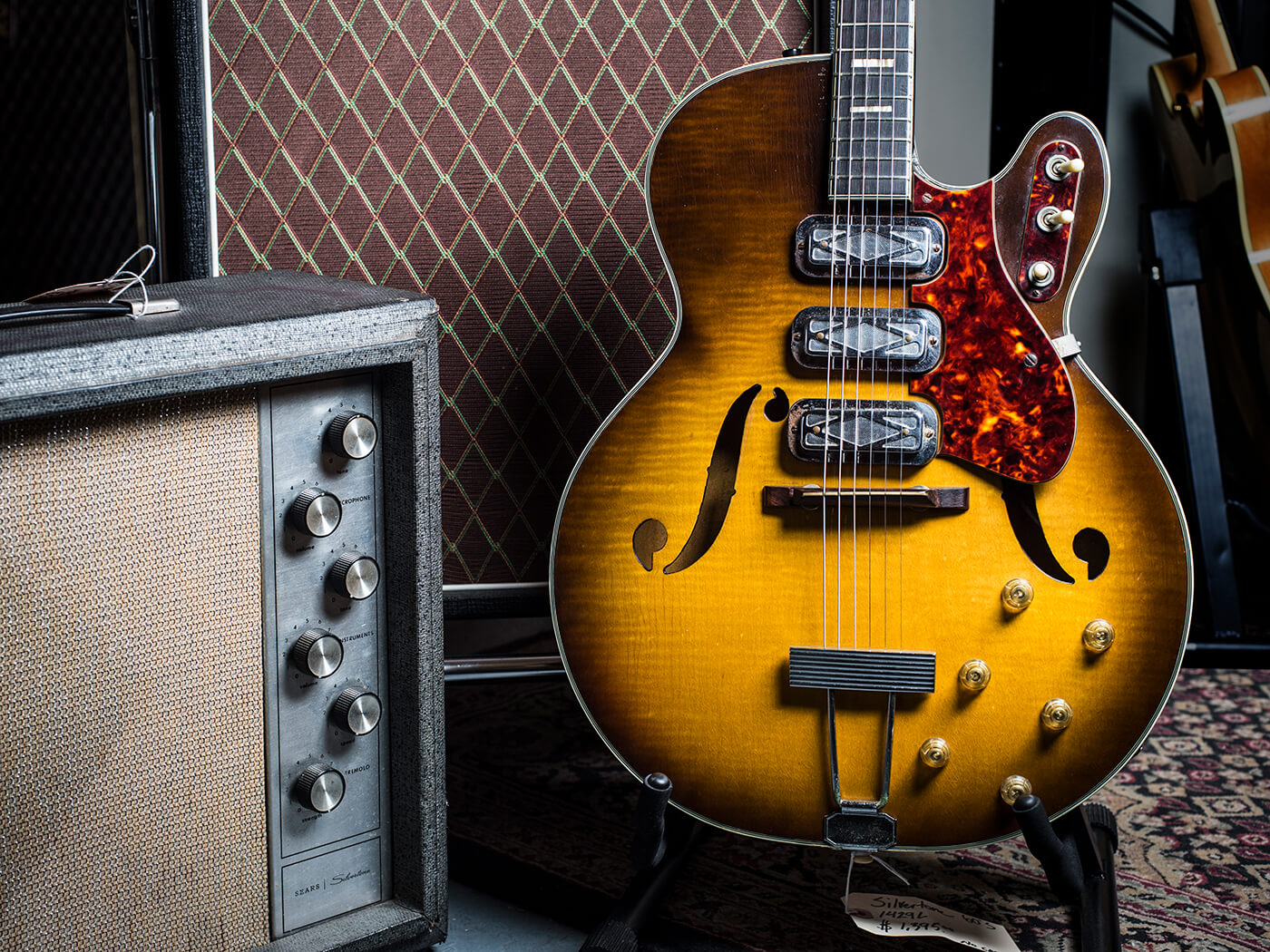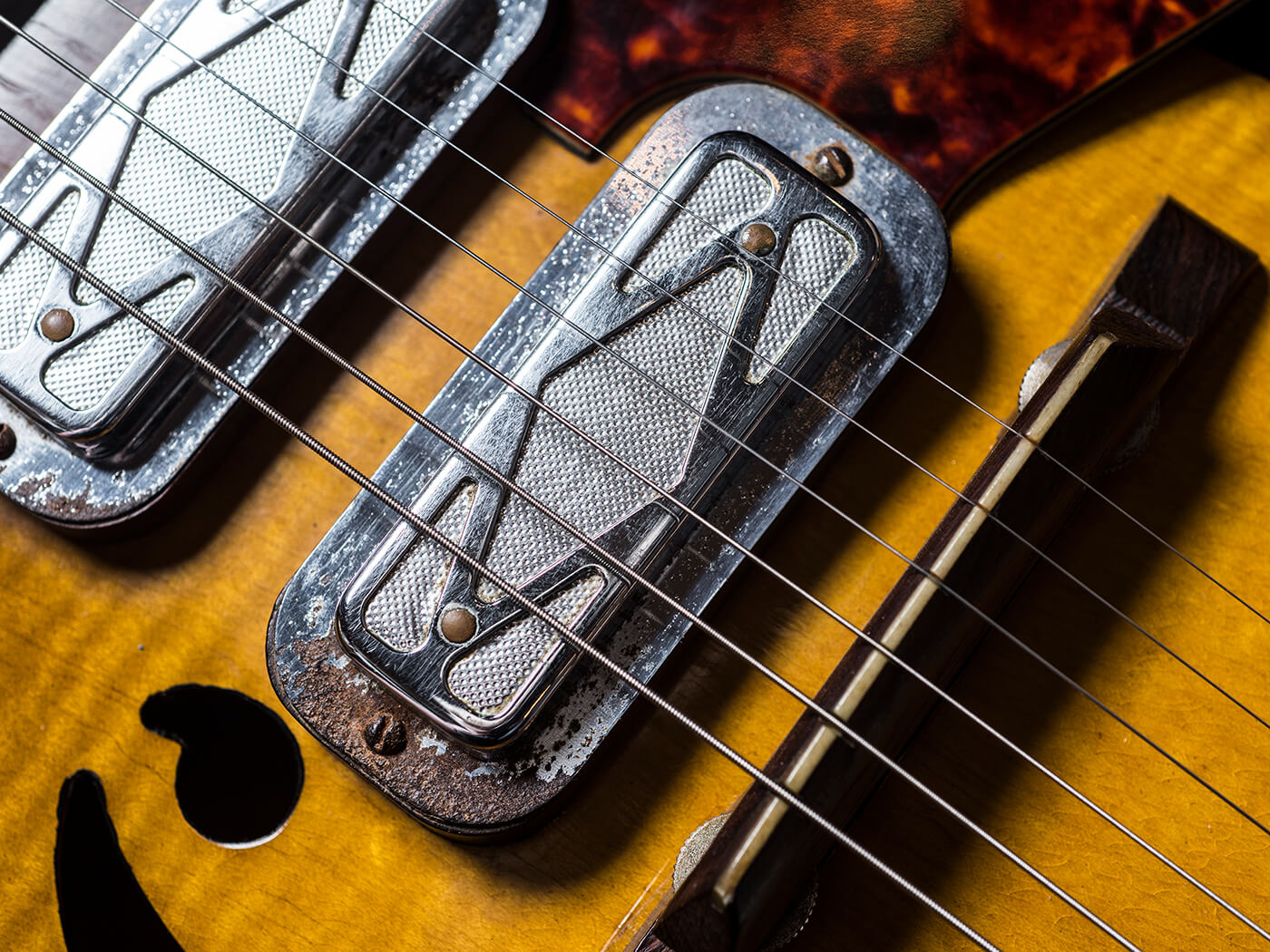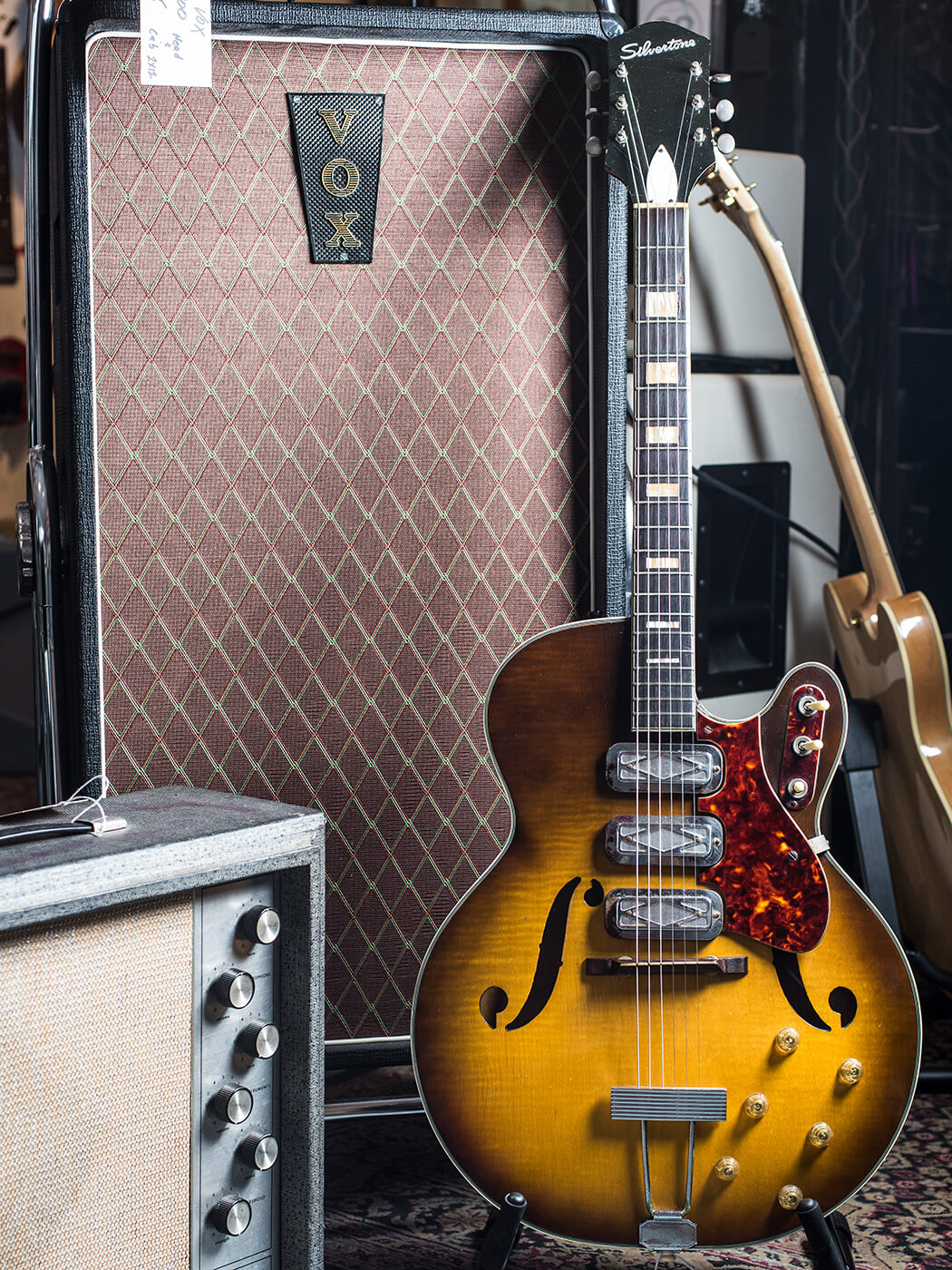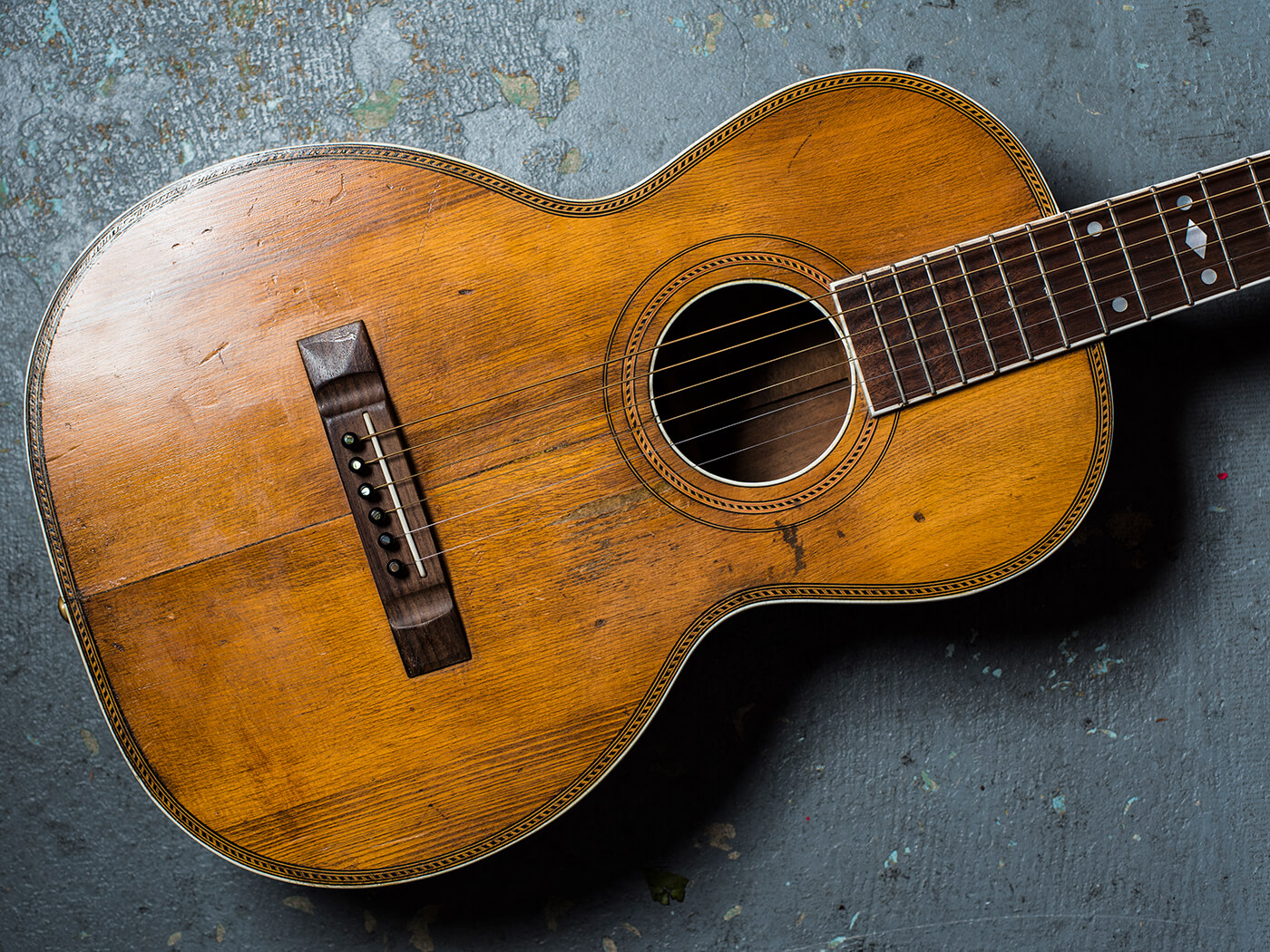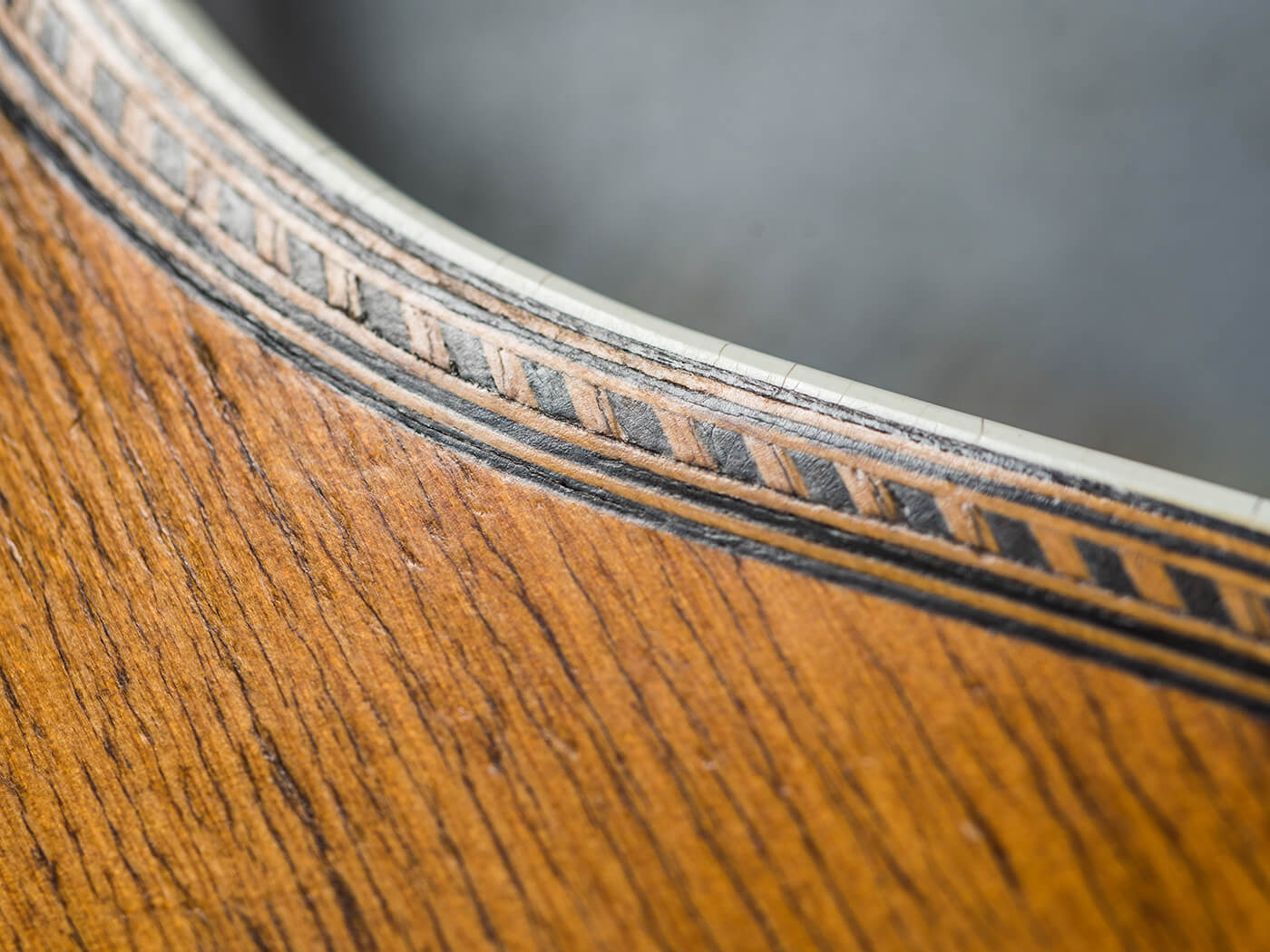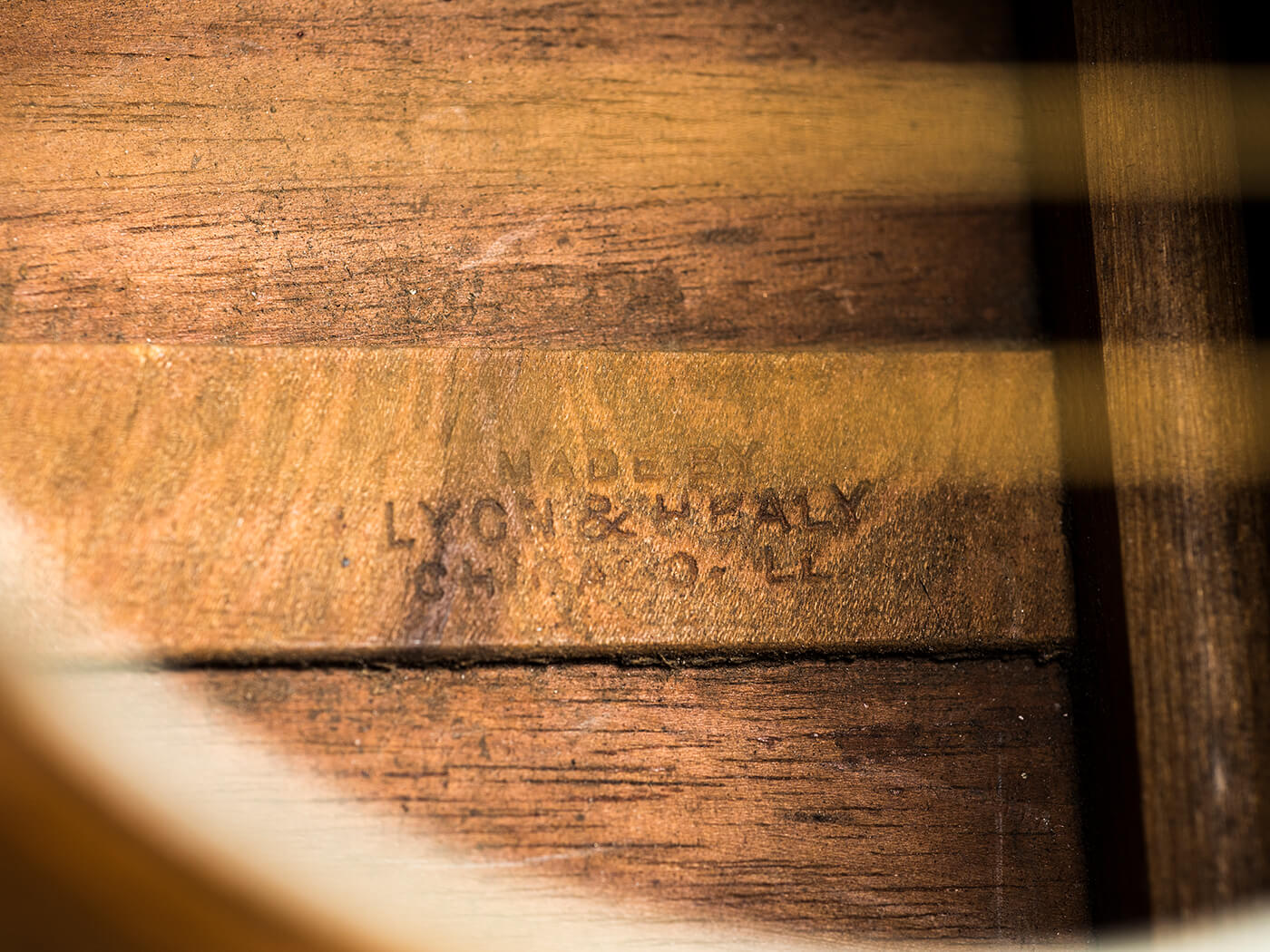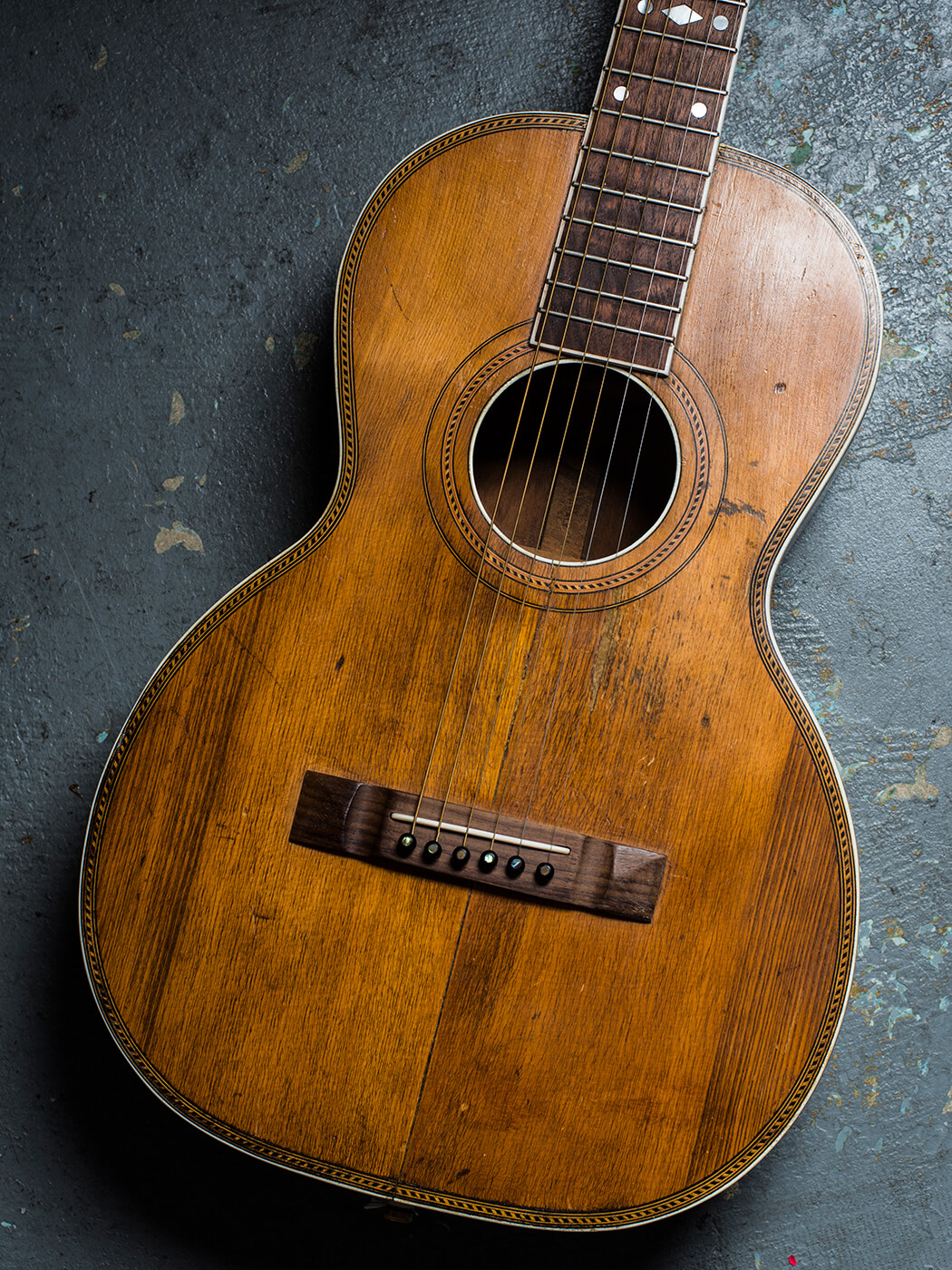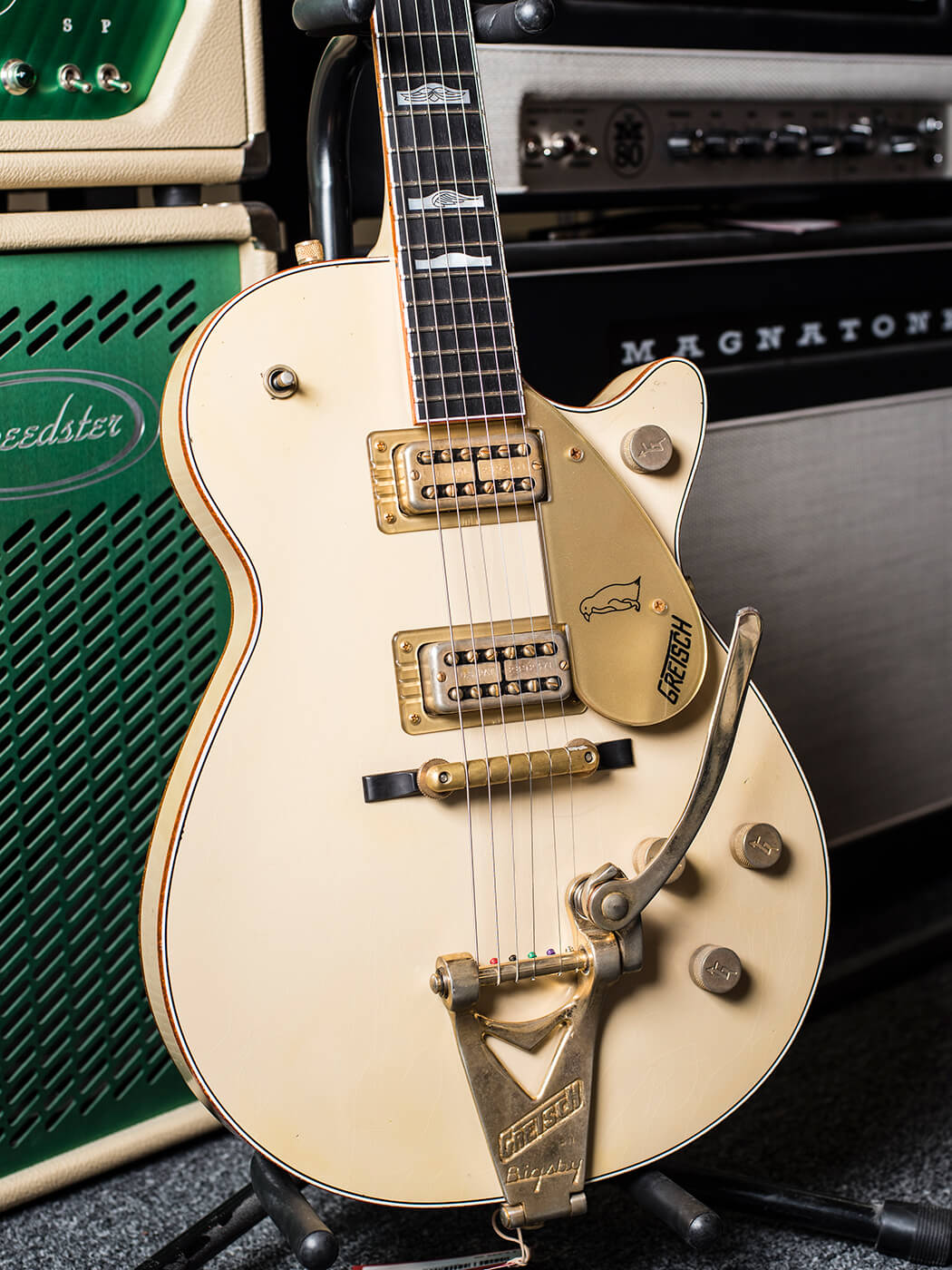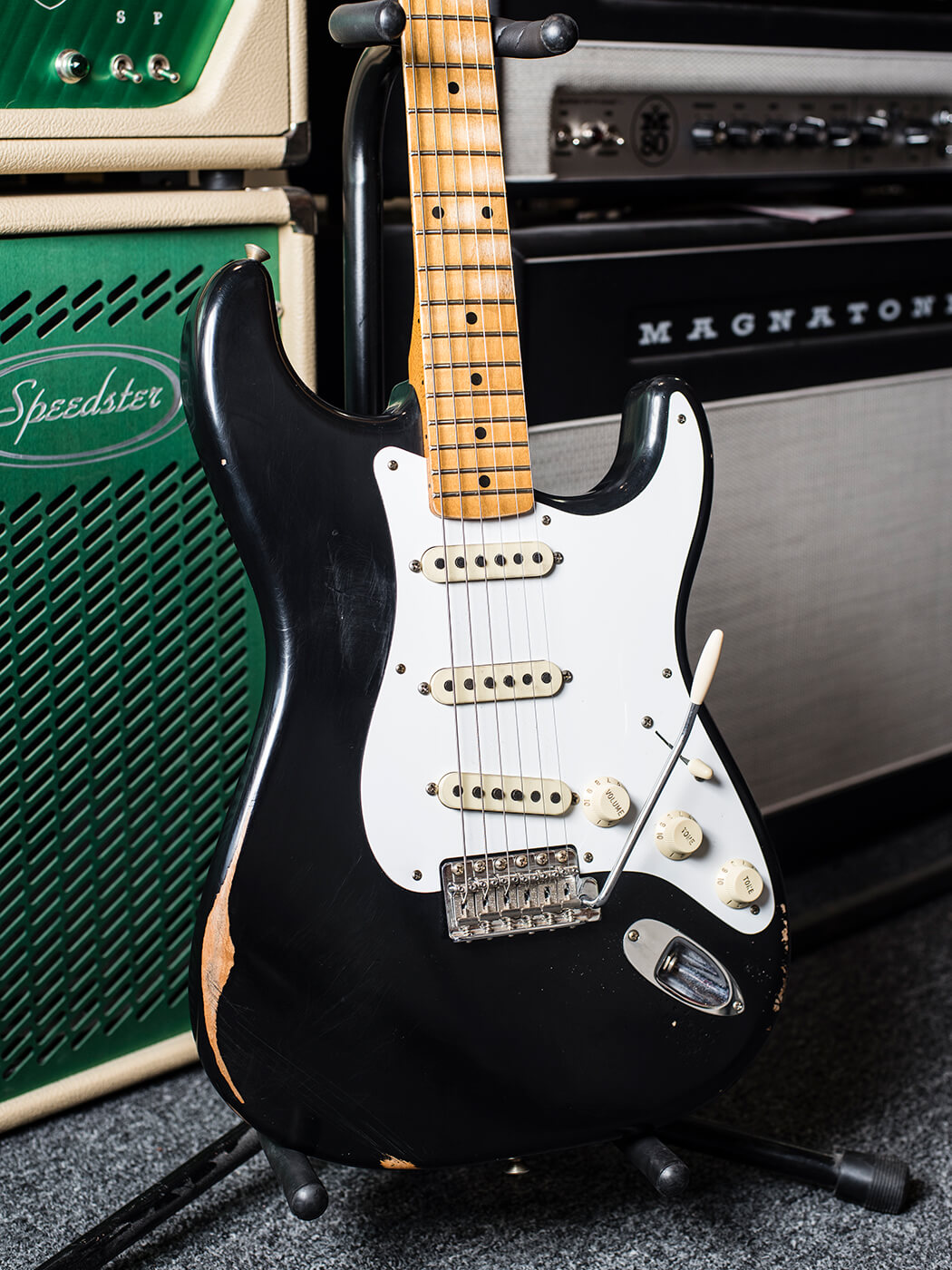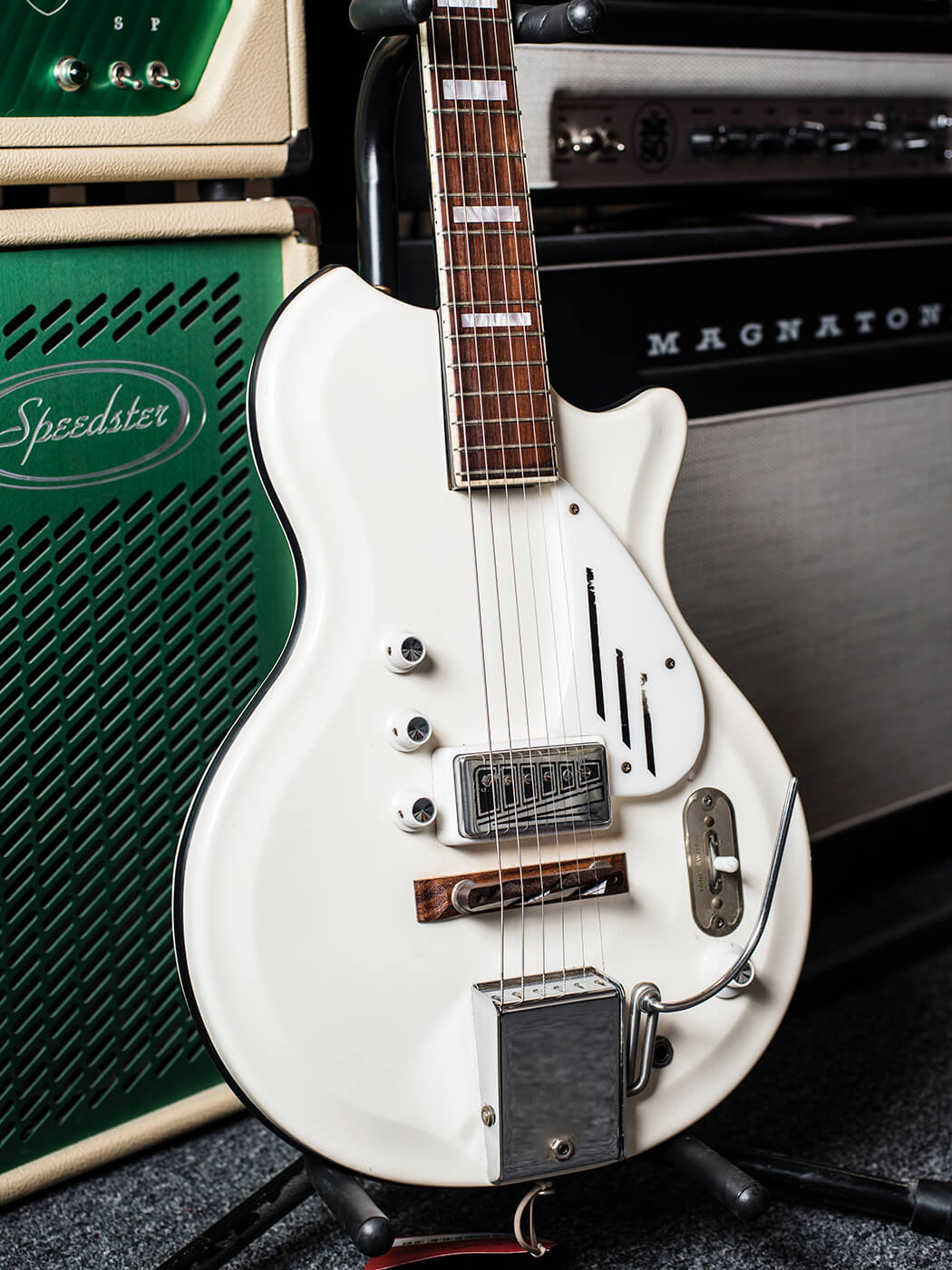Four must-visit guitar shops in Los Angeles
Los Angeles is synonymous with rock ’n’ roll, so it’s no surprise it’s home to many famous guitar stores. Here’s our pick of shopping in the City Of Angels.

Image: Shutterstock
Travelling can be daunting, to say the least. All of the planning that goes into it, from flight and hotel reservations, where to eat, to figuring out what to do with your days, it seems that vacations can often feel like anything but. And on top of all of that, musicians will naturally want to know where to see the coolest stuff and the best deals. If this is the case, you’re in luck! If you’re traveling to sunny Los Angeles, we’ve done some of the legwork for you. Once you’ve visited the bright lights of Guitar Center Hollywood on Sunset Boulevard, here are four other must-see shops in the area.
Norman’s Rare Guitars, Tarzana
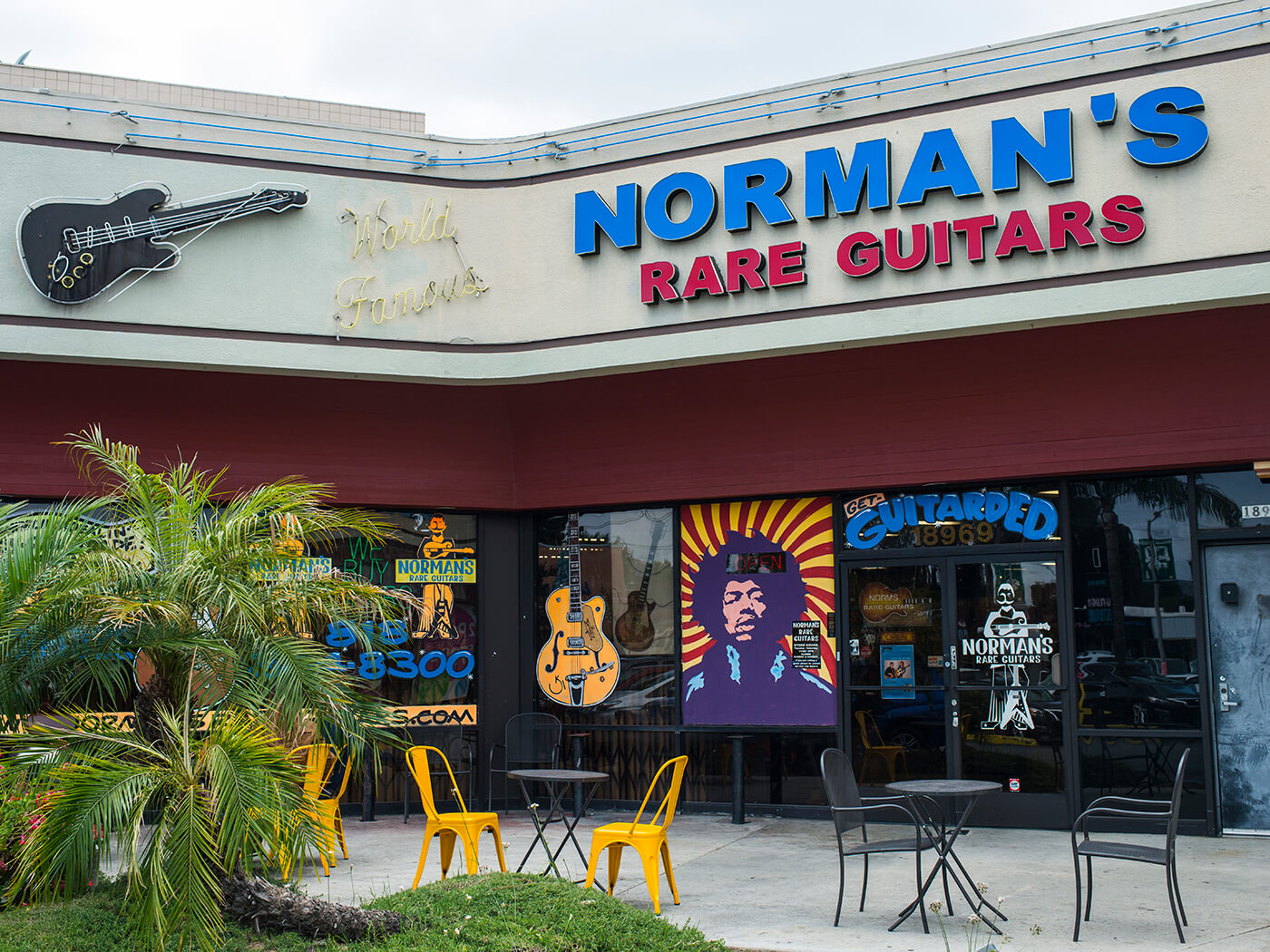
Over the last 32 years, Norman’s Rare Guitars has become something of a worldwide phenomenon thanks to its appearance in t-shirt form in This Is Spinal Tap and being name-checked in plenty of other films. Not limited to cinema, the shop has kept up with the changing trends of social media with its Guitar Of The Day posts on Instagram and YouTube, and continues to serve as a place of pilgrimage for movie stars, up-and-coming rockers, and guitar-minded folk across the globe.
Owner, proprietor, and namesake Norm Harris started buying up old guitars in the 1960s, long before the idea of the vintage market as we know it had solidified. An expert in all things guitar – you name it, he knows it – Norm put his extensive knowledge to use and stockpiled truckloads of instruments and banked on a boom down the road. Chances are you know his name, or at least the name of the shop, so it’s safe to say his foresight paid off.
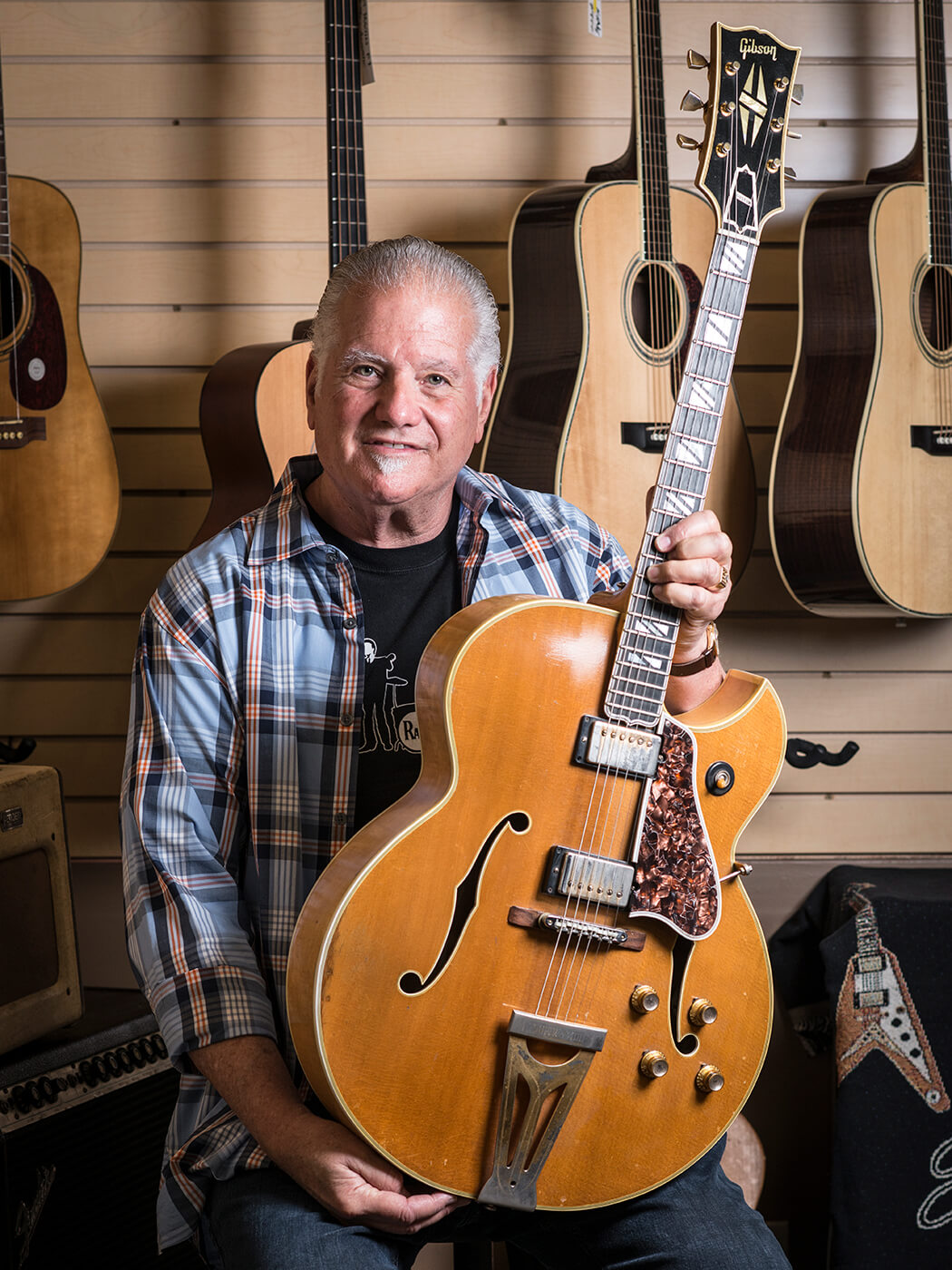
The shop offers all manner of instruments, from ultra-rare one-offs, tried and true vintage favorites, and even modern affairs. With a cursory glance at what hangs on the walls of its huge showroom, it’s clear that the love of the guitar is alive and well in Norman’s Rare Guitars. As we browse and peruse, our friend and salesman Todd Wisenbacker rolls out guitar after guitar while Norm gives us the inside scoop on each instrument.
First from the back room is an undeniably breathtaking 1955 Les Paul Goldtop… and back, and sides, and neck. That’s right, the beautifully crazed gilded vision you see before you is in fact one of the rare all-gold models and a sight to behold in its totally original glory. Each crack in the finish reads like a line on the palm of your hand, each a story of the past and portent of things to come. Yellowed binding sets off the silky smooth Brazilian rosewood fretboard and unadorned cream plastics, while that famous golden-era craftsmanship ensures the guitar has a loud and resonant sound and near-infinite sustain.
Next up is a jaw-dropping 1951 Stromberg 400, which seems particularly exciting for Norm as he gives us a brief run-down of the brand’s history. He explains: “The two boutique makers who made the top guitars for the top players were D’Angelico and Stromberg, and Stromberg was the last word for guitar players like Irving Ashby and Oscar Moore. And all of them were unique, you’ll notice with Strombergs that the inlays are a little different. They were spec’d for the individual.”
Its natural finish is still bright and clean, and with body width at 19-inches, Norm notes it’s “bigger than a Super 400.” The guitar has a bold, round sound that seems loud enough to reach the cheap seats. The only non-original part on the guitar is the pickguard, which suffered the usual celluloid deterioration that you see with most plastics from the era. Thankfully, Norm’s techs replaced the guard with a hand-cut replica, completing and preserving the look of such a stately guitar. Oh, and that handle on the back of the headstock – that’s the strap button!
Moving on, Norm brings out something truly special. Now before us is a Mauer model 595 from the 1930s in all of its abalone-inlaid splendor, eliciting gasps from our team. It’s an instrument we know next to nothing about, but we are glad to have Norm as our caretaker.
“The Larson Brothers were builders in the midwest in the 20s through the 1940s,” he tells us. “They made guitars under a number of different names like Mauer, Euphonon, Prairie State, and Stahl depending on where it was sold. They didn’t mass produce and they were all unique.”
The intricate pearl inlay work framing the body, headstock, and ebony fingerboard is as exquisite as it is plentiful – so much so that it’s easy to get lost on some of the finer details: the stars on the bridge, for example. And while it looks great, the sound simply must be heard to be believed: it is full, rich, and shockingly loud.
To be honest, after the last one we aren’t sure that anything will impress us so much, but this penultimate guitar is surely a showstopper. This 1963 Fender Jaguar, wears the exceedingly rare gold hardware option which looks quite smart against the custom colour Candy Apple Red finish. Yes, it’s 100 per cent original (check out the gold truss rod nut) and available for purchase.
Lastly, we spend some time with a guitar owned by none other than the late Tom Petty, who was a personal friend and frequent customer of Norm’s. The guitar, a 1964-65 Gibson SG Standard, was the guitar Tom used while touring with Bob Dylan in 1987, signed by the man himself. Inside the case is a photo of Tom with Dylan and the SG, wearing the very top hat that Norm now models for us. Incidentally, at the time of writing the two year anniversary of his passing has just ticked by, and the world surely hasn’t been the same since.
On any given day at Norm’s, one can expect to see high-end guitars and the high-end clientele to go along with them. During our little interview and photoshoot, the store played host to a few noteworthy singer-songwriters. Sadly we can’t reveal their names here; don’t think about the implications…
Old Style Guitar Shop, Silver Lake

Nestled on the border between the Silver Lake and East Hollywood neighbourhoods, Old Style is a different sort of destination shop: grassroots and unassuming, its proverbial tent pitched in a converted mid-century residence. Old Style eschews elitist swank and the too-cool-for-school attitude adopted by some personas in the guitar world, favouring a comfortable, down-home atmosphere and a laid back, welcoming staff.
The shop is highly regarded among guitar enthusiast types for its embrace of quirky, kitschy guitars of the 1960s. Any trip to the shop will likely yield the branding of Asian, European, and American origins as well as home-brewed builds that simply must be played to be believed. As the shop nears its 10th anniversary, owner Reuben Cox still seems mystified at the success of his shop.
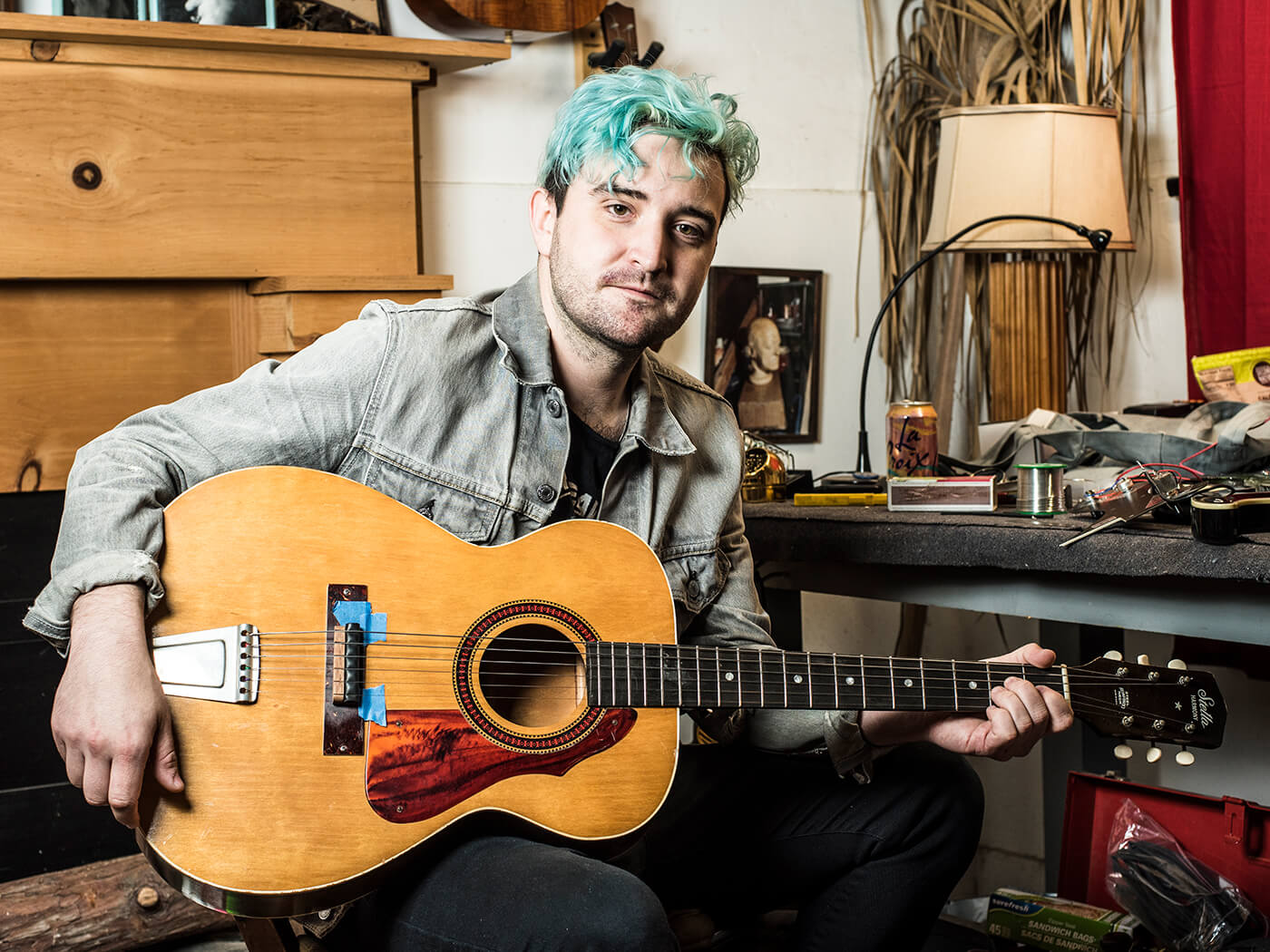
Old Style’s inception was the product of a cross-country move to Los Angeles from New York City. His wife was asked to open a West Coast office of the Beggars Group – home to Rough Trade, 4AD, Matador, and other record labels – and the idea just kind of came up.
“This was no long-simmering idea,” Cox confesses. “I’ve never owned or worked in a shop, have negligible musical talent, and have never been in a band! It just came out of nowhere.”
And so, the deed was done in an exceedingly DIY fashion: Cox simply found a space and opened without bank involvement or even a safety net. “If it crashed and burned, I could start knocking on the doors of LA art schools for work… I don’t recommend anyone do it this way.”
Regardless of its beginnings, Old Style has earned a loyal and steady customer base thanks to its inventory of “mainly used and vintage” guitars, in line with the sensibilities of its owner, who can often be found soldering wires at his workbench in pursuit of nursing instruments back to good health.
During our visit, treasures such as this old Harmony-made Stella parlour acoustic fitted with a modern dual-blade pickup in the soundhole and dual outputs for it and an additional piezo element. At first glance, it may appear to be a simple entry-level vintage instrument, but careful inspection reveals Reuben’s signature tinkerer’s brilliance. Between the art deco inlays and matching tailpiece lies an ingenious alteration: a rubber bridge. It’s a sound being embraced by LA hotshots and songwriters who find inspiration in the utter lack of sustain and an exceedingly warm tone. Jeff Tweedy employs such a guitar on Wilco’s latest record, Ode To Joy.
This is just one example of Old Style actually influencing the musical landscape of its city, something many shops just can’t claim to have done. It’s one thing to simply offer products, but quite another to peddle shared sound experiences to the outside world.
In addition to modified instruments, Old Style churns out builds of its own as well. These usually take the form of hollowbody electrics with bookmatched tops and “bandsaw-cut sides.” Reuben’s guitars often take some inspiration from tried and true shapes, but it’s done with reverence and respect, not regurgitation. Take the lightly-bursted T-style/Coodercaster guitar pictured here, featuring a gold foil in the neck position and a horseshoe in the bridge.

“The Telecaster shape is such an airtight industrial design and I seem to return to that shape often,” Reuben elaborates. Continuing the hollowbody theme are a blacked-out model with a Bigsby-like pointy cutaway, and a blonde Jaguar-style guitar with a Johnny Marr-style control scheme and a tasteful f-hole.
Old Style is also home to a number of rare, lesser-known gems from bygone eras. This sunburst Magnatone Mark V, designed by Paul Bigsby, is a perfect picture of elegance, lovingly worn and utterly charming in its stately split inlays and chrome accoutrements. Oh, and ever heard of a Gibson HG-00? Yeah, they’ve got one from 1937 and it’s divine. Beautiful sunburst finish, comfortable parlour-like body, and dual pickguards.
Some shops may try to wow you with their golden-era Bursts and rock ’n’ roll connections, but Old Style isn’t so much shock and awe, it’s about the feeling of connection to the greater good of music itself.
Imperial Vintage, Burbank
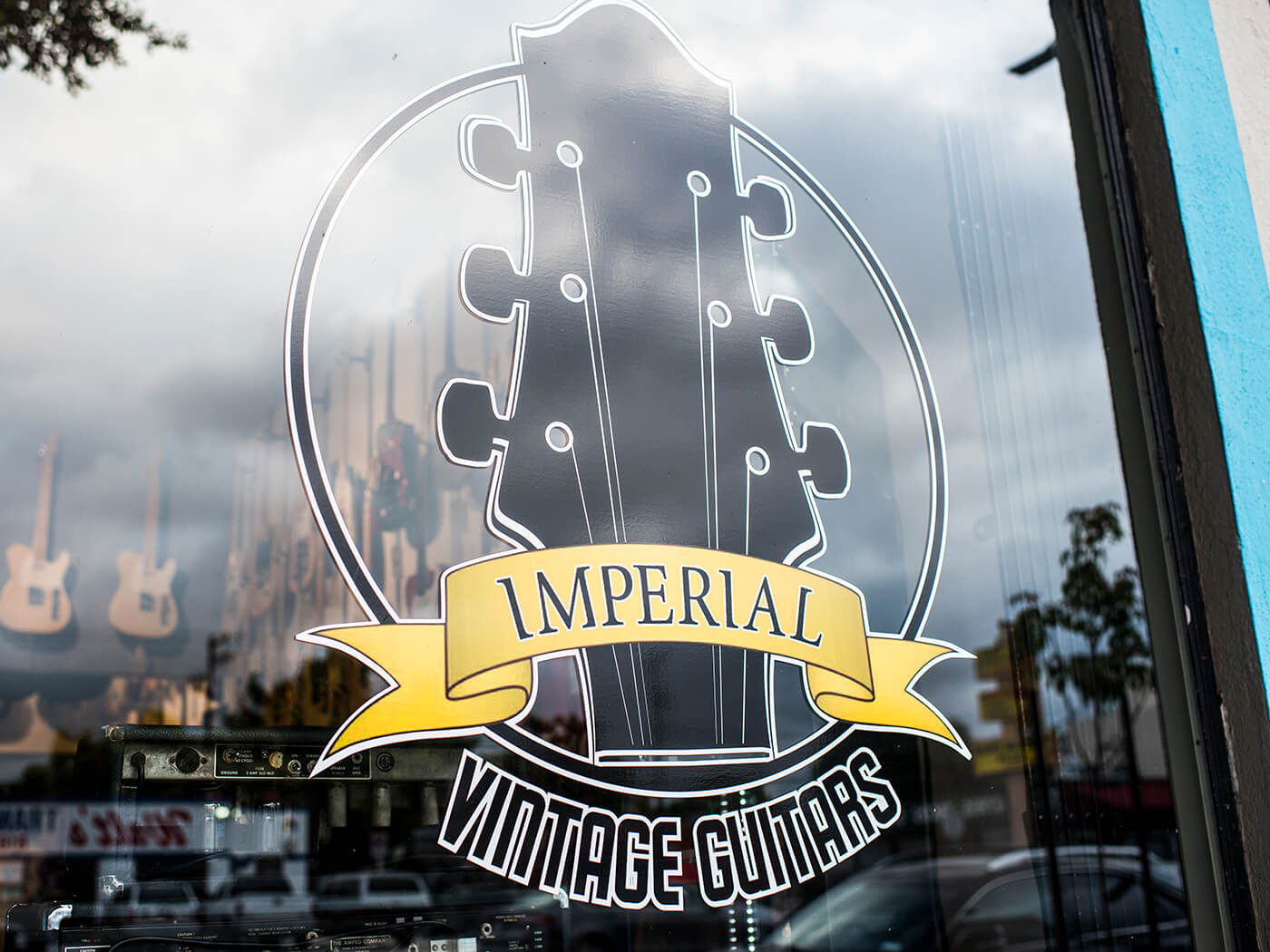
Just a hop, skip, and a jump away from “the 5” and Central Casting, if you happen to be looking for on-set work, the Burbank location of Imperial Vintage should be considered the perfect palette cleanser for those who tire easily of the big-box retail environment. It’s a small but well curated shop with a no-nonsense atmosphere, the kind of place perfectly suited for those looking for real world opinions and experience and quality repairs.
Owner Shai Ashkenazi runs a fair and honest business here, where he buys and sells at a breakneck pace thanks for his unwavering commitment to matching customers with the right instrument. While we shadow him for a couple of hours, we see him tackle two customers’ doubts, both with cash in hand, and in each encounter he speaks openly about how the instrument in question may not be right for them.
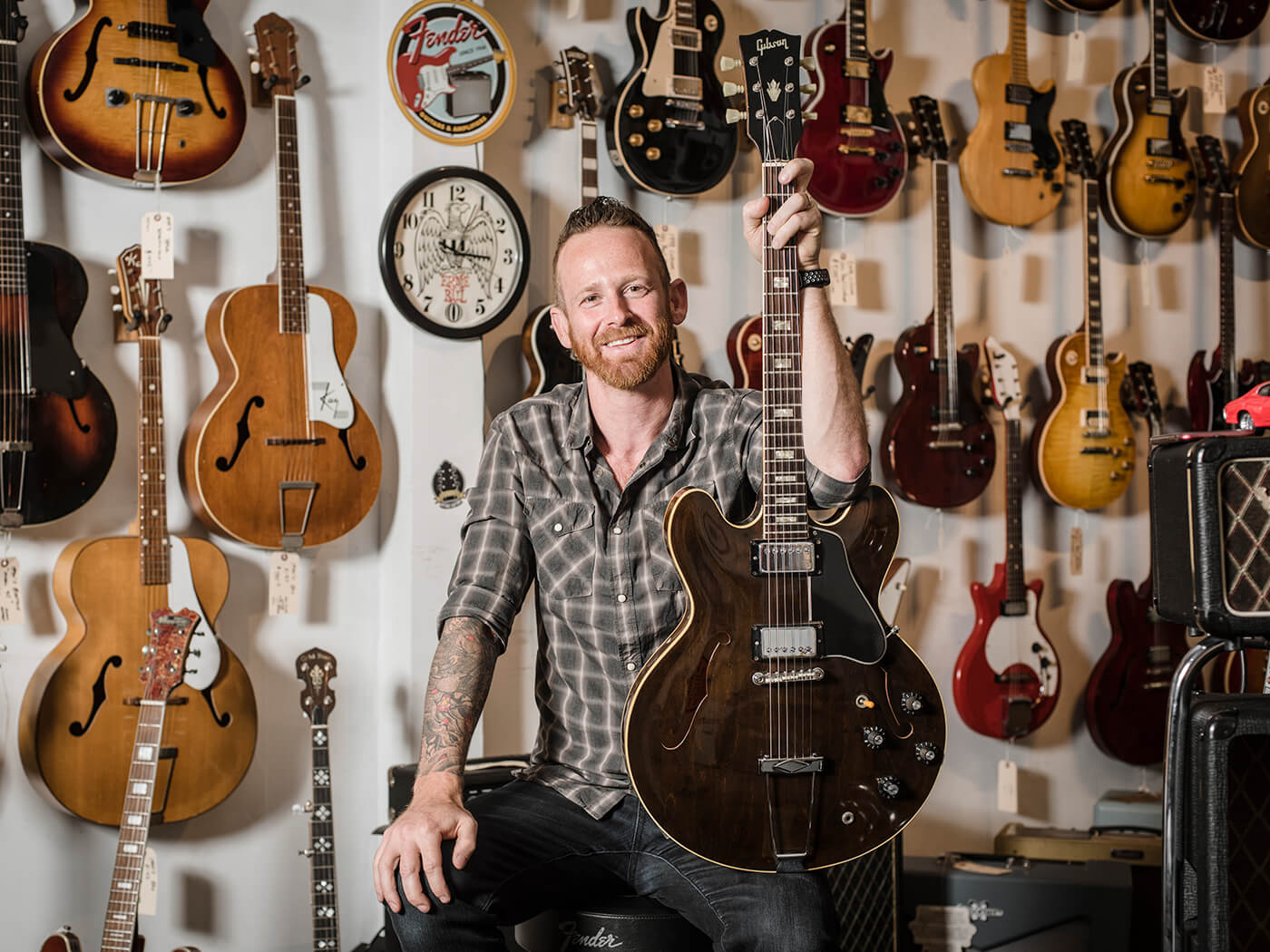
In one instance, it’s a customer who calls herself “a beginner,” yet her brother had told her not to bother with any guitar that cost less than $2,000. Shai suggests a guitar costing far less than that instead, reassuring her that such a large drop in the bucket shouldn’t be a barrier for entry into the world of music.
“He told her to buy a Taylor. That’s a great guitar, but she doesn’t need that yet – she has so much to learn! So I told her, buy this instead, take it, learn to play it, and when you build yourself up I’ll help, sincerely.”
In another, it’s a gentleman who seems keen on two 90s Stratocasters, but neither of them quite fit his needs. One, a Lace Sensor-equipped Clapton sig, feels great, but doesn’t have the traditional Strat sound. The other, a limited edition Hendrix Strat with the reverse headstock, has the sound but not the same ultra-slick feel he likes. Shai agrees that he could sell him either one and make modifications, but maybe the better course of action is to track down something that ticks all the right boxes.
Both customers seem genuinely stunned that he’s being so honest, and thank him profusely. In a day and age where we’re constantly being told that our purchases can help shape our identity, his honesty is refreshing. And for Ashkenazi, slinging guitars is about more than just making a buck. When we inquire about his motivations, “relationship” is on the tip of his tongue. Without a pause, he tells us, “We take care of people because we want them to come back. It’s all about relationship.”
With over 30 years experience in the industry, it makes perfect sense that Shai and co. may have an innate ability to understand a player’s needs. The shop walls are brimming with what Shai refers to as “bread and butter guitars,” consisting of mainly used Les Pauls, Stratocasters, as well as brand new selections from the Fender line. UK builder Manson also features prominently on the wall, which Ashkenazi jokes that he sells “seasonally,” usually coinciding with a Muse tour. “I like Muse. Whenever there’s a hot Muse situation, I put them on the wall.”
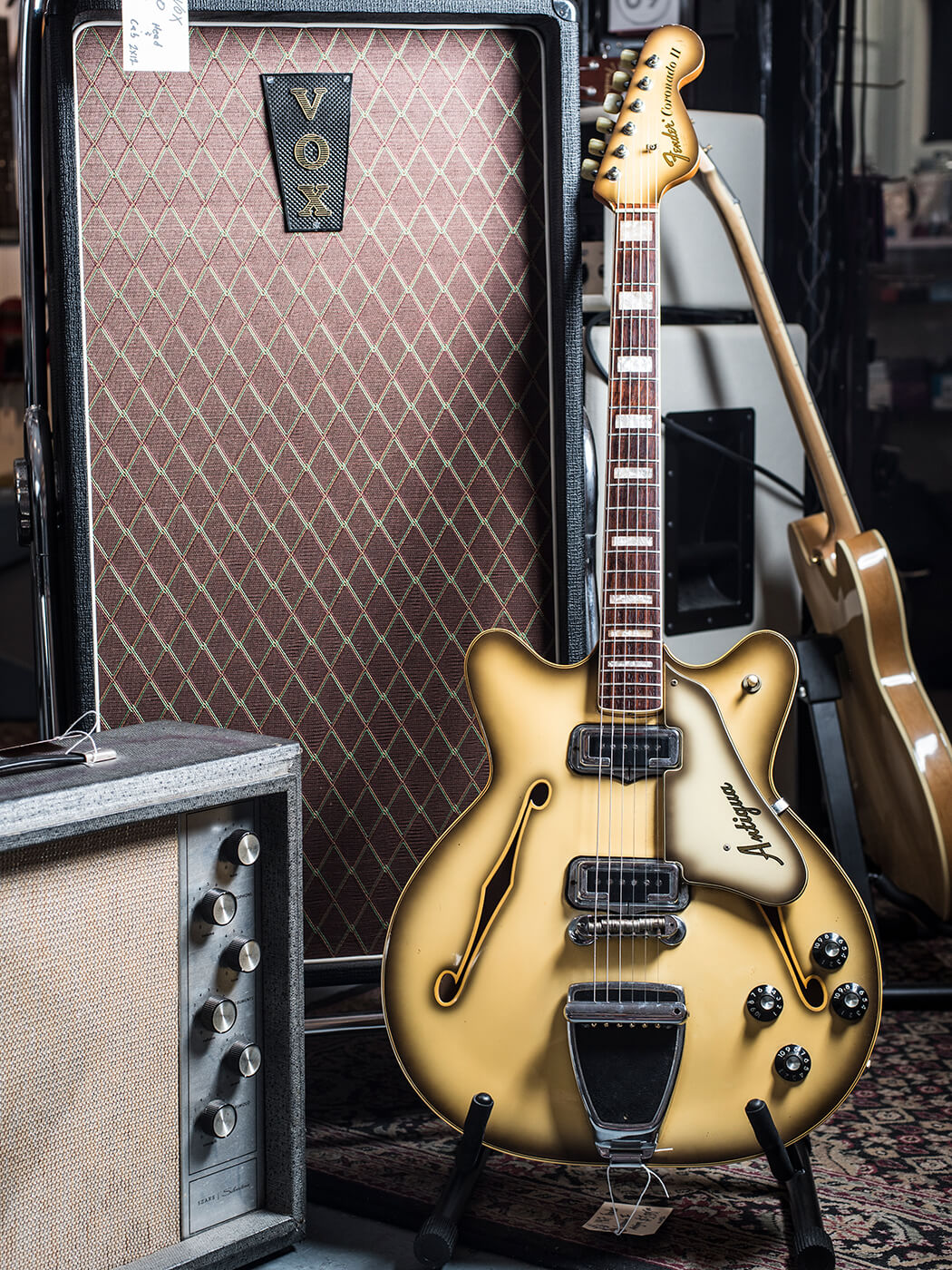
The first instrument we noticed when we walked into the shop was a gorgeous and largely unfaded 1967 Fender Antigua Coronado II. Brainchild of famed Rickenbacker designer Roger Rossmeisl, the Coronado represents Fender’s initial foray into hollowbody instruments, which also included the Rossmeisl-designed Montego Jazz guitar. While neither found an audience at the time, appreciation for the Coronado has grown considerably in recent years. This totally original example features that signature grey-to-cream finish with ‘Antigua’ proudly emblazoned on the pickguard, rare pearloid button Fender-Grover tuners, and the fantastic, optional Mustang-style vibrato.
Another beautiful example of a 1960s hollowbody underdog comes in the form of a sunburst Silvertone model 1429. The subtly flamed maple top and shaded sunburst finish makes for a striking combination, as does the unique triple on-off switching appointments on the model. A tortoiseshell headstock overlay, pickguard, and control plate contrasts nicely with the brown-to-yellow burst. This model features three rosewood spacer-mounted DeArmond Rowe Gold Foils with silver foil inserts, some of the best examples of that thrashy, trashy goodness that defines the foil pickup.
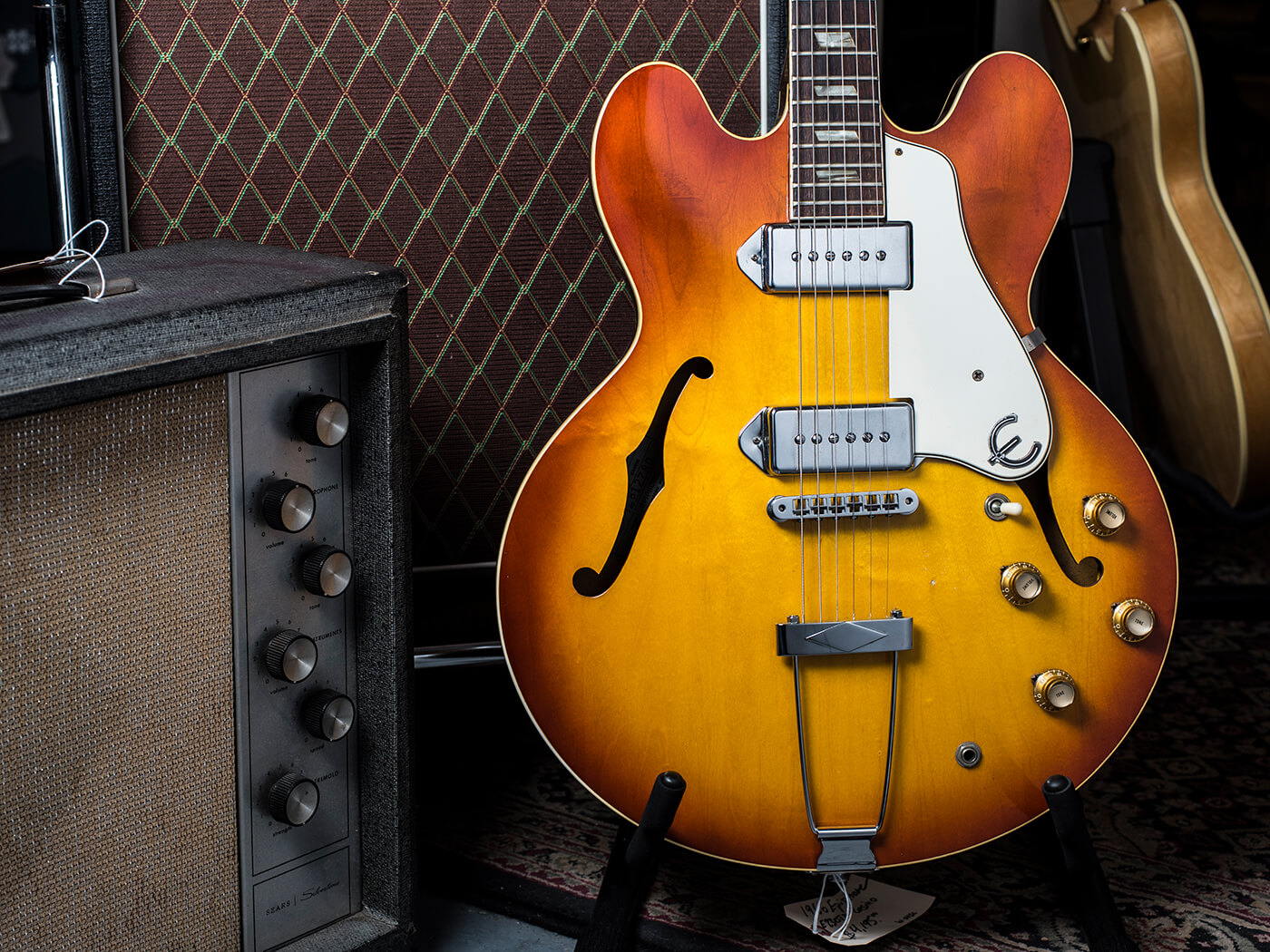
The Epiphone Casino is clearly a heavyweight in the hollowbody world, and this example is a knock-out. This lovely ’66 Casino is in excellent condition with a bright and clean cherry sunburst finish. The chrome is clean, and the only changed part we can detect is the later bridge.
Rounding out the store’s impressive selection is a well-worn 1930s Lyon & Healy parlour acoustic, which has had a fresh neck reset as well as a complete refret. It’s one hell of a player, with a sombre voice and years of stories left to tell. Note the sunken lacquer and rope-style binding. Also worth mentioning: a natural ’74 Fender Telecaster with original ‘F’ Bigsby.
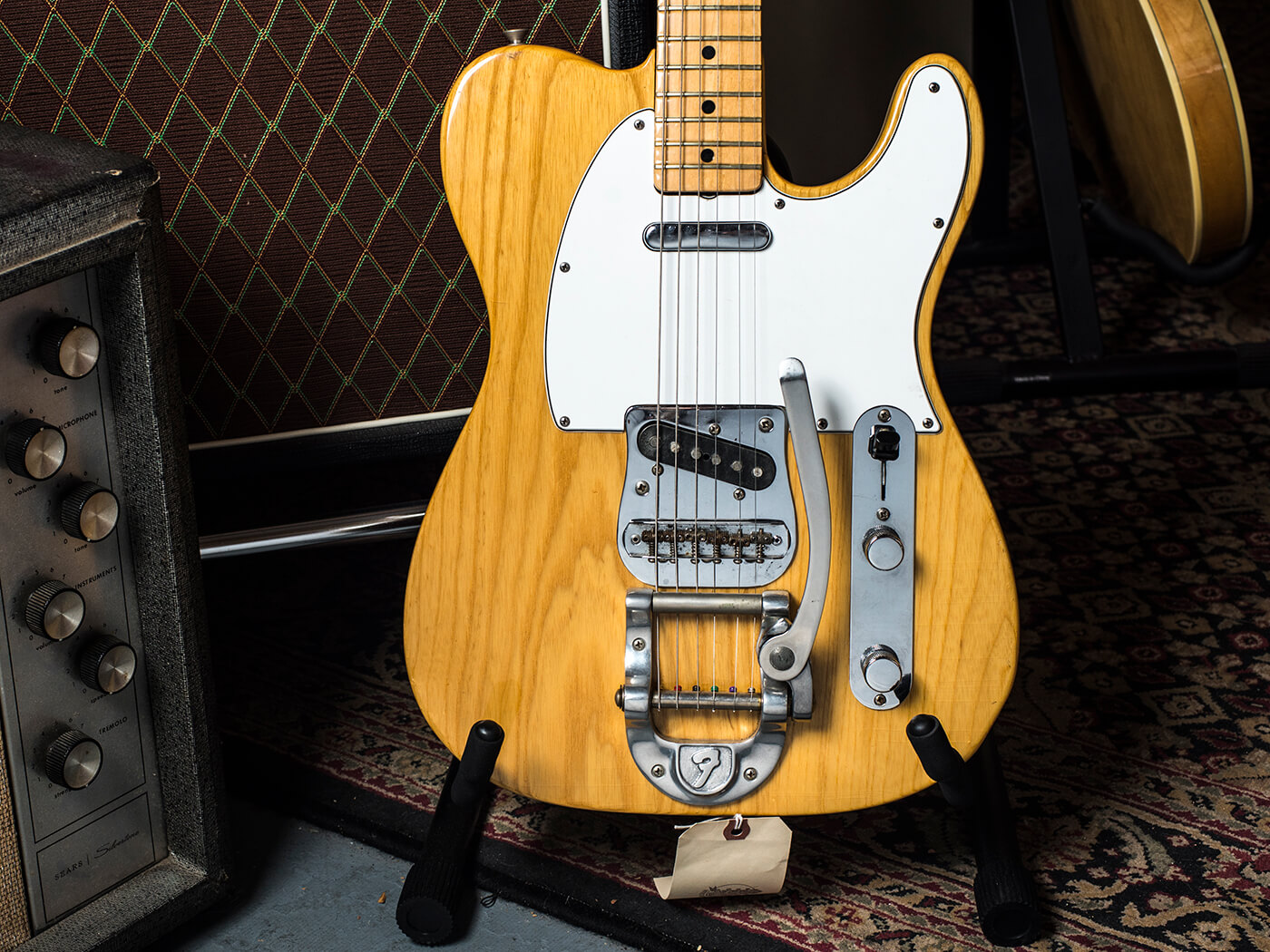
Truetone Music, Santa Monica
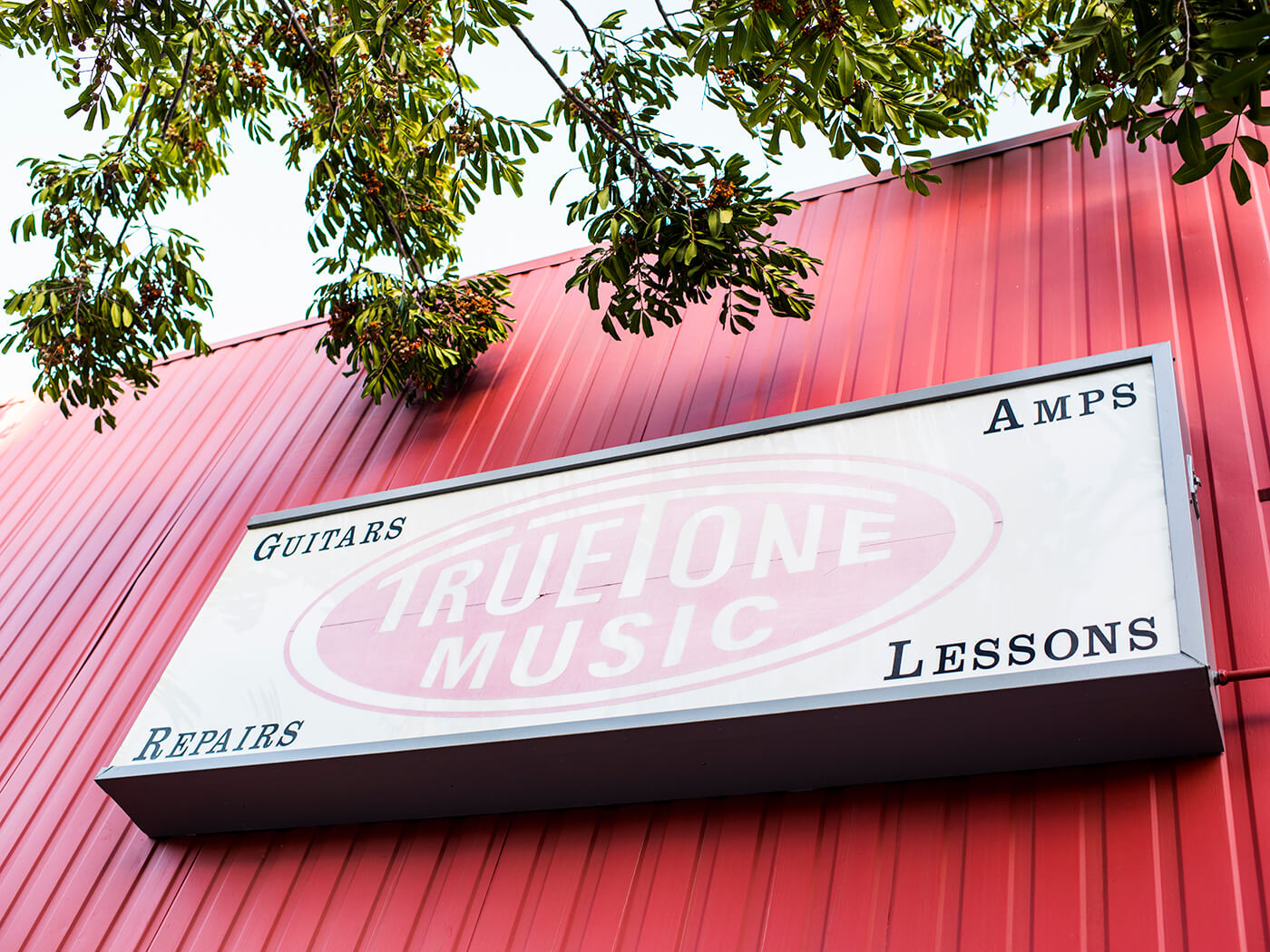
Should you be more interested in what’s fresh on the market, downtown Santa Monica’s Truetone Music will certainly scratch that particular itch. It’s a one-stop shop for top brands such as Fender, Gretsch, Danelectro, Orange, Ernie Ball, Supro, Rickenbacker, and PRS. In addition, Truetone has a huge selection of pedals and offers in-house lessons and repairs.
Inside, the retail space is huge with guitars lining every wall at least five rows up. To your left is the checkout counter, and behind that, the side of the shop where you’ll find higher-end US brands like Fender Custom Shop and Gretsch. To your right from the front door, you’ll find a wood-panelled section where most of the used and more affordable guitars hang, as well as bigger amplifiers of new and used varieties.
One of the first guitars to catch our eye is a shimmering Fano RB6 Standard in Candy Apple Red, a model that Fano refers to as “part British Invasion and part carve-top.” The lovely metallic finish and hardware show off the company’s ‘medium distress’ option, a tasteful layer of added ageing that lends a certain degree of complexity to the body’s German-style carves. Two P-90s, hardtail, three-way toggle, volume, and tone; what more do you need?
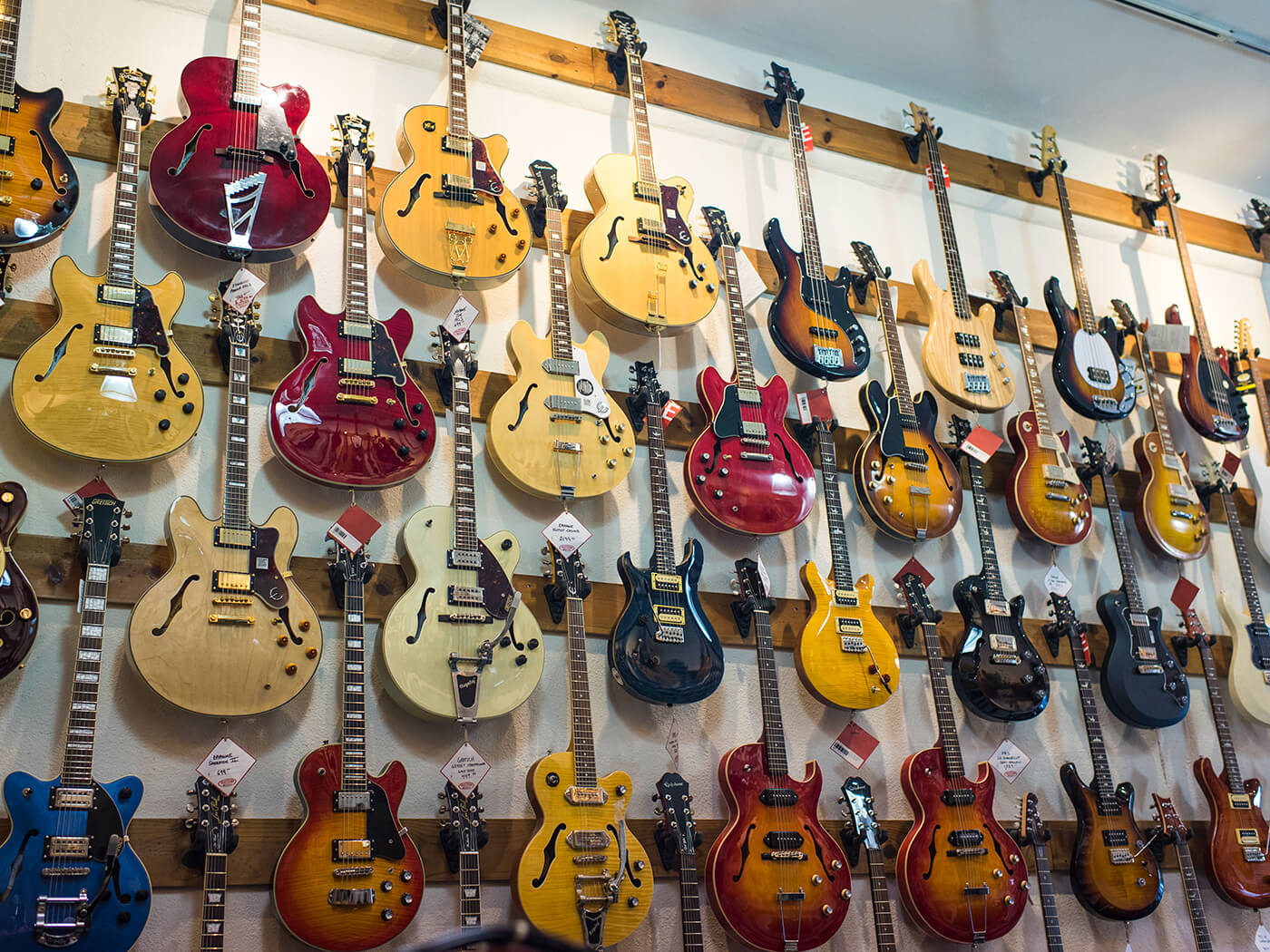
As mentioned, Truetone deals in Custom Shop guitars, which includes a gorgeous Gretsch White Penguin. Jaded as we guitar players can be, there’s still nothing quite so alluring as a gently faded white finish set against gleaming gold-sparkle drum-wrap binding. Rounding out the luxury package are Filter’Tron pickups, a Gretsch Bigsby, a Rocking Bar bridge – all in an aged gold finish.
But that’s not to say that all you’ll find at Truetone are high dollar commitments. On the contrary, there are plenty of great deals to be had, such as a black Fender Road Worn 50s Stratocaster. Factory aged and beautifully set up, this snappy little shredder remains a near-constant must buy. The Road Worn series featured an alder body with a relic’d nitrocellulose finish, Tex-Mex pickups, and a vintage-style maple neck with a 7.25-inch radius. If you were considering joining a Pink Floyd cover band, this would be the perfect place to start.
Truetone’s vintage selection includes an exceptional example of the Res-O-Glas era, a circa 1964 Supro White Holiday. This one has its original vibrato unit (which works perfectly, we might add) as well as the ‘Clear Tone’ pickup with Deco adornments. The three-way preset tone circuit is such a genius control scheme for the model, perfectly matched to the unique hollow sound of the fibreglass body. These guitars are such gems of the 1960s, it’s always a pleasure to play one.
While not quite vintage, the caché of Jerry Jones’ incredible guitars continues to rise. Jones was the Nashville-based maker of upmarket Danelectro-style guitars which were built to last and upgraded for stellar sound. They were always affordably-priced, but since shutting down in 2011, prices have risen steadily. One of Jones’ stranger models, the Guitarlin boasts a 25.25-inch scale and 31 frets, offering three and a half octaves of fun. The dual lipstick pickups capture each note in incredible detail, with a loud and robust tone to match. And the eye-catching seafoam finish makes this one a true stunner.
No matter what you’re into, the Greater Los Angeles area is sure to have it. Next time you’re in town, give yourself an extra day for trekking around to a few of our favourite shops…
For more buyers guides, click here.

